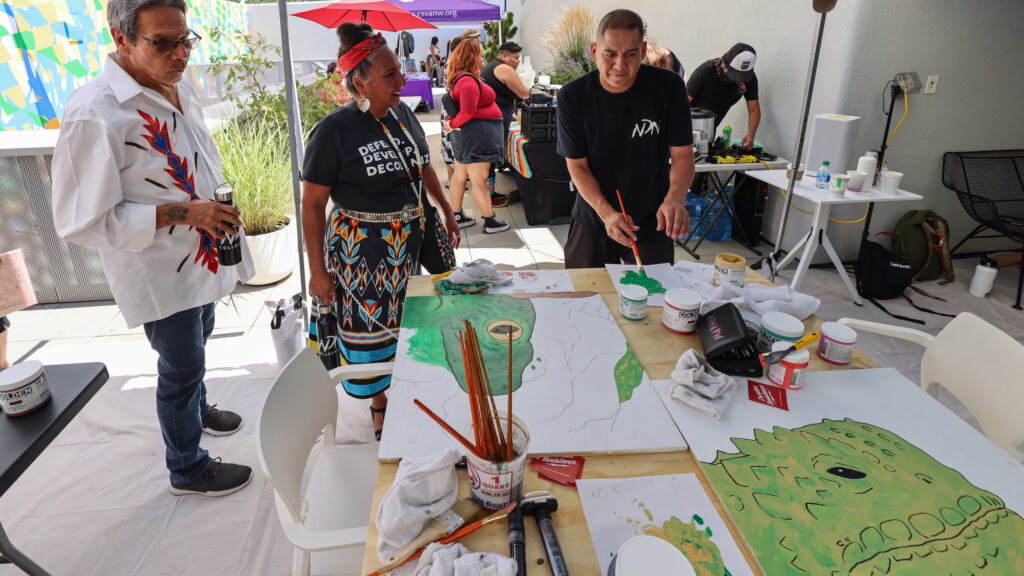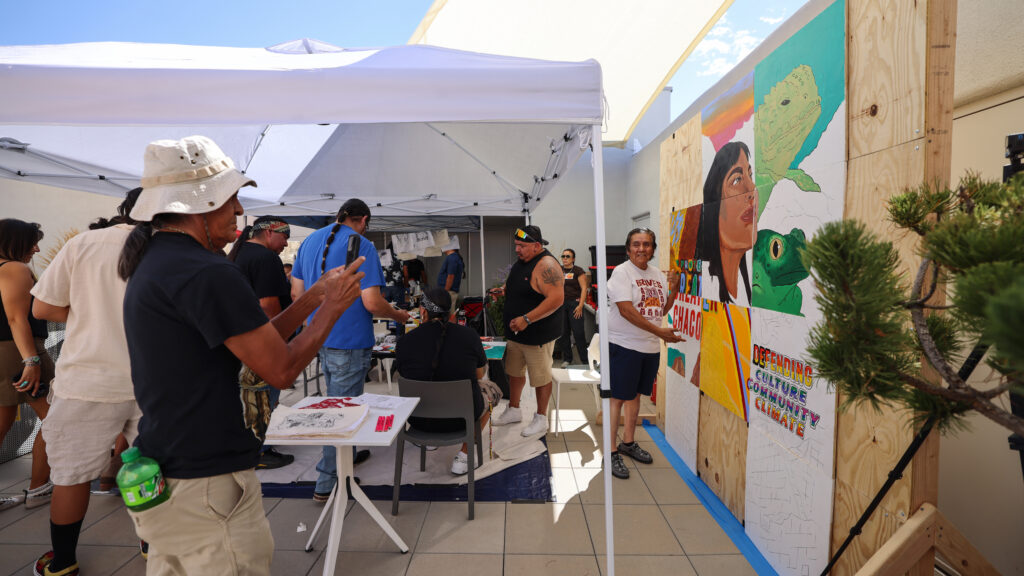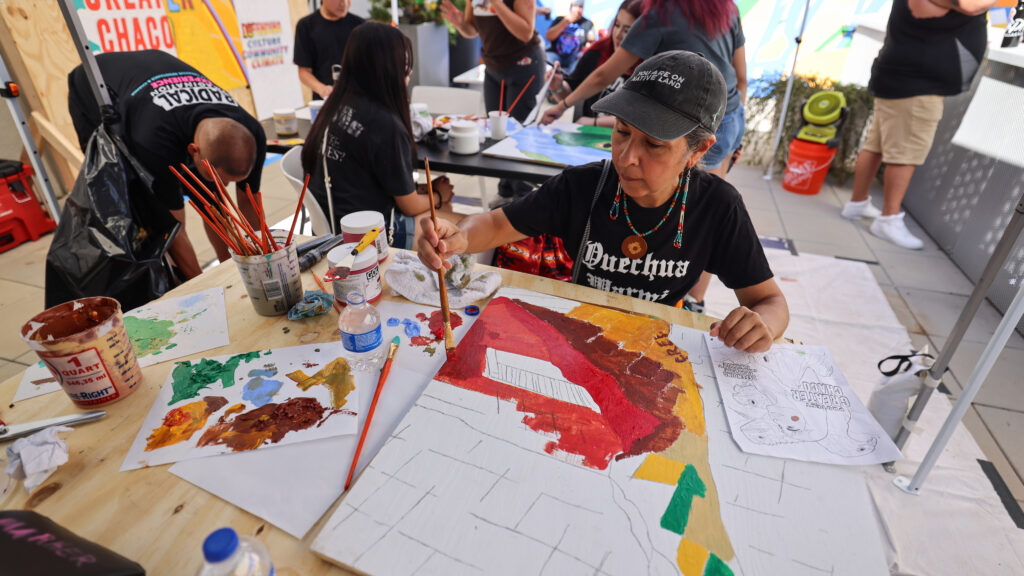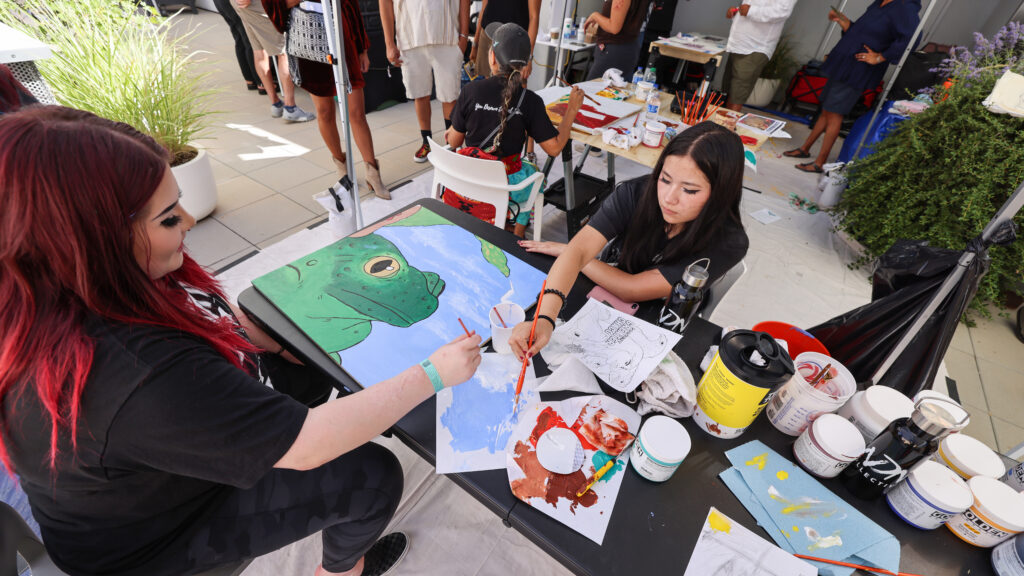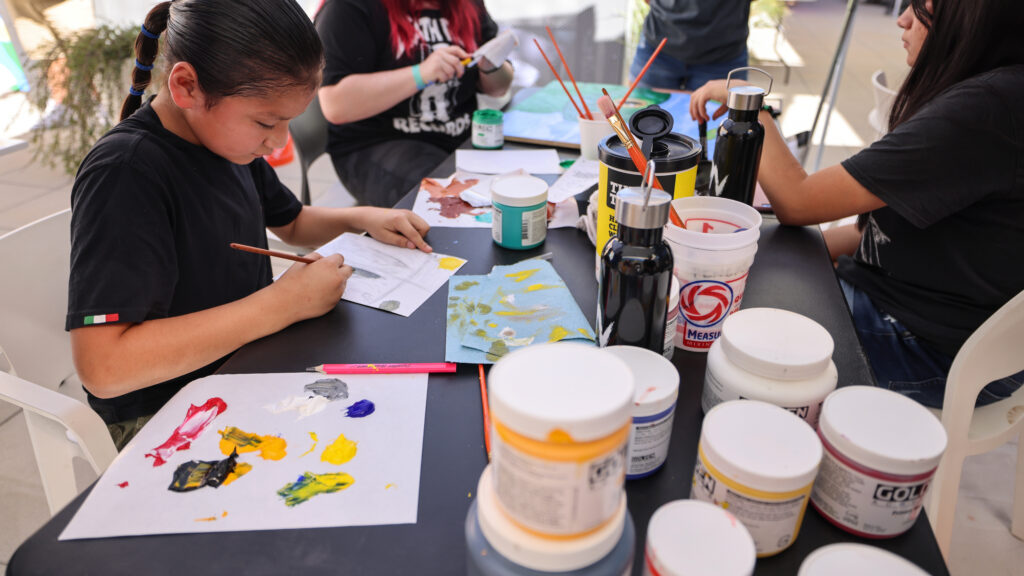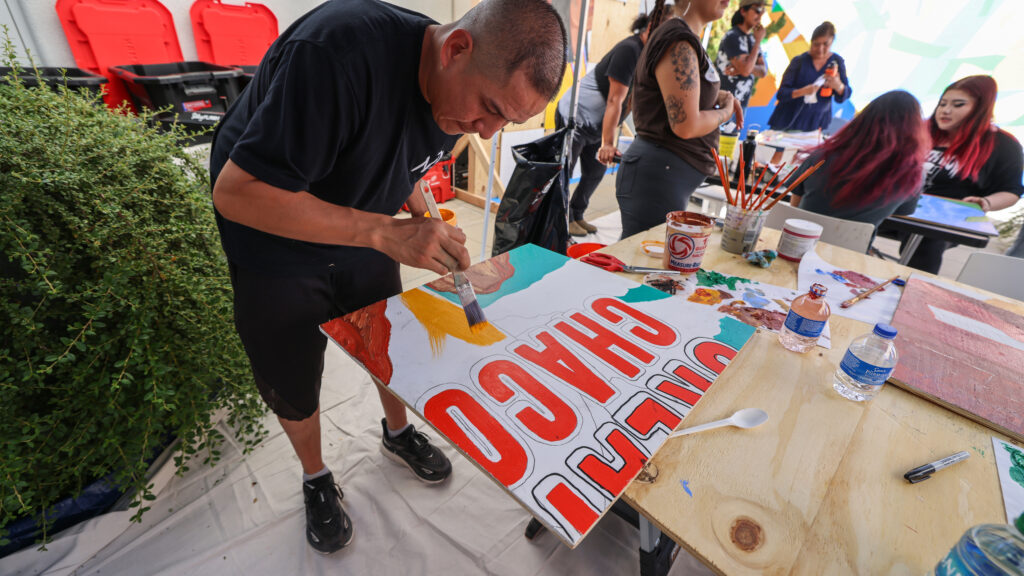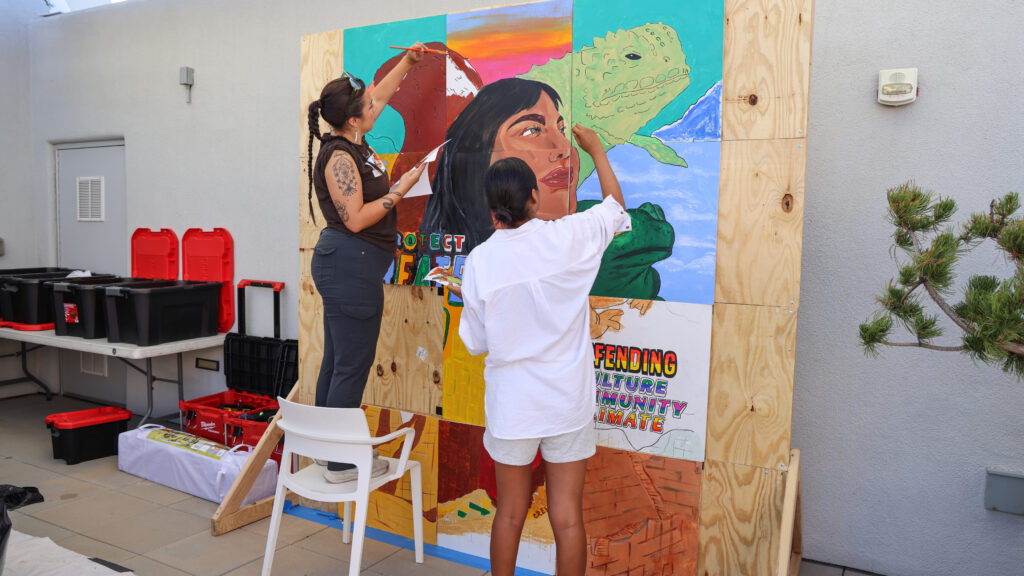On Friday, August 18th, on O’ga po’geh, ancestral lands of the Tewa People, otherwise known as, Santa Fe, New Mexico, the 2021 Radical Imagination Cohort converged at SITE Santa Fe for the Radical Imagination Experience– the Art of Creative Resistance and Change. Community members poured into the space, with nearly 300 attendees circulating the event throughout the day. The free, immersive experience, which included engaging panel discussions, hands-on art-making activities, art installations and presentations, culminated in a power-packed live performance in the evening.
The event accompanied numerous local events uplifting Indigenous artists in the region in anticipation of the weekend’s art market. The Radical Imagination Experience was designed to showcase the artists and storytellers of the Radical Imagination Grant, a now two-year grant for Indigenous creatives to work on a single project that addresses our society’s most pressing issues and pose solutions through art.
As a movement building organization, NDN Collective recognizes the necessity of art and creativity to expand the reach of grassroots organizing. This event was established as a grassroots alternative to the SWAIA Indian Market events, which can often feel removed from Indigenous movement narratives.
NDN Collective aimed to remove barriers to the art world and address issues of inaccessibility, welcoming all people to the Radical Imagination Experience to celebrate Indigenous organizing and resistance through art, storytelling and creativity, and the event was free and open to the public.
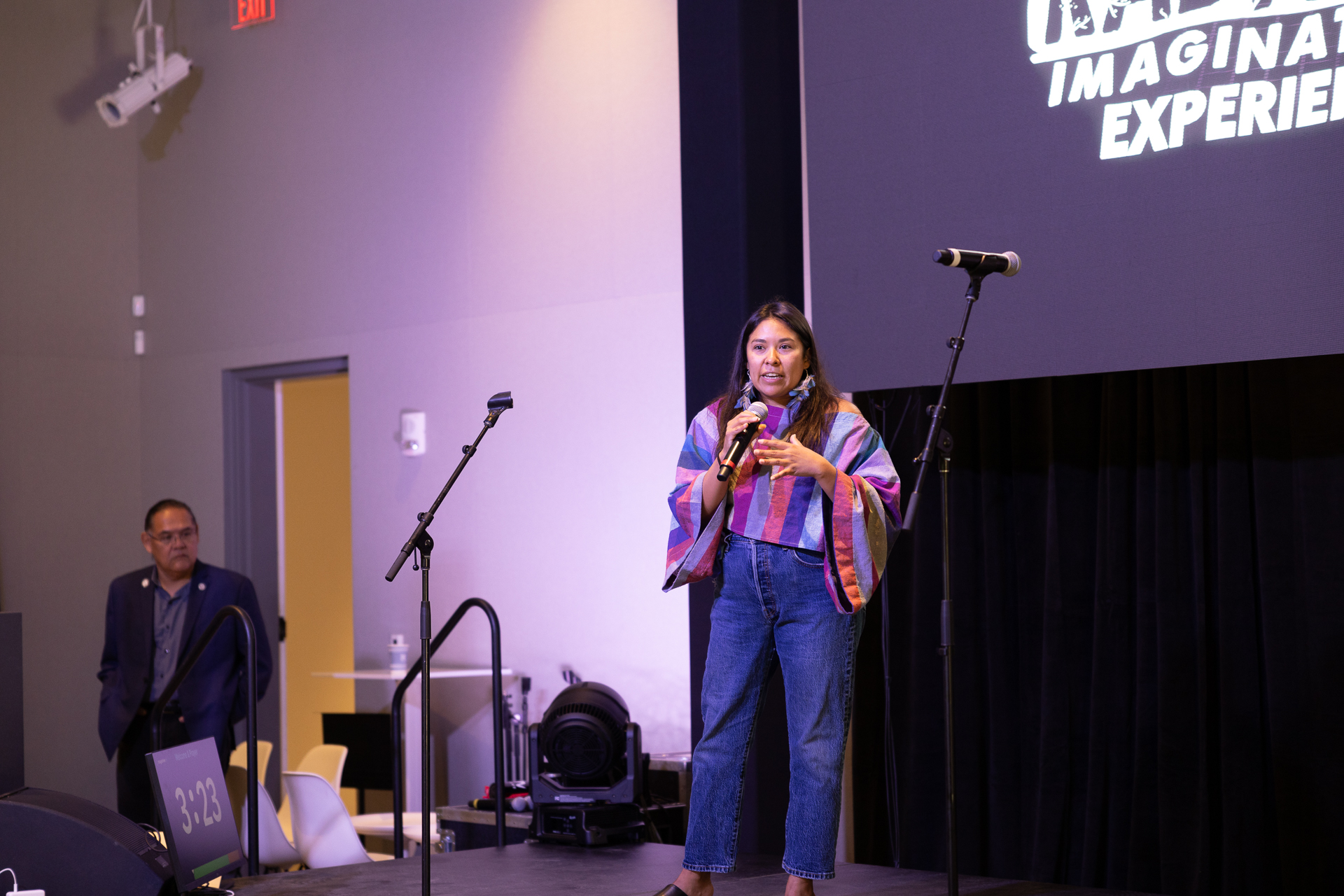
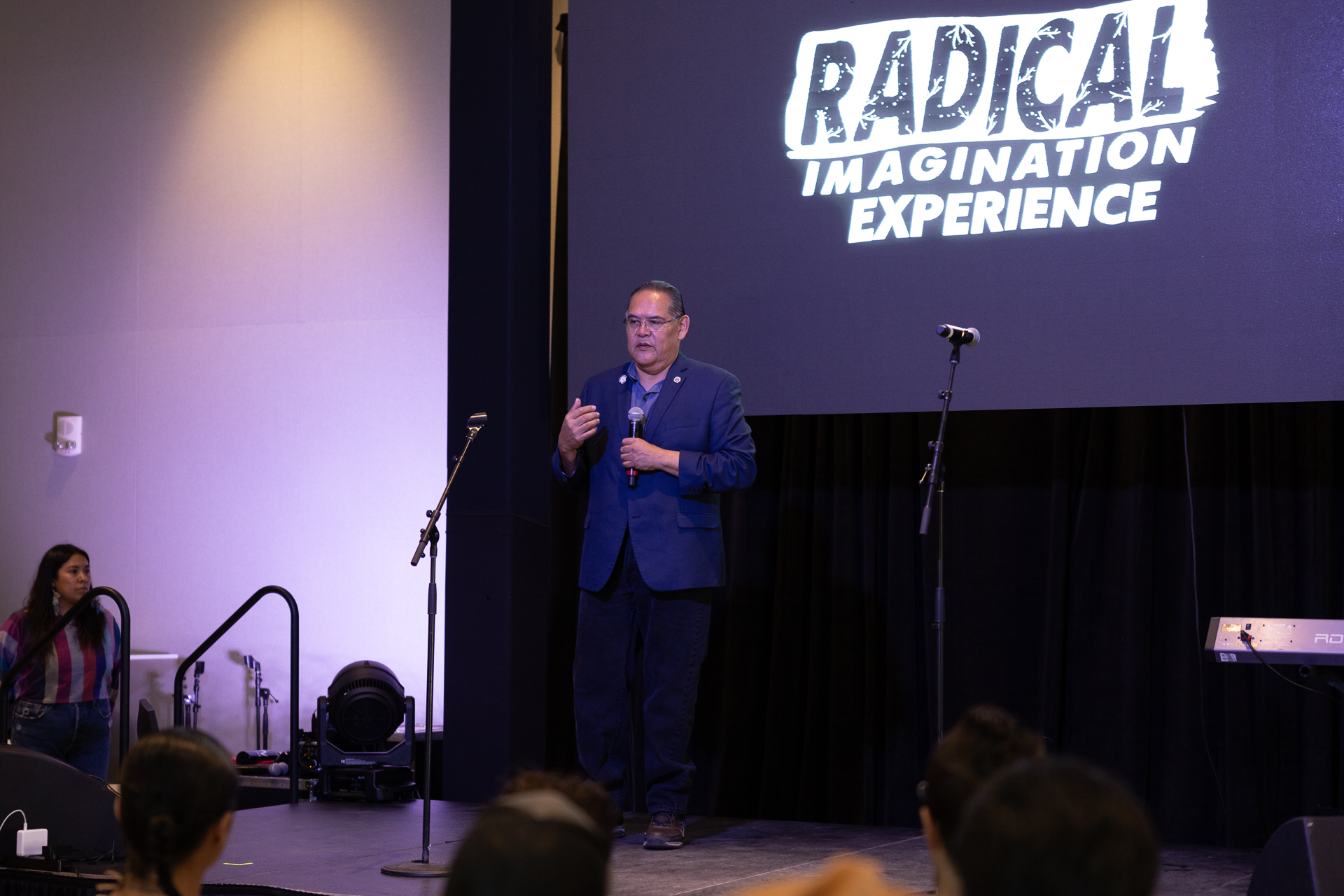
The day began with a few moments of grounding by NDN Collective Director of Policy and Advocacy, Jade Begay (Tesuque Pueblo, Diné, Southern Ute), who spoke of her experience in the amplification of art in the region and SITE Santa Fe’s continued efforts in uplifting Indigenous artists. Following her grounding, Jade welcomed Mark Mitchell, Former Governor of Tesuque Pueblo, for an opening prayer.
Sarah Manning (Shoshone-Paiute), NDN Collective Director of Communications, provided a warm welcome to those present in-person and live streaming from home. Attendees were welcome to grab a free NDN Collective water bottle and sign up for swag raffles before finding a seat. After sharing a brief history surrounding the Radical Imagination grant opportunity, an overview of the day’s agenda was provided and Sarah opened the floor for the first of several artist presentations that would occur throughout the day—Nora Noranjo Morse.
Nora is a Kha’P’O’ Tewa (Santa Clara Pueblo) contemporary artist who energizes Pueblo ancestral sensibility into her art using earth-based materials to create large public art installations.
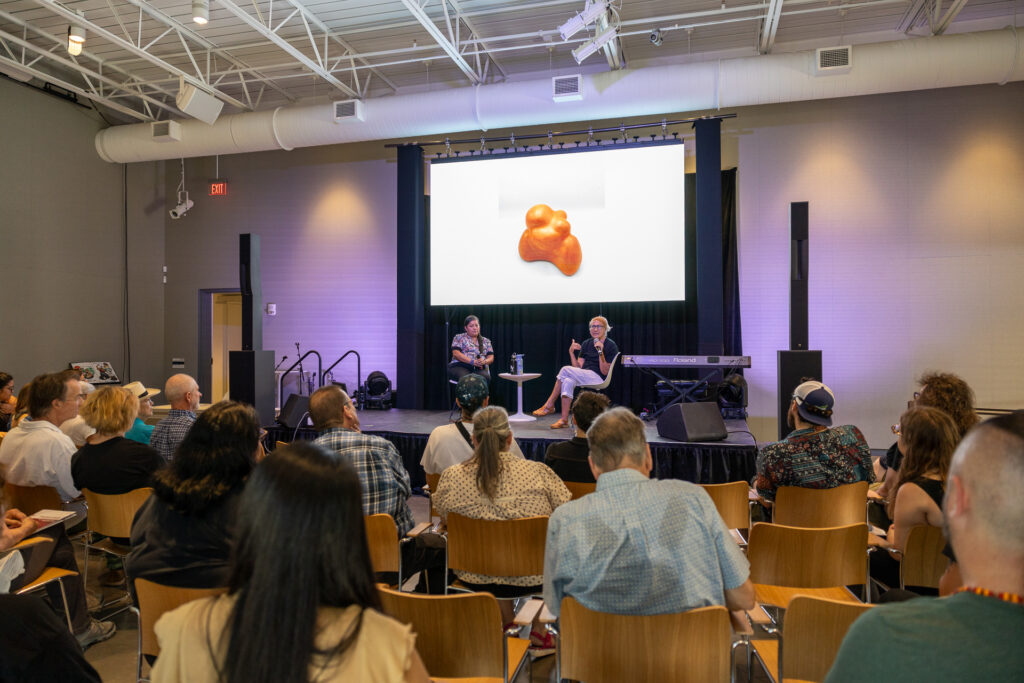
“The idea of working with discarded material has really been profound for me because what I realized is, in some ways, we are like this material. Indigenous Peoples have always been used and set aside and left to find our own way. I wanted to revive the idea of using materials, using our own ideas and putting them together to create something new,” Nora said.
Margarita Paz Pedro (Laguna, Santa Clara and Mexican), a recent graduate of IAIA, sat alongside Nora as both a student and participant of Nora’s Radical Imagination project entitled “Gather.”
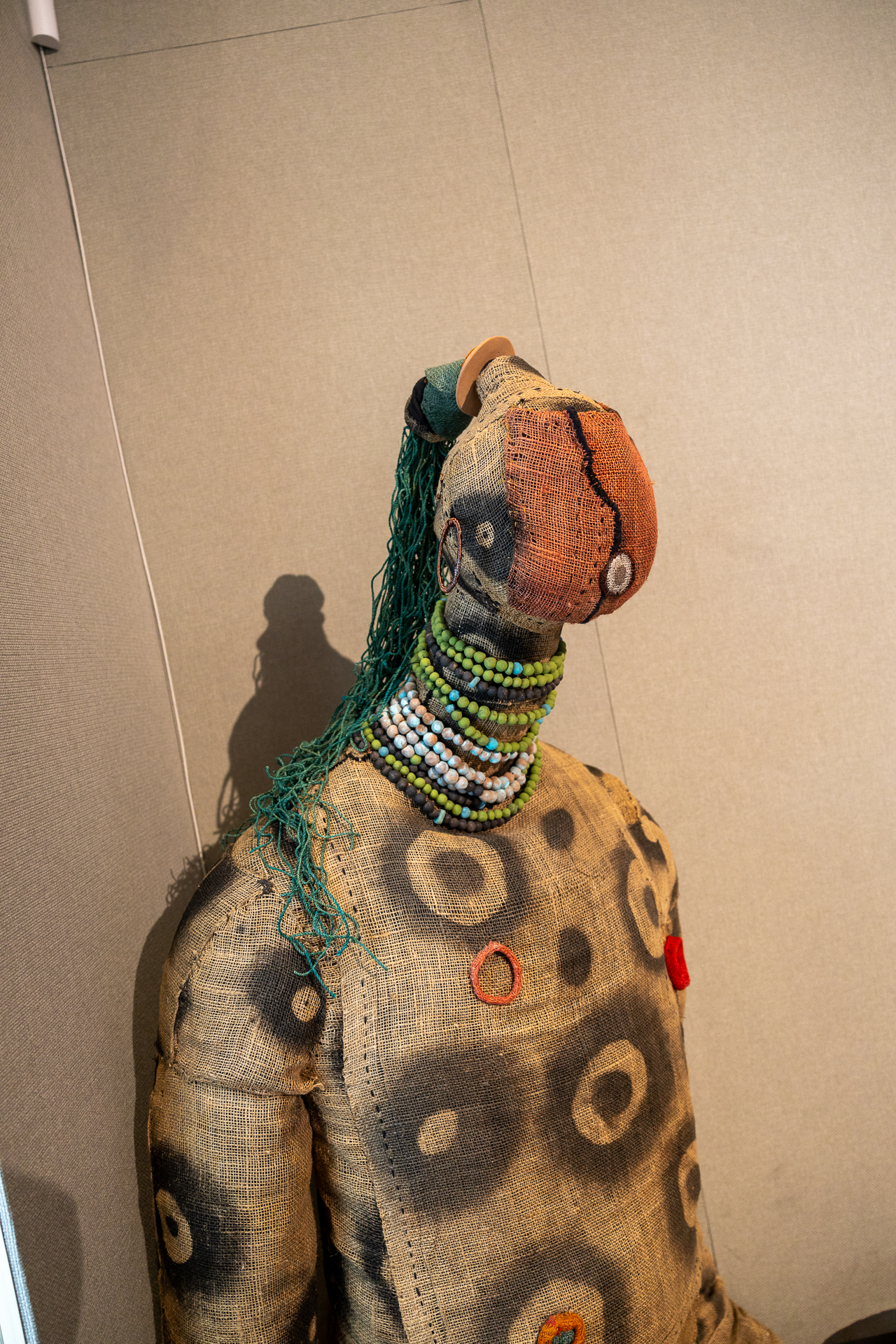
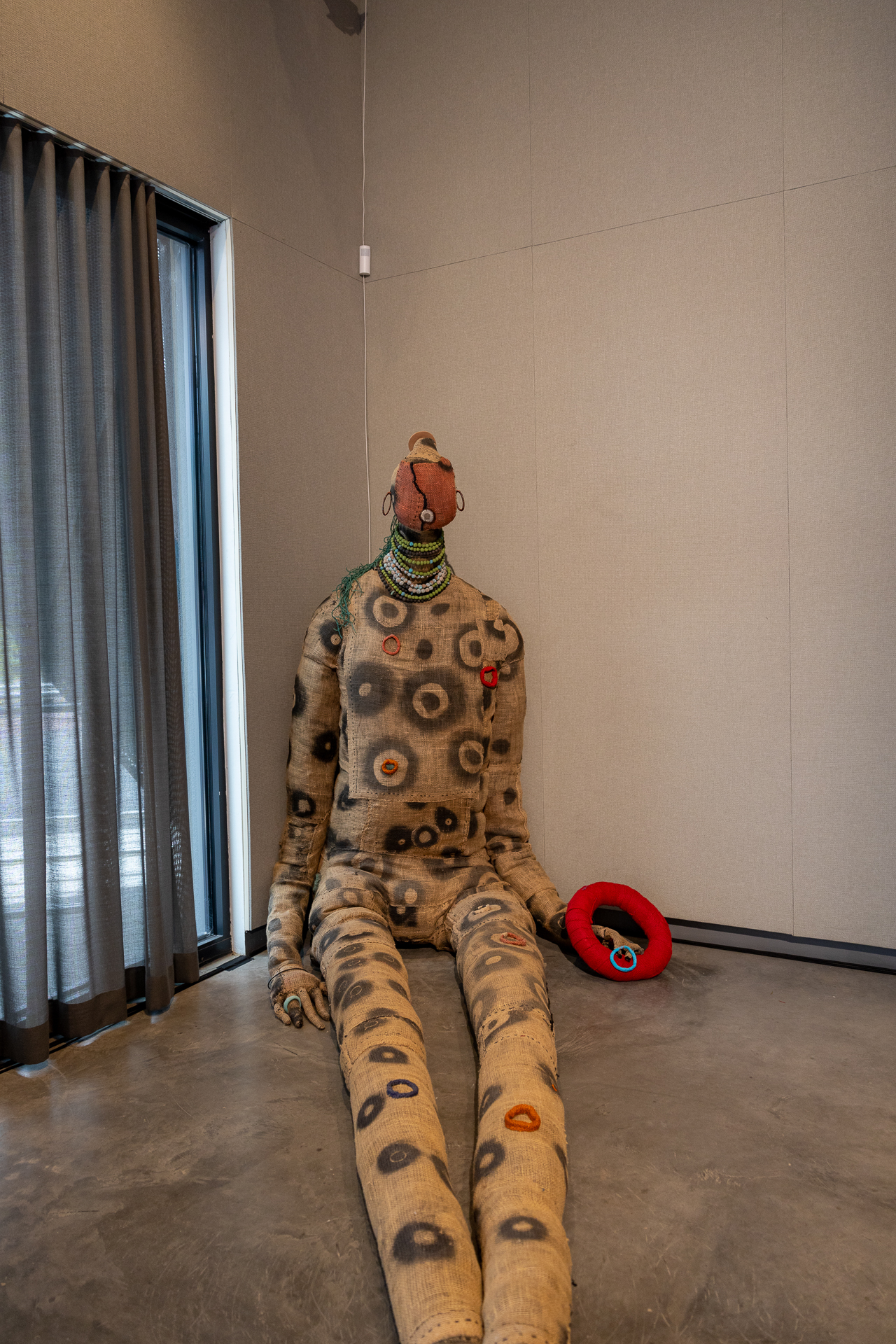
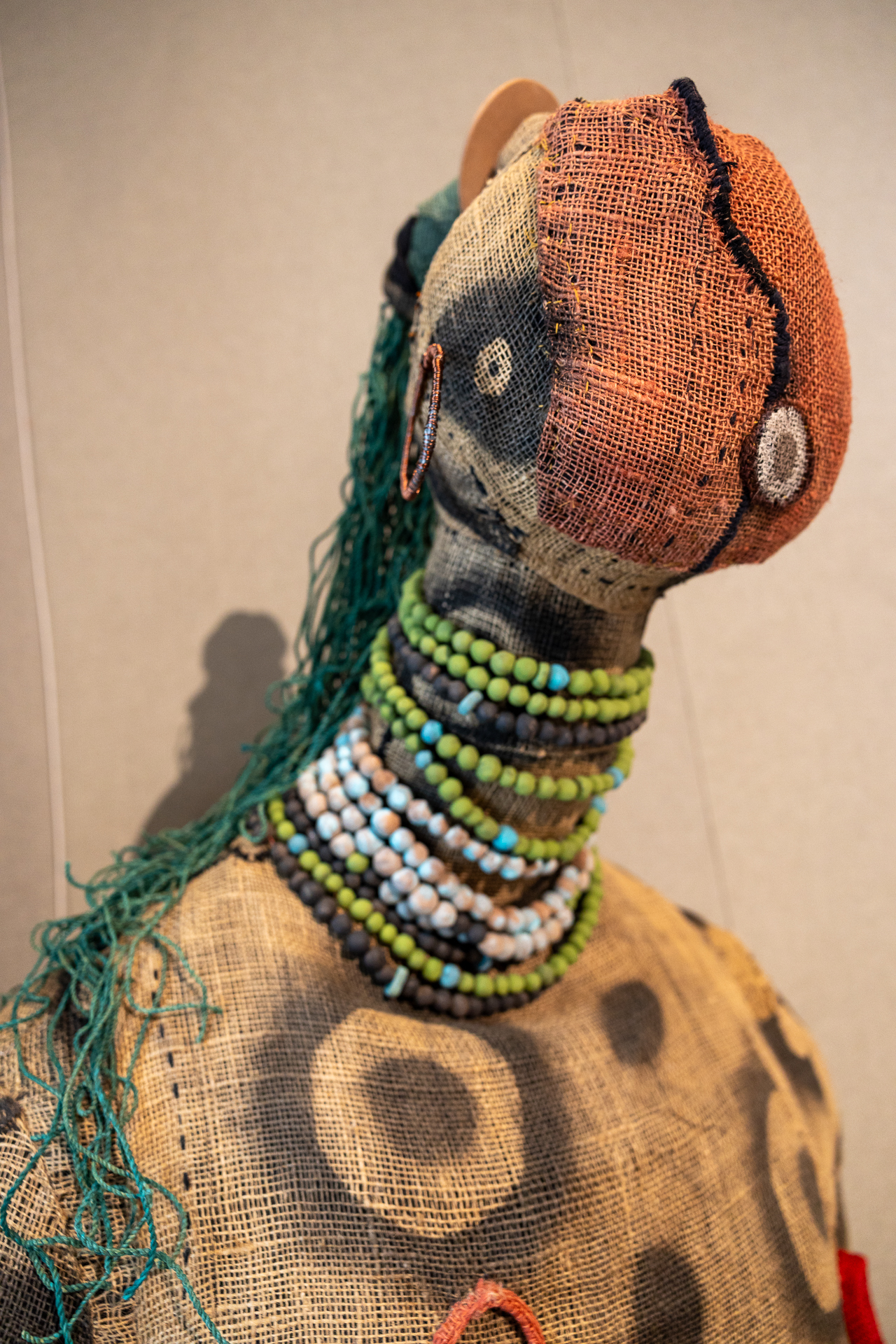
“‘Gather’ is a perfect model that can be used in all our communities, in the form of helping us heal, helping us communicate better and teaching the younger people in our communities to think out of the box. To find their way through these very important value systems that Pueblo people still have today and will continue to be very important to our survival,” Nora said.
Nora’s two burlap sculptures, titled “Healers from Some Other Place,” were carefully made from recycled materials and positioned at opposite ends of the venue space. Her Hopi relatives were the inspiration behind this piece.
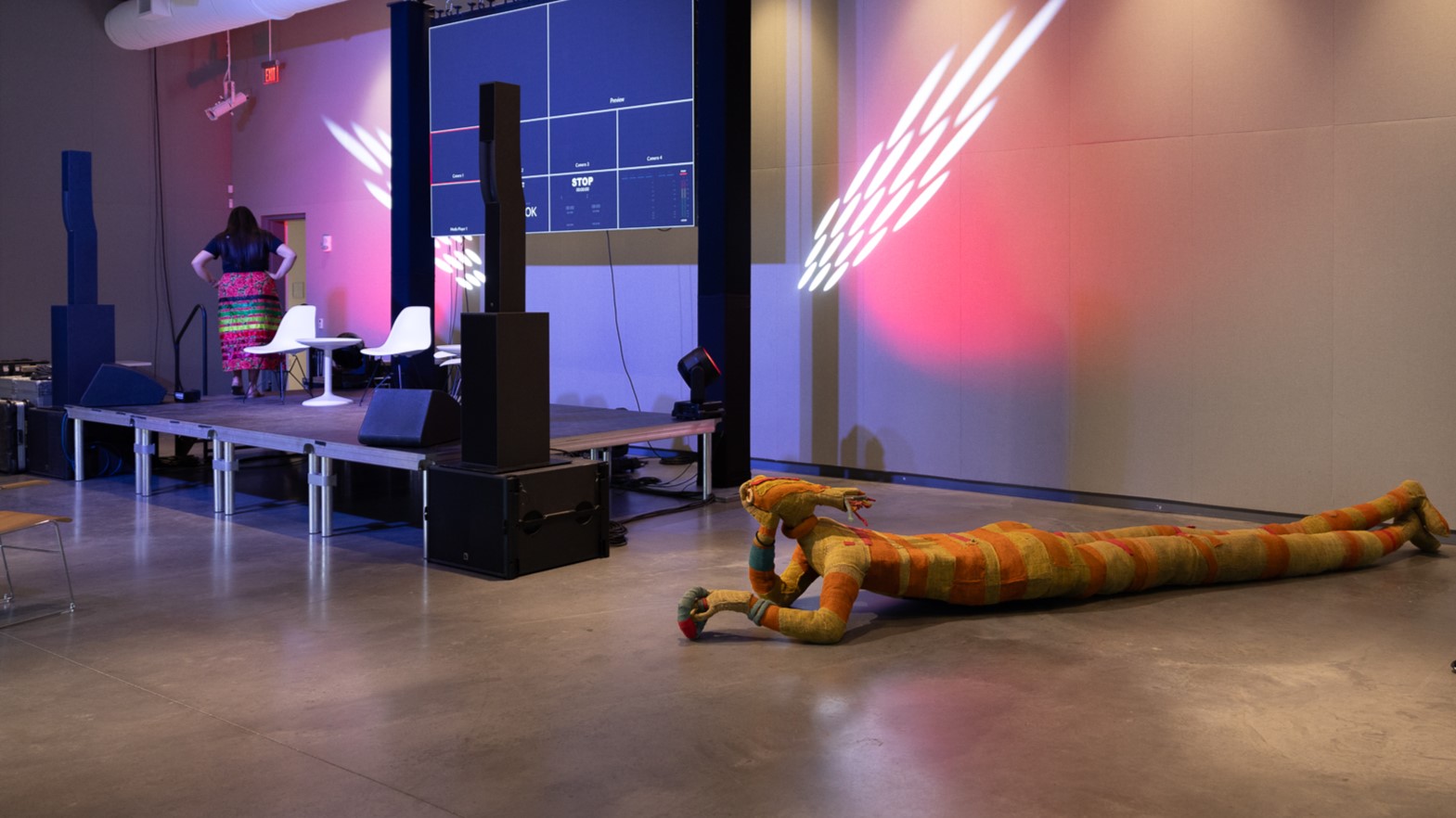
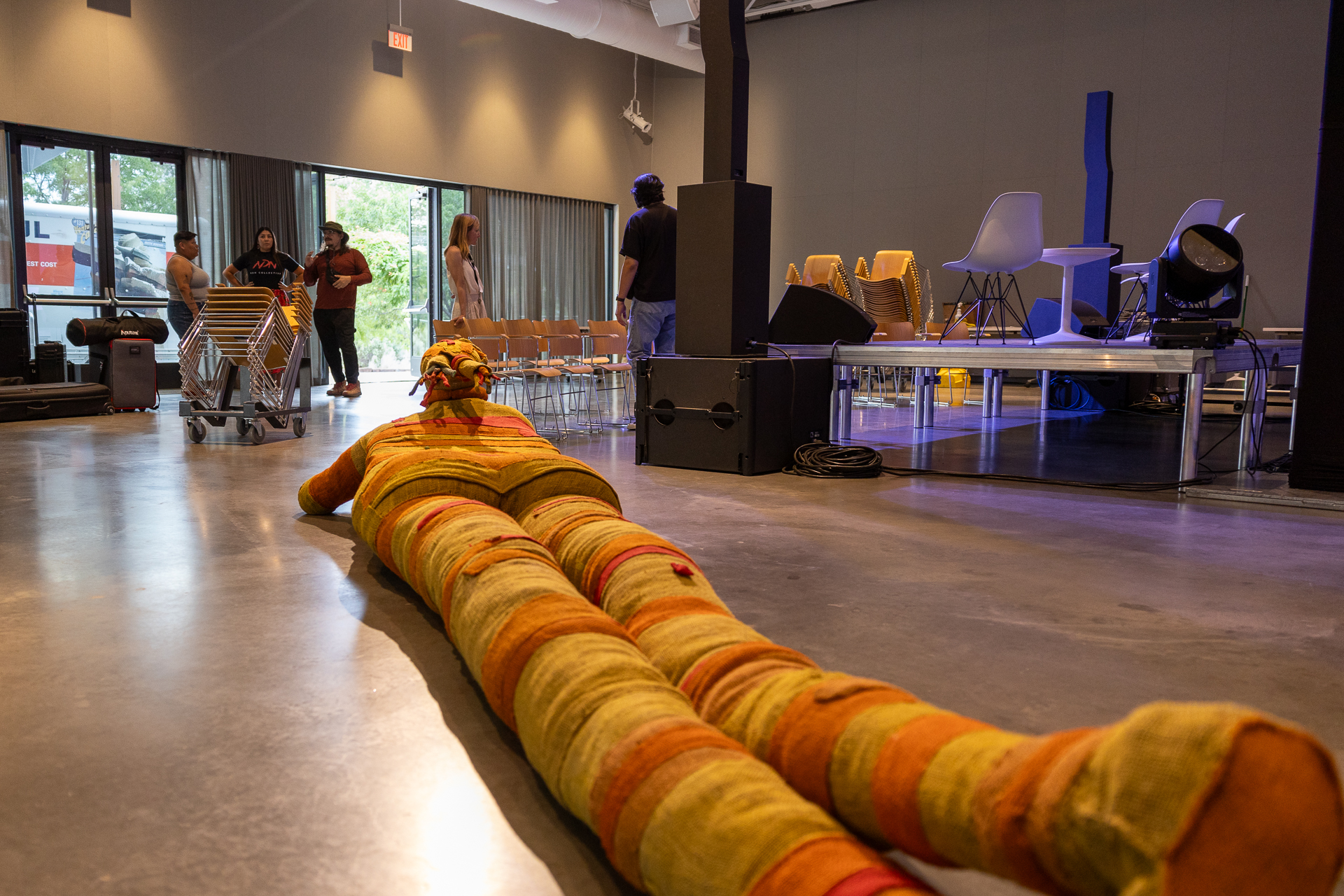
At the end of her presentation, Nora shared her excitement around an upcoming third piece being added to her “Gather” project that the public would be able to view sometime in the future. A more in-depth interview with Nora can be found at ‘Taking Our Ancestors with Us: Two Artists Cultivate Community Awareness through Transformative Art.’
It’s hard sometimes to be acknowledged as an Indigenous person so I often talk about Indigenous heritage because it’s easier to swallow for the people there
Nivialis Toro Lopez (TAÍNO), Borikua potter
As Nora and Margarita exited the stage, Sarah introduced 2021 Radical Imagination cohort member, Frank Waln, a Sicangu Lakota performer, speaker and writer, who opened the floor by grounding the audience in what it means to be a Native artist in today’s society and how these influences appear in his music.
“Whenever I write songs on the Native flute I feel like I really get to the root of where my culture influences my songwriting, because whenever I write a song on the flute there’s no English,” he said. “It kind of gets the colonization out of the way and I can just connect to this traditional instrument.”
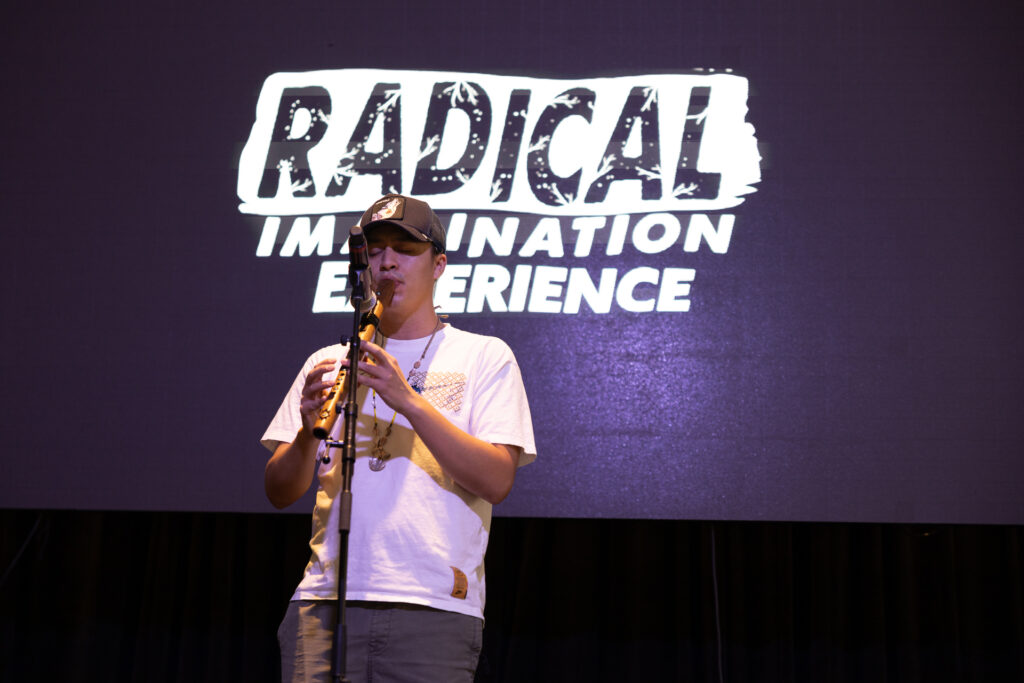
Frank would later perform original pieces entitled “Dreams,” “Hope,” “Born on the Rez,” and “What Made the Red Man Red,” with some songs accompanied on his flute or guitar.
During a brief intermission, Brandy Calabaza (Jicarilla Apache, Kewa Pueblo), NDN Collective Communications Associate, engaged with viewers tuning into the livestream, taking them to the venue’s second floor where NDN Collective’s Creative Resistance Team had prepared a mural and silk screenprinting opportunities for passersby to engage with.

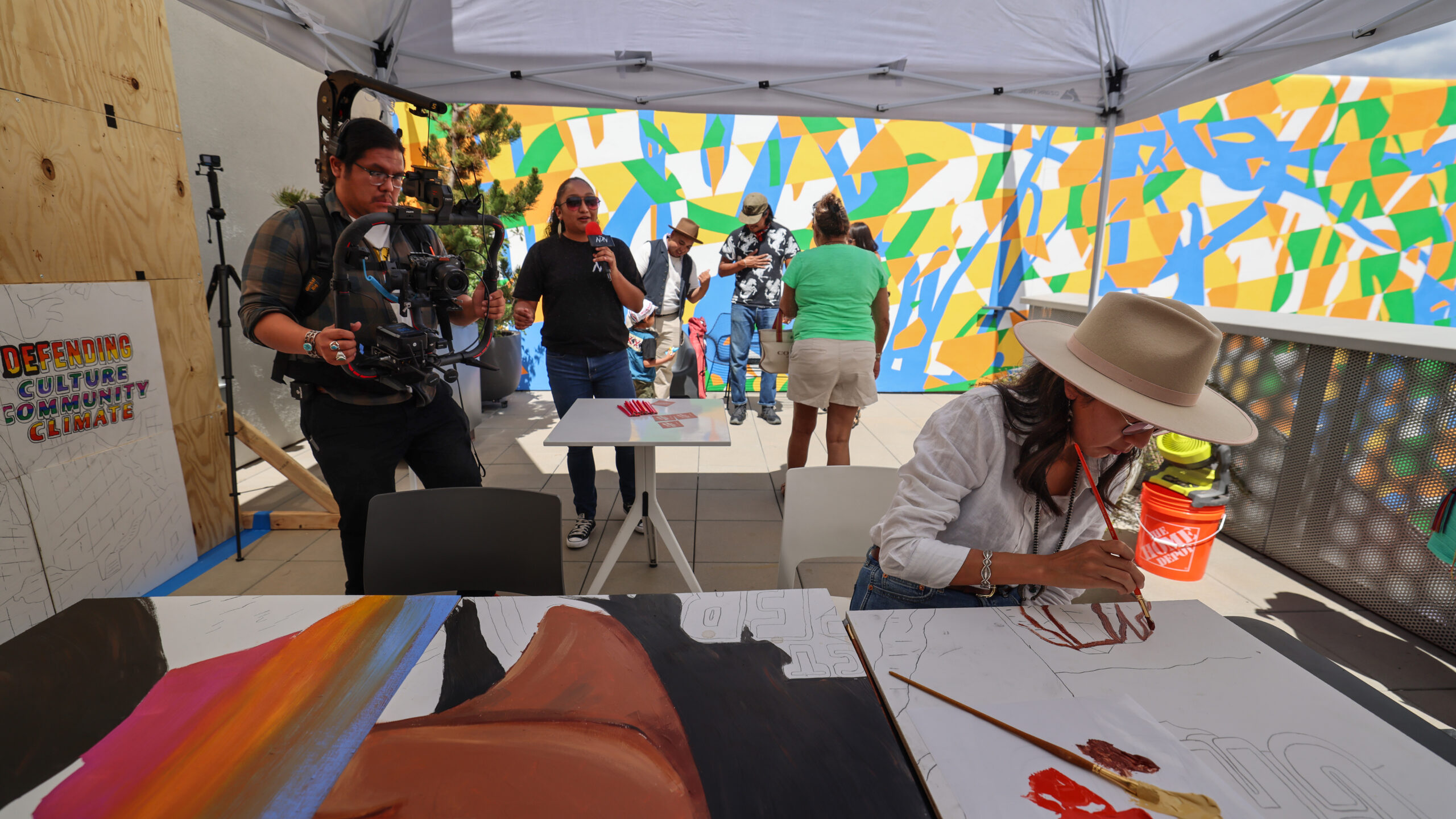
Jaque Fragua (Pueblo of Jemez), NDN Collective Creative Resistance Coordinator, shared more information about the team and why their work is so important, saying, “Giving the tools and the skills to our people. That may be painting, screen-printing, visual strategic planning – all under the guise of people power. It’s something we always like to talk about and express, not only in our work lives, but our personal lives. It’s about sharing these skills so when we’re long gone these skills continue to exist in our communities.”
One of images depicted in the individual panels of Jackie’s mural included Chaco Canyon, a region in New Mexico that had been approved by the Bureau of Land Management for over 500 new fracking wells without appropriate tribal consultation. Recently, the Biden Administration decided to withdraw public lands from new mineral development and establish a 10-mile buffer zone surrounding the Chaco Culture National Historical Park.
Audience members and visitors help the NDN Creative Resistance team complete their interactive art piece featuring an illustration from 2021 Radical Imagination Artist, Jackie Fawn. Photos by Richard Blue Cloud Castaneda for NDN Creative Resistance.
Earth Matters: Connecting Hands to Earth
After intermission, the first group of panel discussions featured Maya radio host/producer, Amadeo Cool May, and Nivialis Toro Lopez, a Borikua potter working on functional and sculptural ceramics.
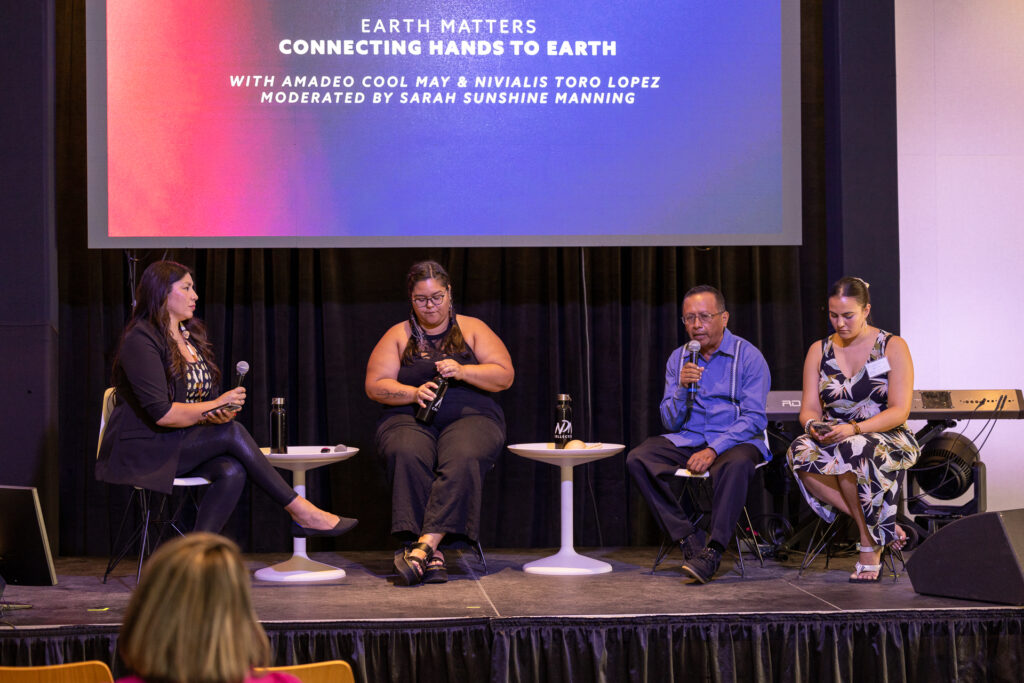
Q: What are some community challenges that you face as an artist?
Amadeo, responded by sharing his experience surrounding invisibility as a Maya person, while Nivia shared their experience as an Indigenous Taíno descendant and the ways they are perceived in Borikén today. “It’s hard sometimes to be acknowledged as an Indigenous person so I often talk about Indigenous heritage because it’s easier to swallow for the people there,” said Nivia.
Amadeo expanded upon the conversation by adding how he uses public broadcasting to uplift struggles in the community, culture and traditional Milpa farming. His Radical Imagination communications capsule project focused primarily on the sacredness of the Milpa and its connection to the Mayan community.
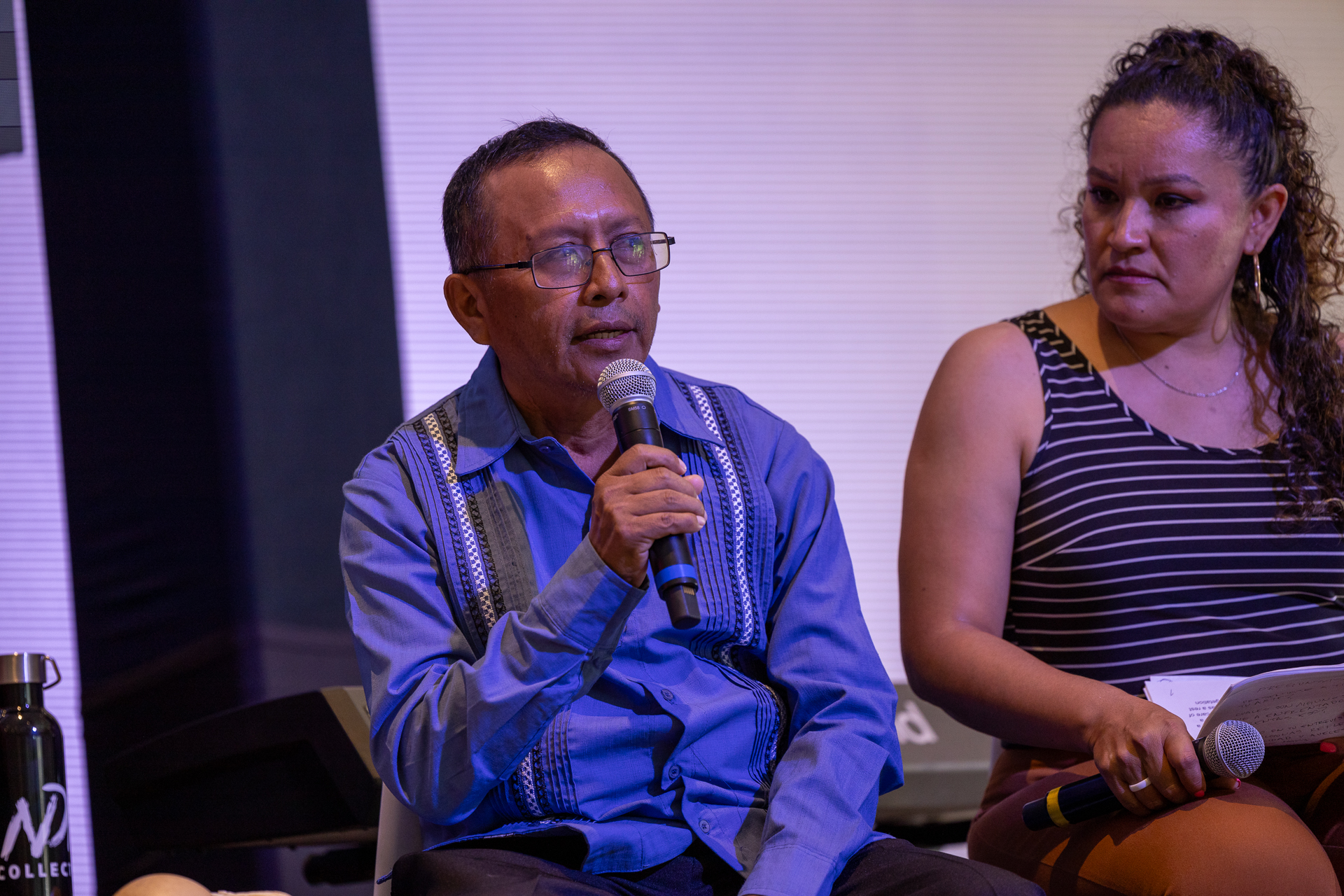
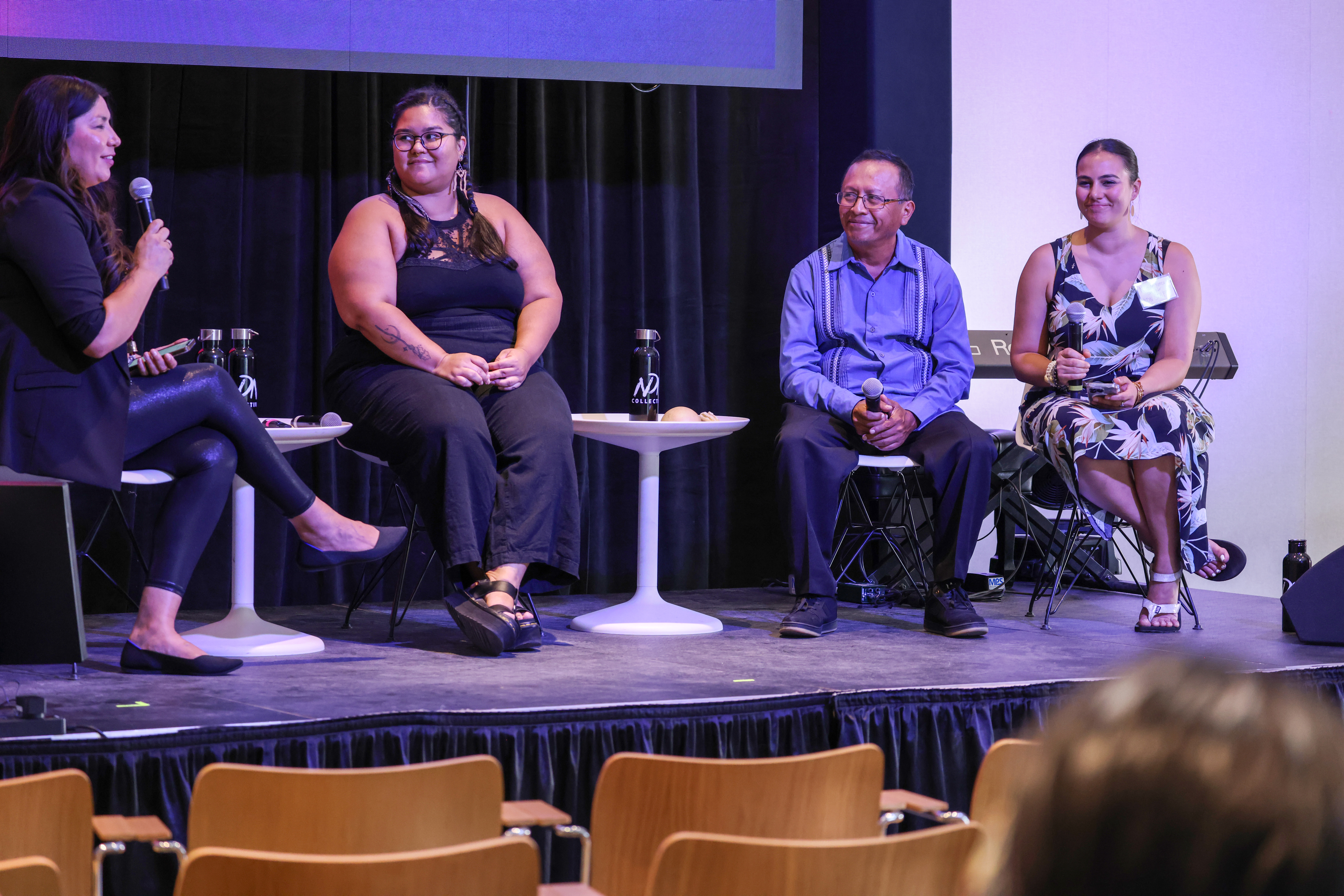
“I’m a communicator. Mostly the communication that we do is in the Mayan language and communicating to our listeners what we do everyday as Maya people. A lot of people are farmers or architects, construction workers, taxi drivers or artists. We offer the service and we use the Mayan language as our main vehicle,” said Amadeo, who has been working in broadcast and storytelling for 30 years.
Nivia presented their claywork and spoke to the challenges of navigating COVID-19 as an artist, noting how artists are first responders who also deserve care.

“I started working with clay in 2018 because I wanted to find a way to work with my generalized anxiety,” Nivia said. “I found a passion. I really connected with the medium. I understood that I was also connecting with Mother, through clay. I studied comparative literature and have both a Master’s Degree and a Bachelor’s Degree and my goal was to become a professor. I wanted to do a PhD, but then I got disappointed with academia, so I decided to keep on engaging with clay.”
To view more in-depth interviews with Amadeo and Nivia, visit ’We are Here!’: Indigenous Art and Expression from Opposite Ends of Turtle Island and ‘Taking Our Ancestors with Us: Two Artists Cultivate Community Awareness through Transformative Art.’
Giving the tools and the skills to our people. That may be painting, screen-printing, visual strategic planning – all under the guise of people power. It’s about sharing these skills so when we’re long gone these skills continue to exist in our communities.
Jaque Fragua (Pueblo of Jemez), NDN Collective Creative Resistance Coordinator
Digital Storytelling with Dimi Macheras
Sarah welcomed Dimi Macheras, a comic book illustrator and Chickaloon Village Tribal Citizen and his co-creator, Casey Silver, who is also co-founder of their company.
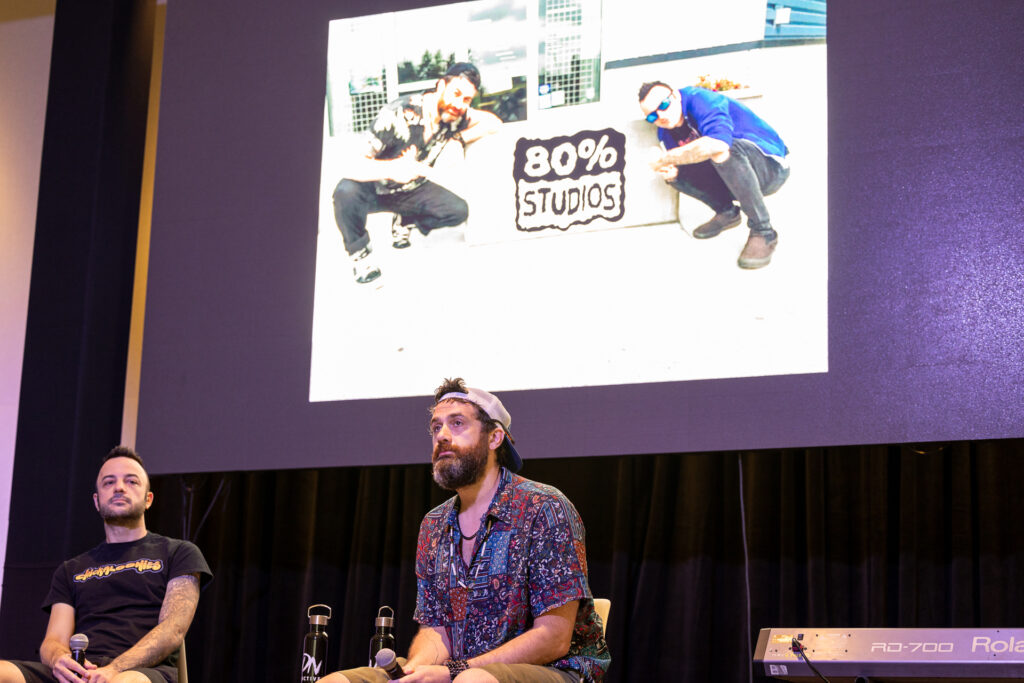
“A huge part of 80% Studios and art in general is collaboration. Making comic books, and I’m sure many art forms can relate, it’s a lot. Doing something like comic books from the ground up – art to writing, even figuring out how to get it printed, it’s a lot to learn and I’m lucky that I have someone to do this with me,” said Dimi.
Dimi and Casey expanded on their collaborative project “Chickaloonies” and its storyline, characters, traditional elements and Dimi’s cultural and personal inspirations for the comic. They emphasized the power of oral language and the skill of storytelling that the main characters aspire towards, looking to the Grandmother character for guidance.
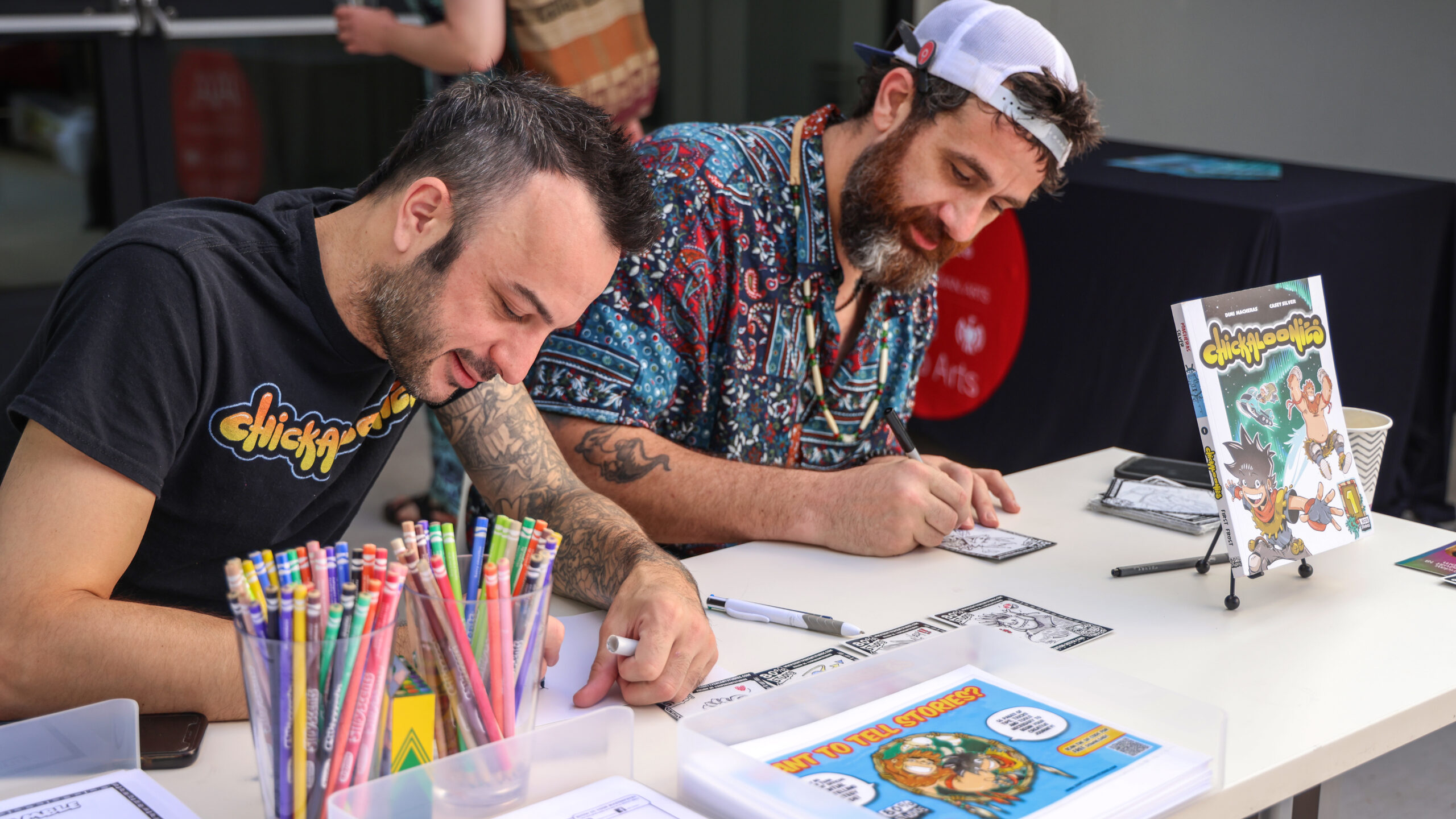
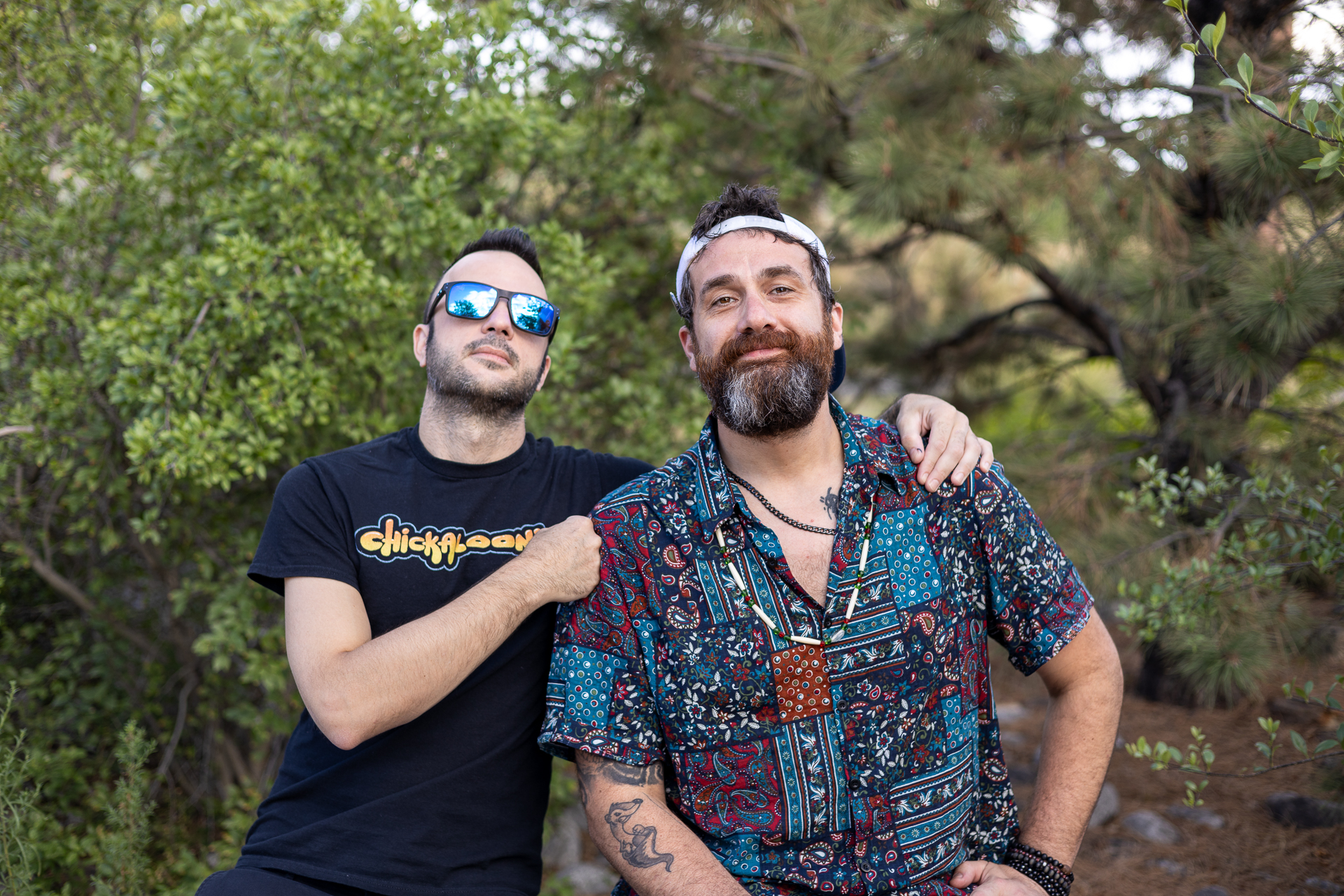
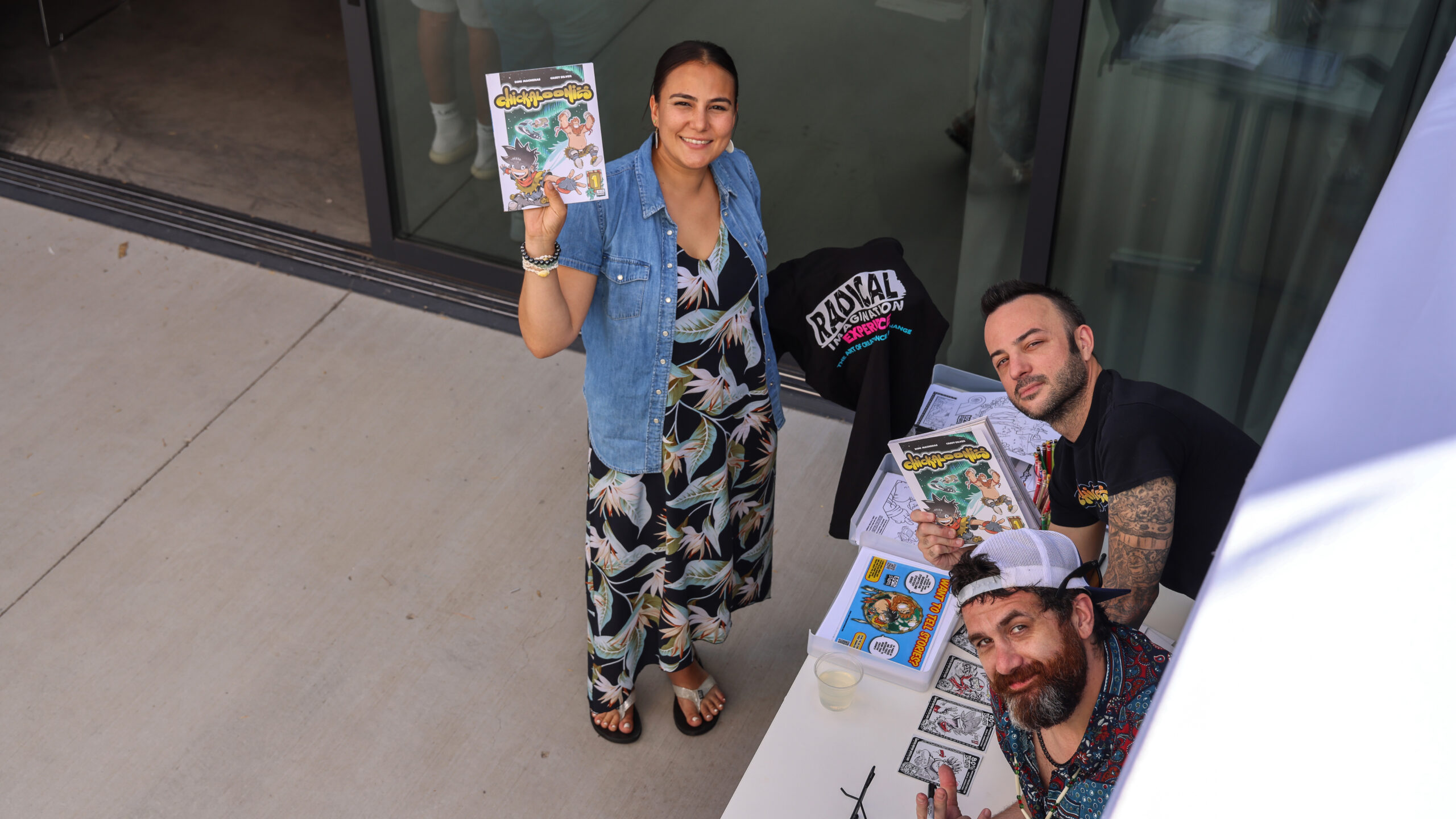
“My Grandma is ‘Grandma’ in the book. She’s my personal hero and she’s now a hero in the book. Growing up, Grandma was very important in our community. Some of my first memories were hearing stories from Grandma. These are like core memories to me. When I was a baby, hearing Grandma tell us the Ya Ne Dah Ah stories. It’s called ‘ancient teachings,’” said Dimi.
In their communities, both Dimi and Casey hold workshops that allow participants to create their own comic books, characters, and comic panels.
Indigenous Art as Resistance: Visualizing Indigenous Narrative
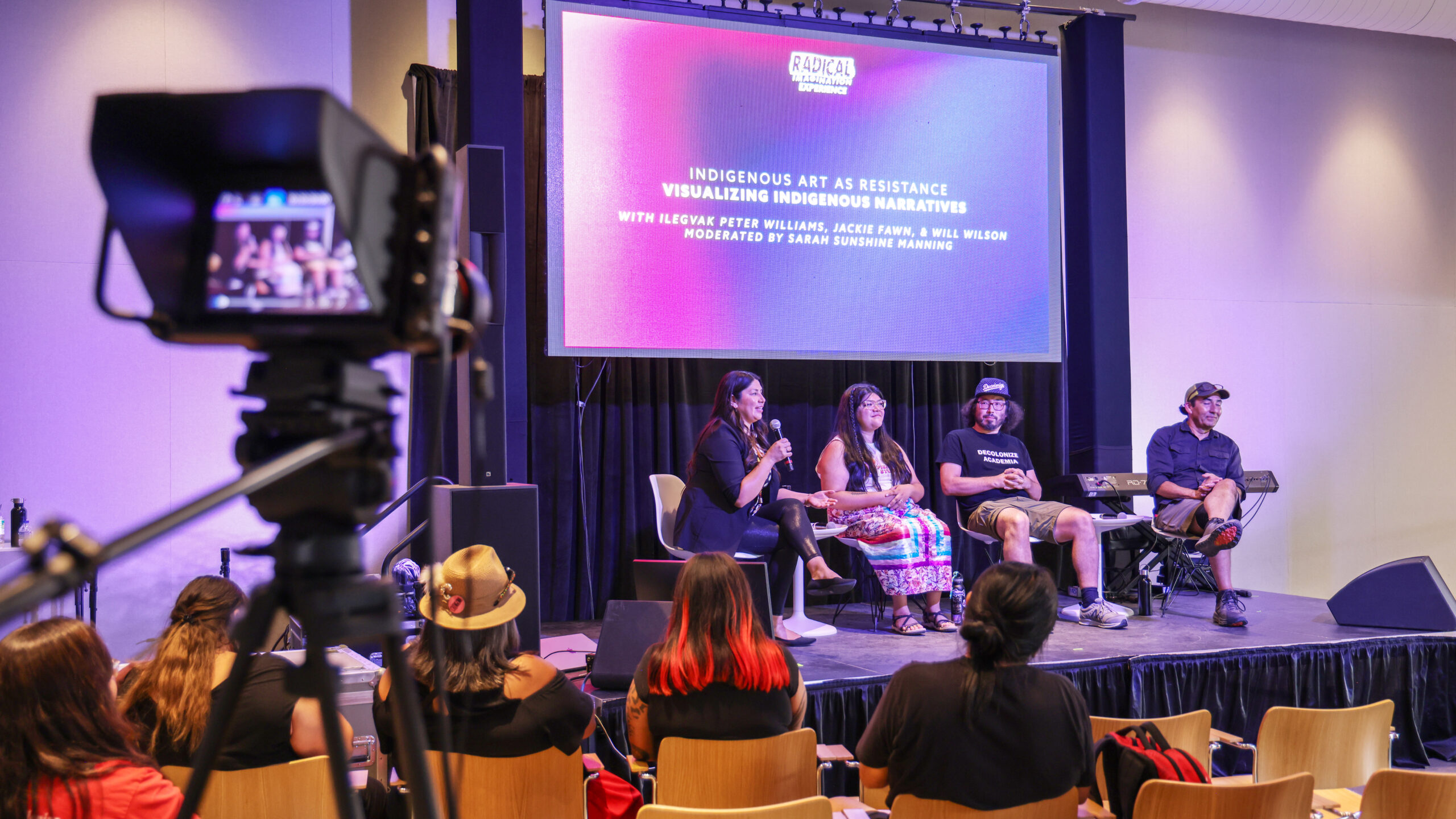
As a segment reminder, Sarah spoke to the history of the Radical Imagination grant as being one of NDN Collective’s first grantmaking opportunities. After COVID-19 prevented an event in early 2020, this Radical Imagination Experience signified the first time that a convening of its kind could officially take place.
Q: What are you feeling inspired about with your current project?
Will, a Diné photographer and trans-customary artist, responded first to the question, sharing that the current project he is focused on is called “Connecting the Dots for Just Transition.”
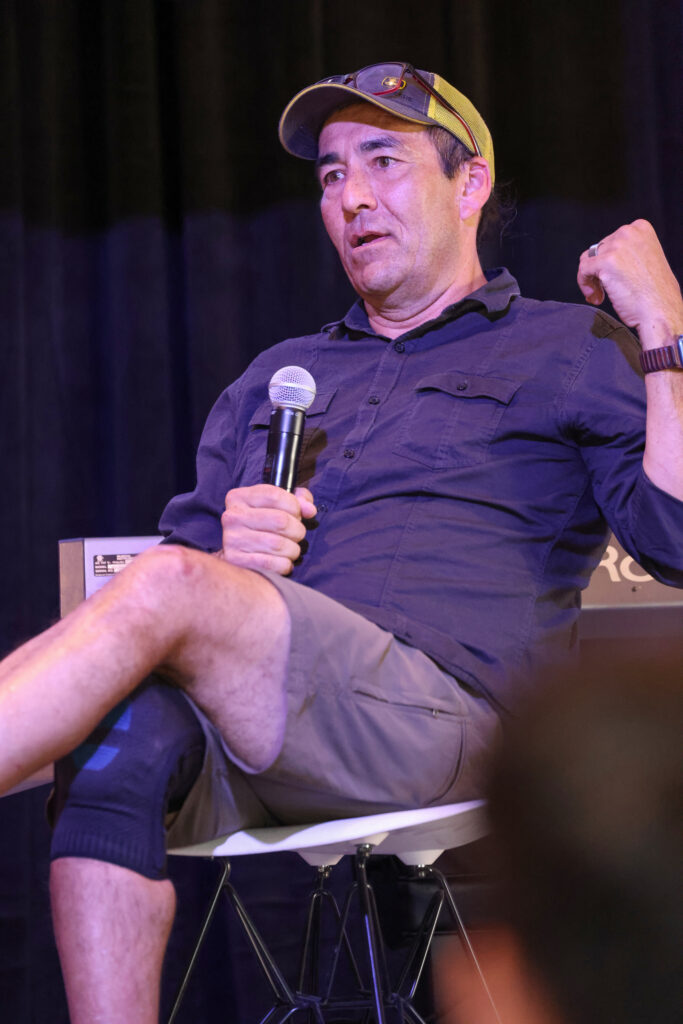
“The dots I’m referring to are a map that the Navajo Nation EPA as well as the U.S. EPA put together of over 500 abandoned uranium mines on the Navajo Nation and so I’m sort of engaged in this counter survey right now photographing these places trying to put images of community and site to visualize this data. To humanize it in a way, Indigenize it I suppose.”
Second to respond was Ilegvak, Yup’ik culture bearer, artist, designer and educator who shared more on his transition into different mediums of work.
“Over the years I’ve been really, changing in a way, of how much I really appreciate so many wonderful, amazing Indigenous thinkers, artists, creators and doers and so I’ve just really been enjoying interviewing them and writing about them and trying to hold more space, which is usually dominated by a settler colonial narrative.”
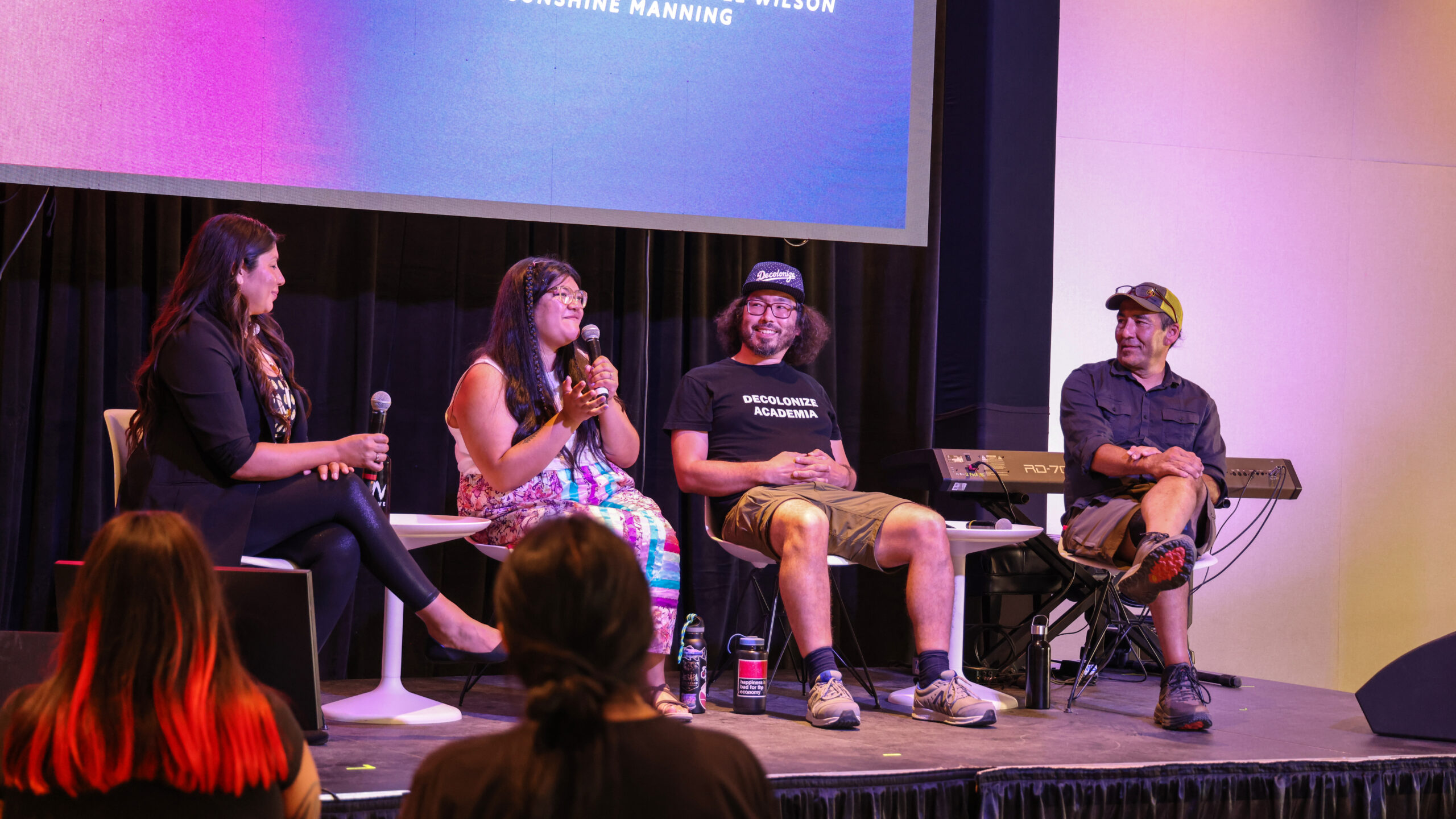
Jackie, Yurok, Washoe and Surigaonon graphic illustrator, enthusiastically shared a passion project, amplified by the Radical Imagination grant opportunity and additional grant opportunities, called Rez Dayze.
“It came out of Standing Rock when me and my partner were fighting for our sobriety and it’s just this creative experience on what LANDBACK is and what romance is in Indigenous communities and breaking those toxic cycles that a lot of people put in these narratives in the [mainstream] media.”
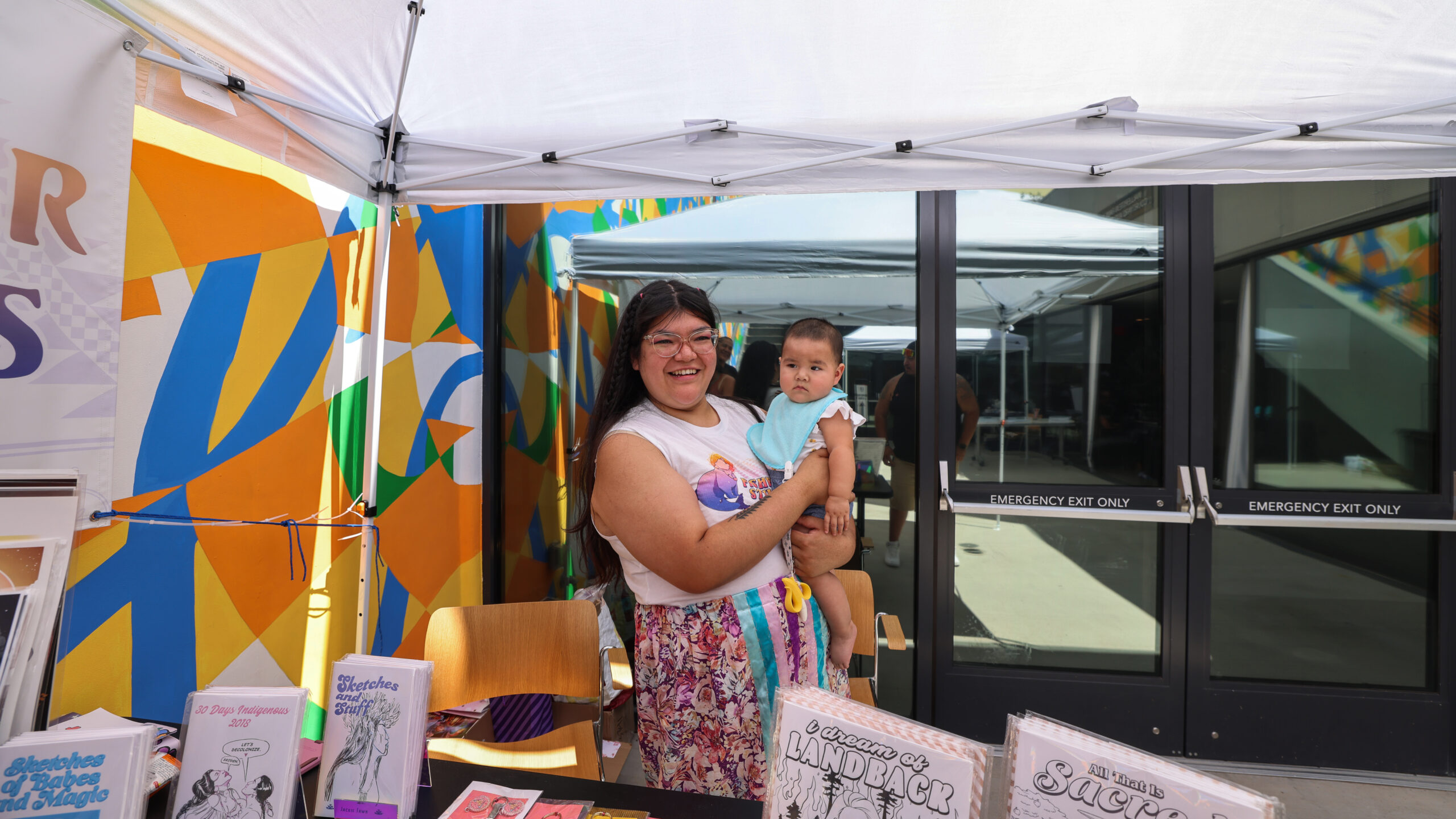
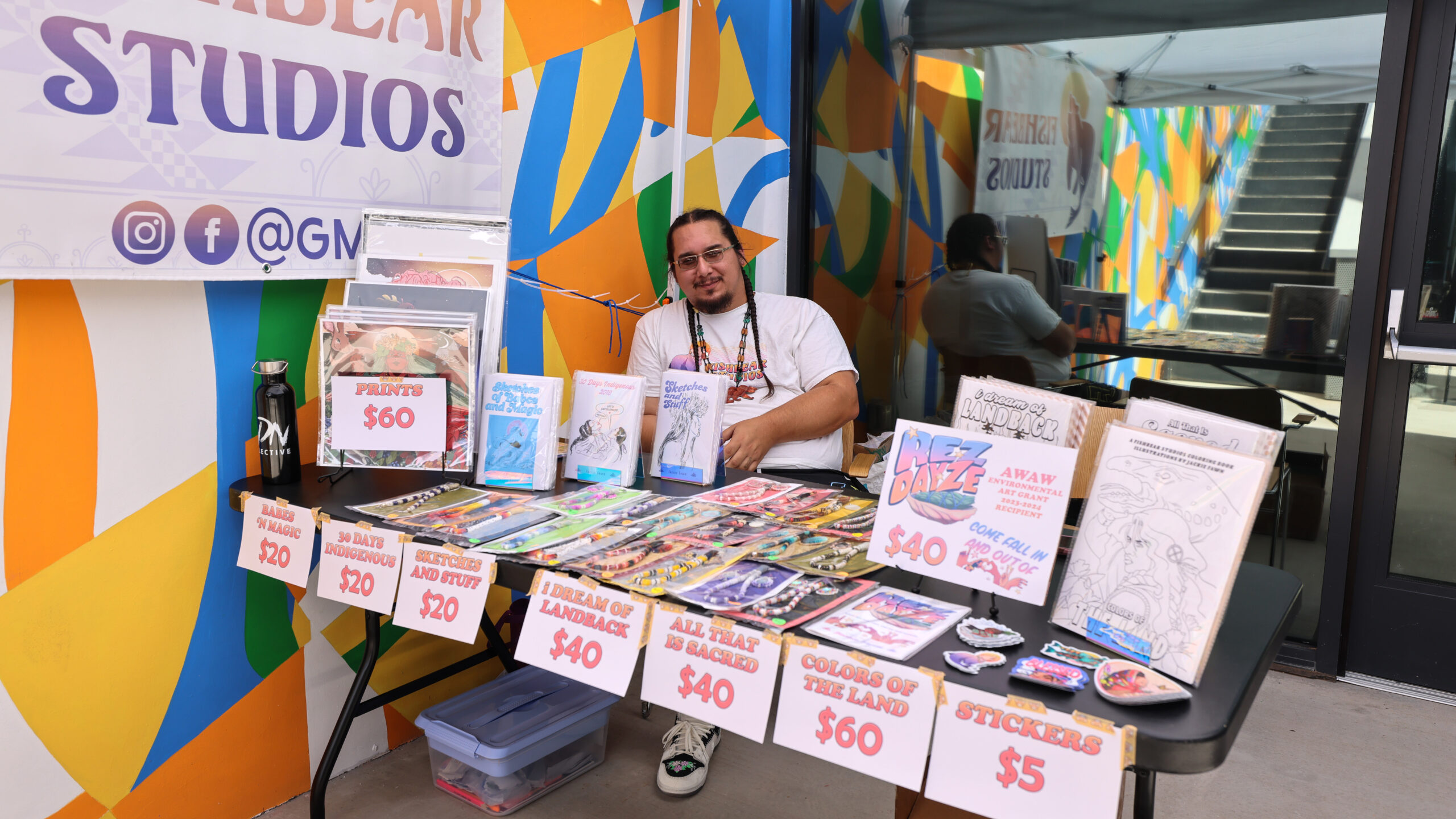
As the panel discussion continued, ripe with laughter and inspiration, audience members had the opportunity to pose additional questions to Jackie, Ilegvak and Will. All three artists commonly shared the ways in which their art serves as a vehicle sharing community struggles and bringing forth solutions and the overall visibility of Indigenous thinkers in the creative realm.
To read NDN’s interview with Jackie Fawn visit Community, Salmon, & Water: How Indigenous Illustrator Jackie Fawn Creates Art for the Movement and Ilegvak’s interview at ’We are Here!’: Indigenous Art and Expression from Opposite Ends of Turtle Island.
Whenever I write songs on the Native flute I feel like I really get to the root of where my culture influences my songwriting, because whenever I write a song on the flute there’s no English.
Frank Waln (Sicangu LAkota)
After a day of insightful panel discussions, presentations and art-making activities, SITE Sante Fe transformed in preparation for numerous performances by Indigenous artists, including multi-disciplinary artist Dakota Camacho (Matao/CHamoru)l; performer, speaker and writer, Frank Waln (Sicangu Lakota); musician and NDN Collective Creative Director, Mic Jordan (Turtle Mountain Band Ojibwe); and musician Marx Cassity (Osage/Kaw).
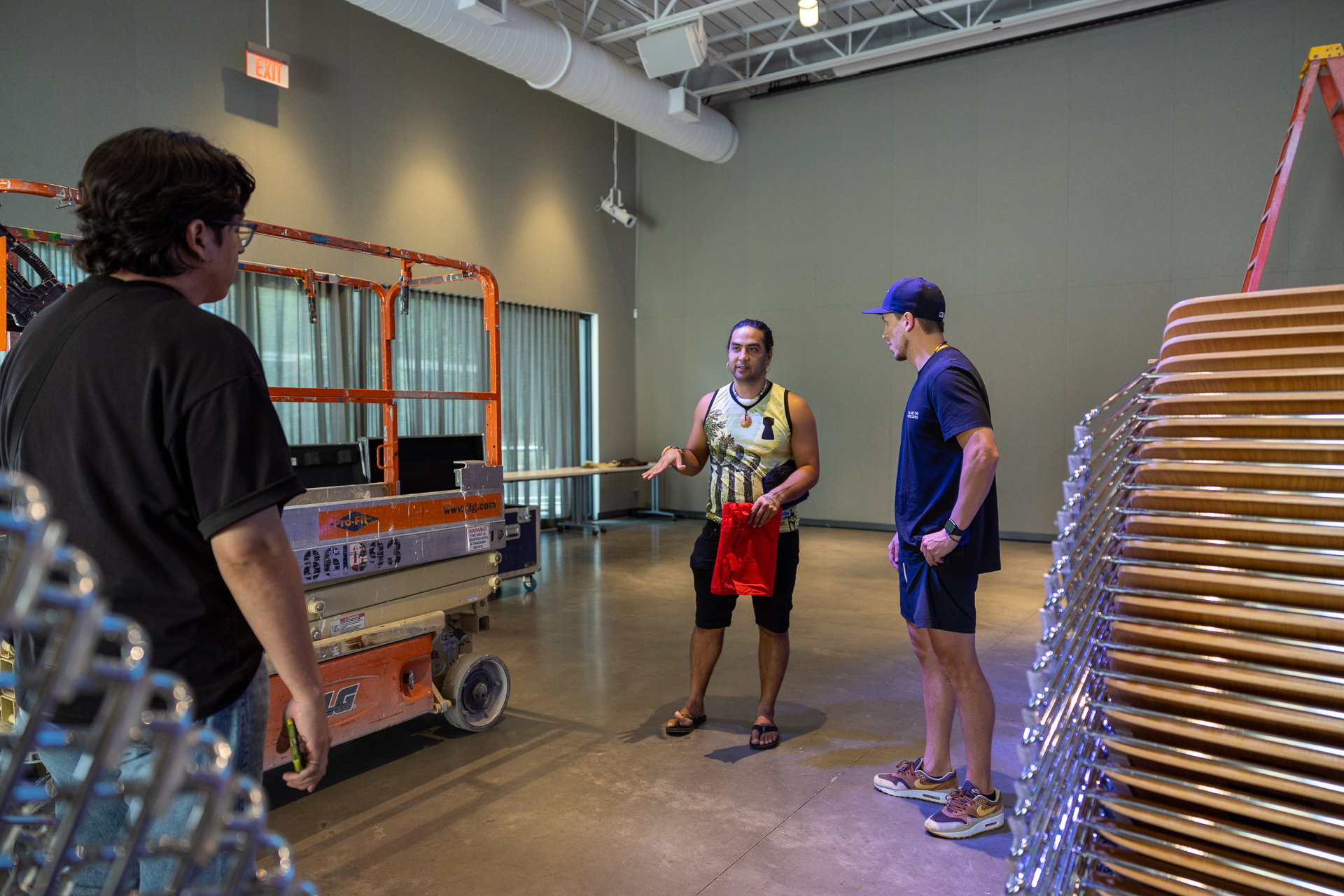
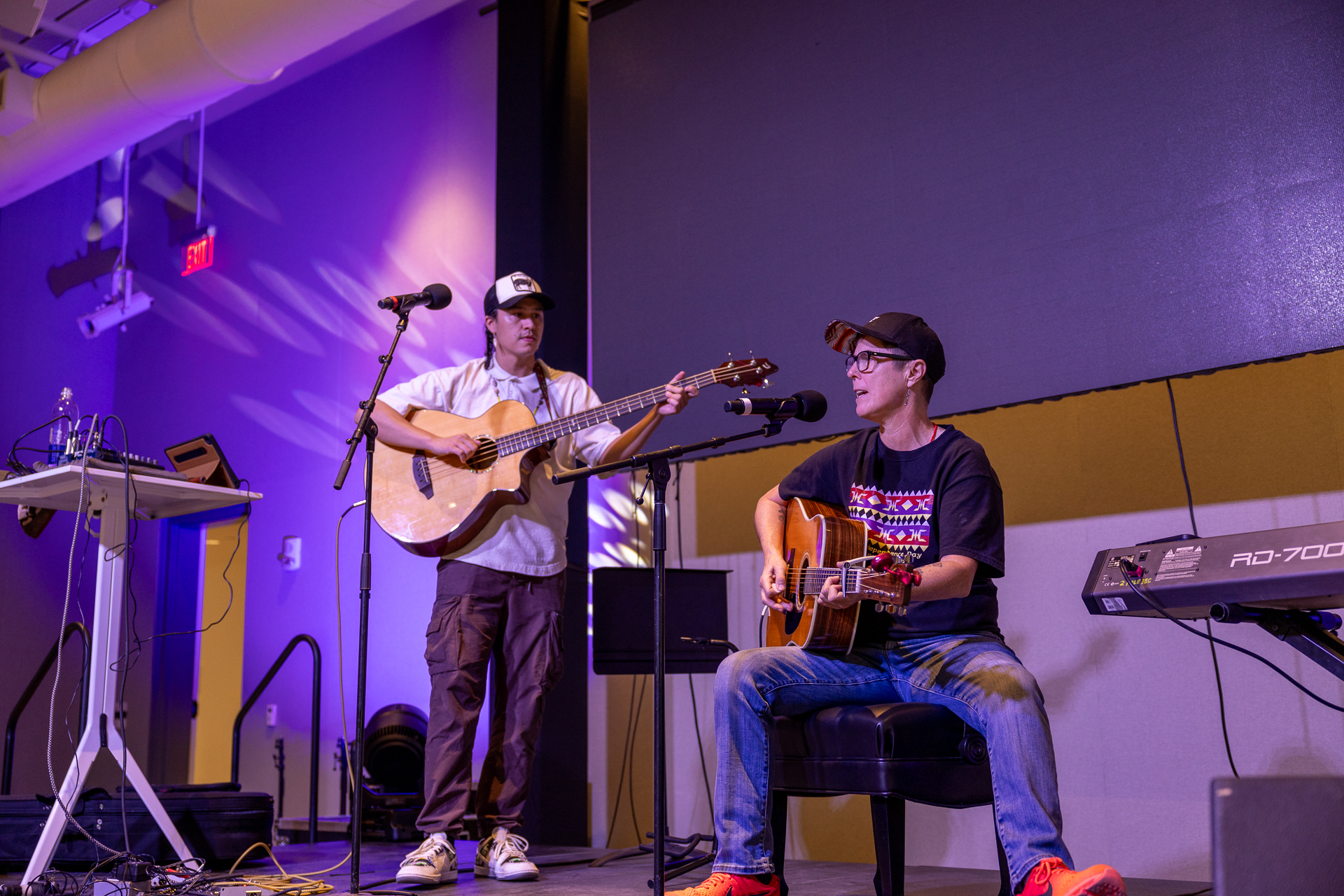
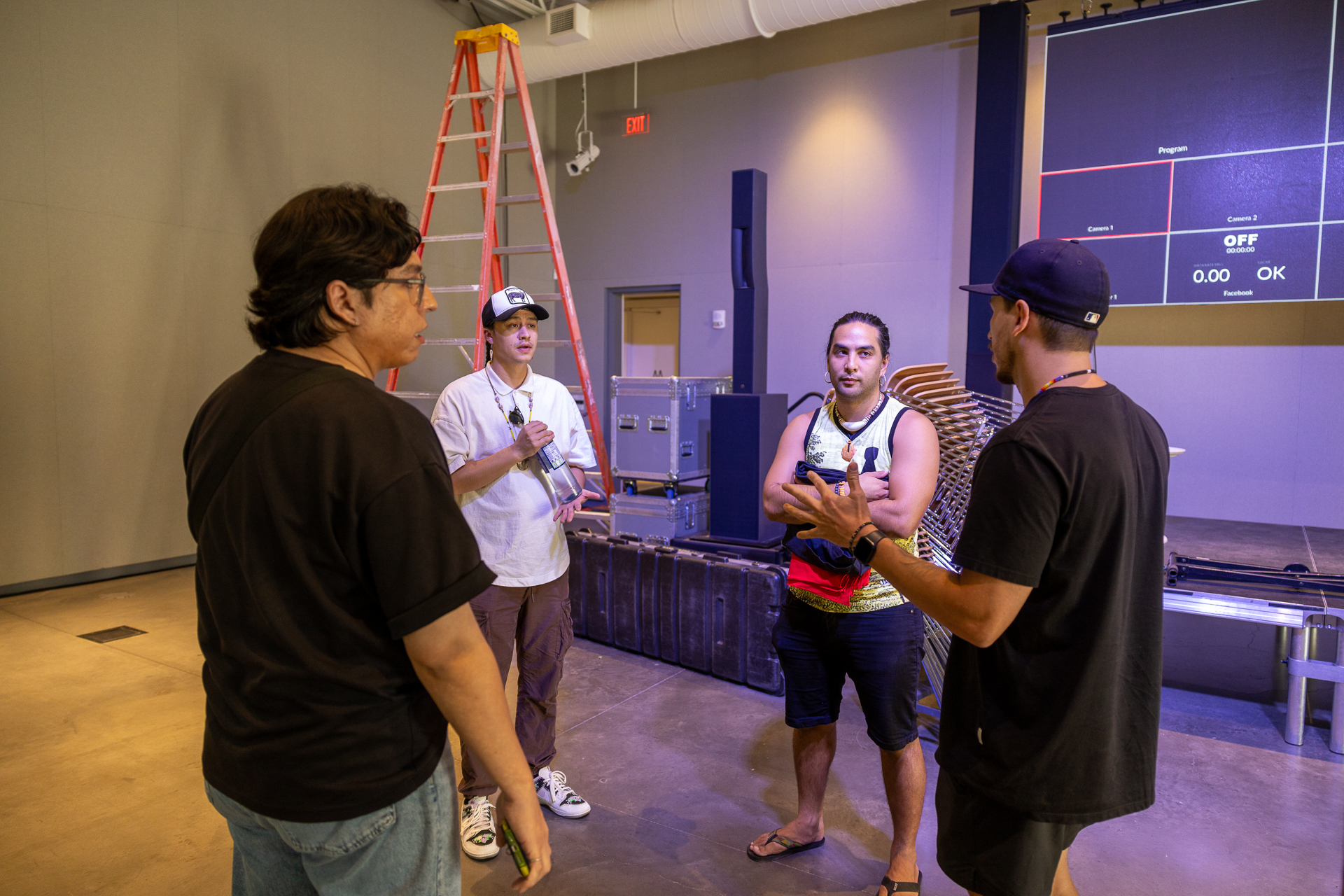

MC and host Def-i, Diné touring artist, performer and poet, welcomed the first performer, Dakota Camacho, who opened with a collective prayer as he shared the hyper militarization efforts that are ravaging his homelands of Guam.
Dakota unraveled his altar piece by piece, laying various cloths, candles and other sacred items on the ground. Attendees watched as prayer transformed into powerful movement, storytelling, and song with images of his homelands projected on screen. The sounds of nature enveloped the space as he concluded his performance, tenderly rolling each piece of fabric and gathering the various altar pieces he had laid on the ground before.
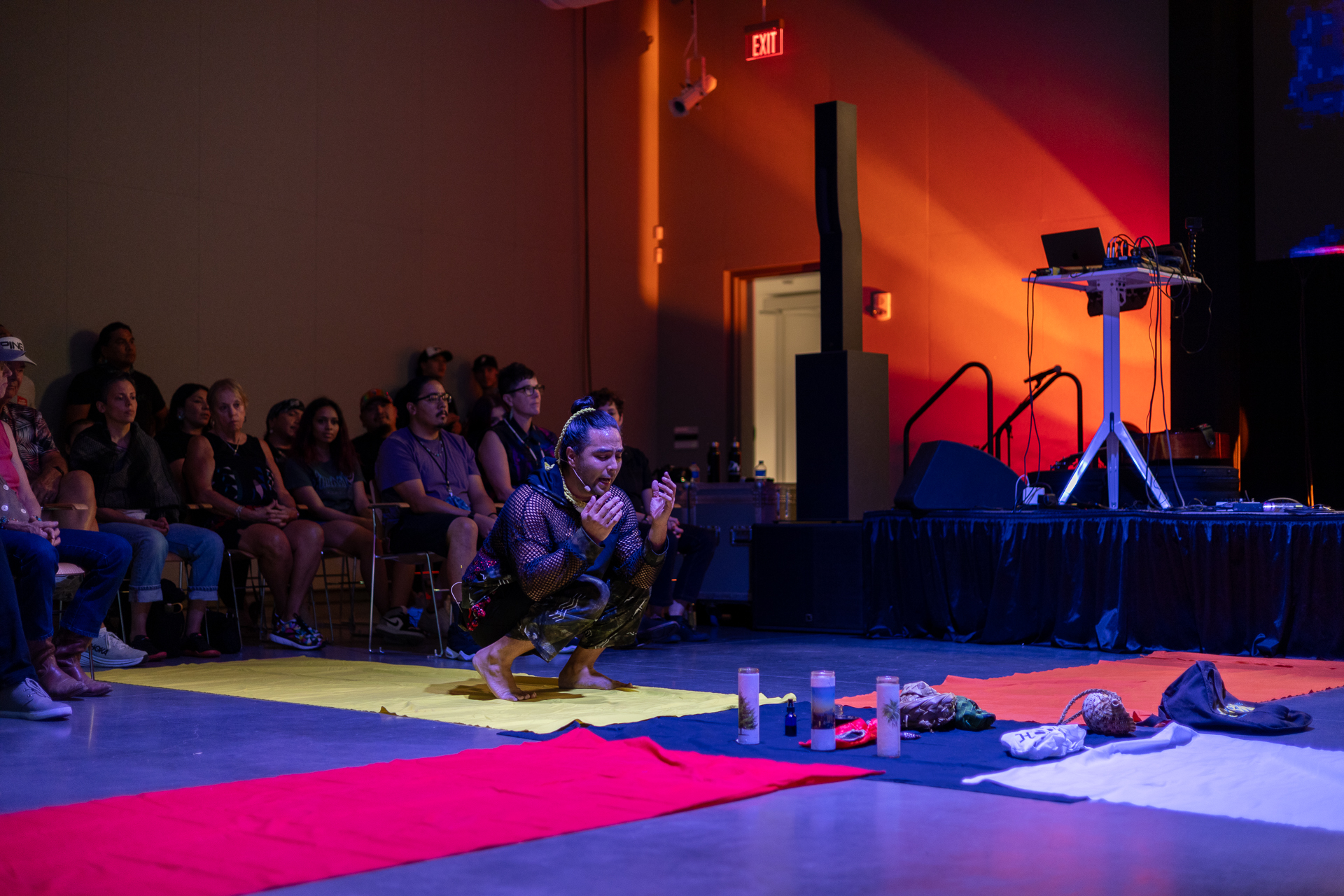
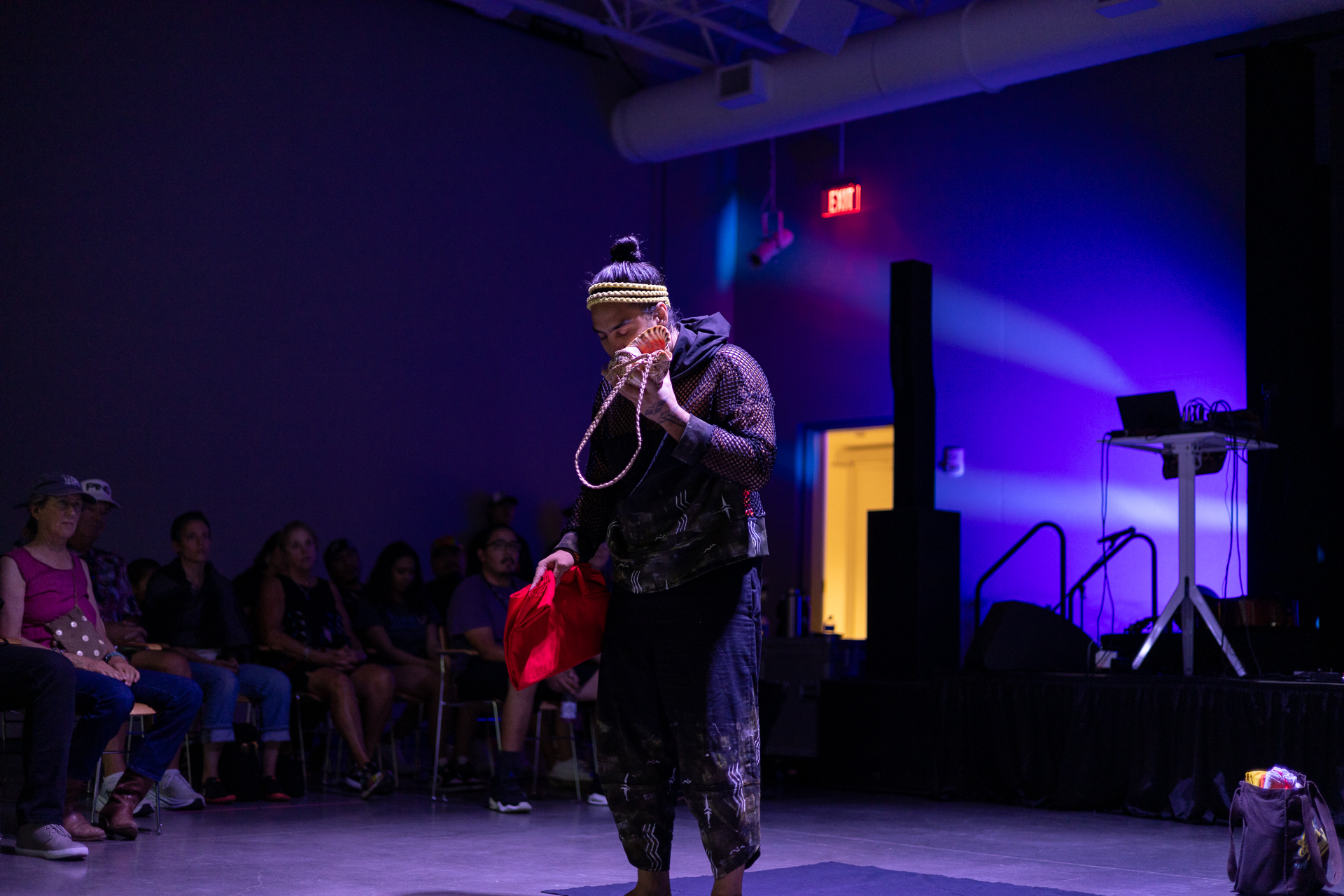
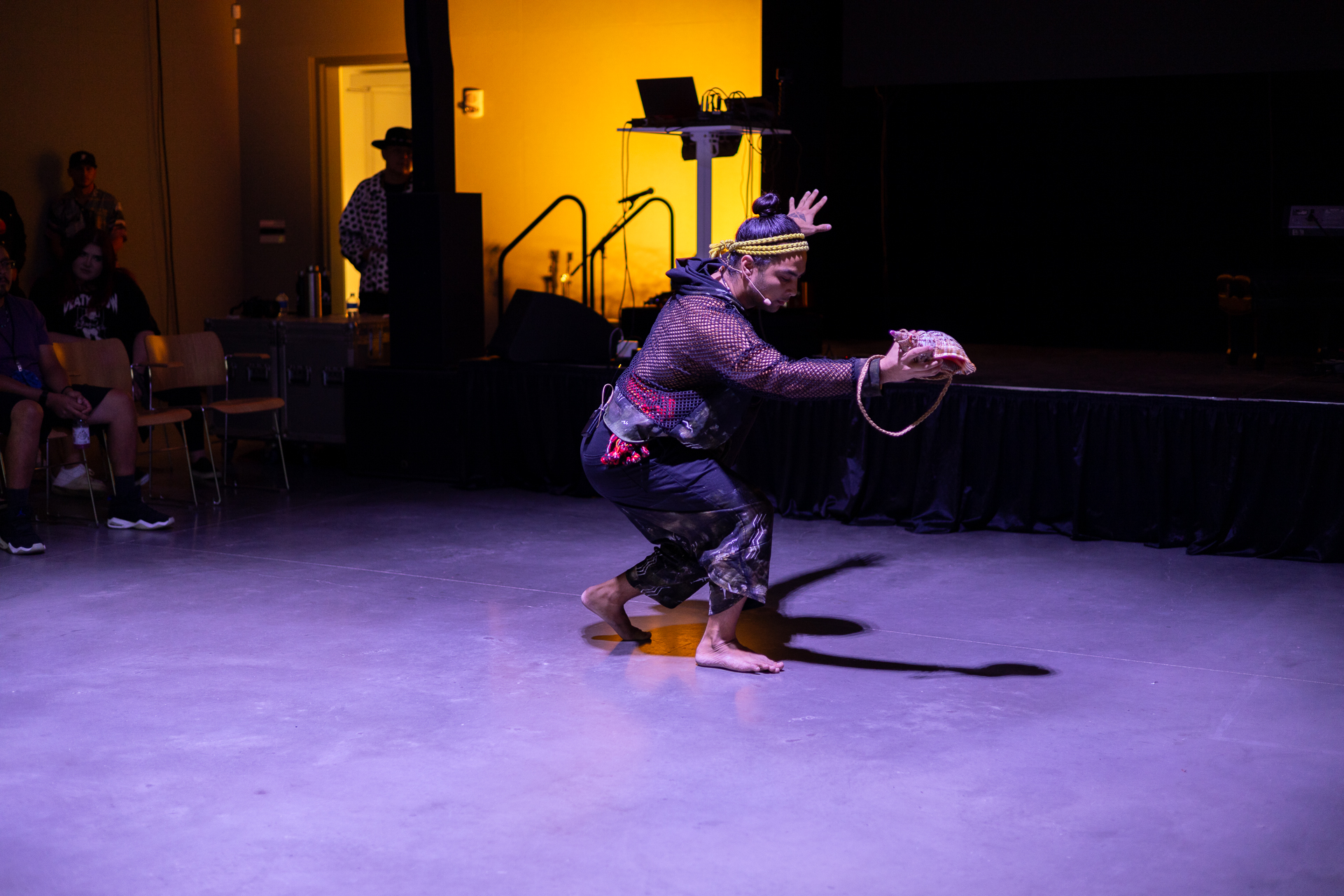
The next performing artist was Mic Jordan, also known as Jordan Brien, a musician, creative designer and a citizen of the Turtle Mountain Band of Ojibwe Tribe in North Dakota. Jordan is currently the Creative Director at NDN Collective.
A group of attendees had formed at the front of the stage as Mic Jordan invited the crowd to raise their hands in the air if they felt blessed, launching into his inspirational song, “So Blessed.”

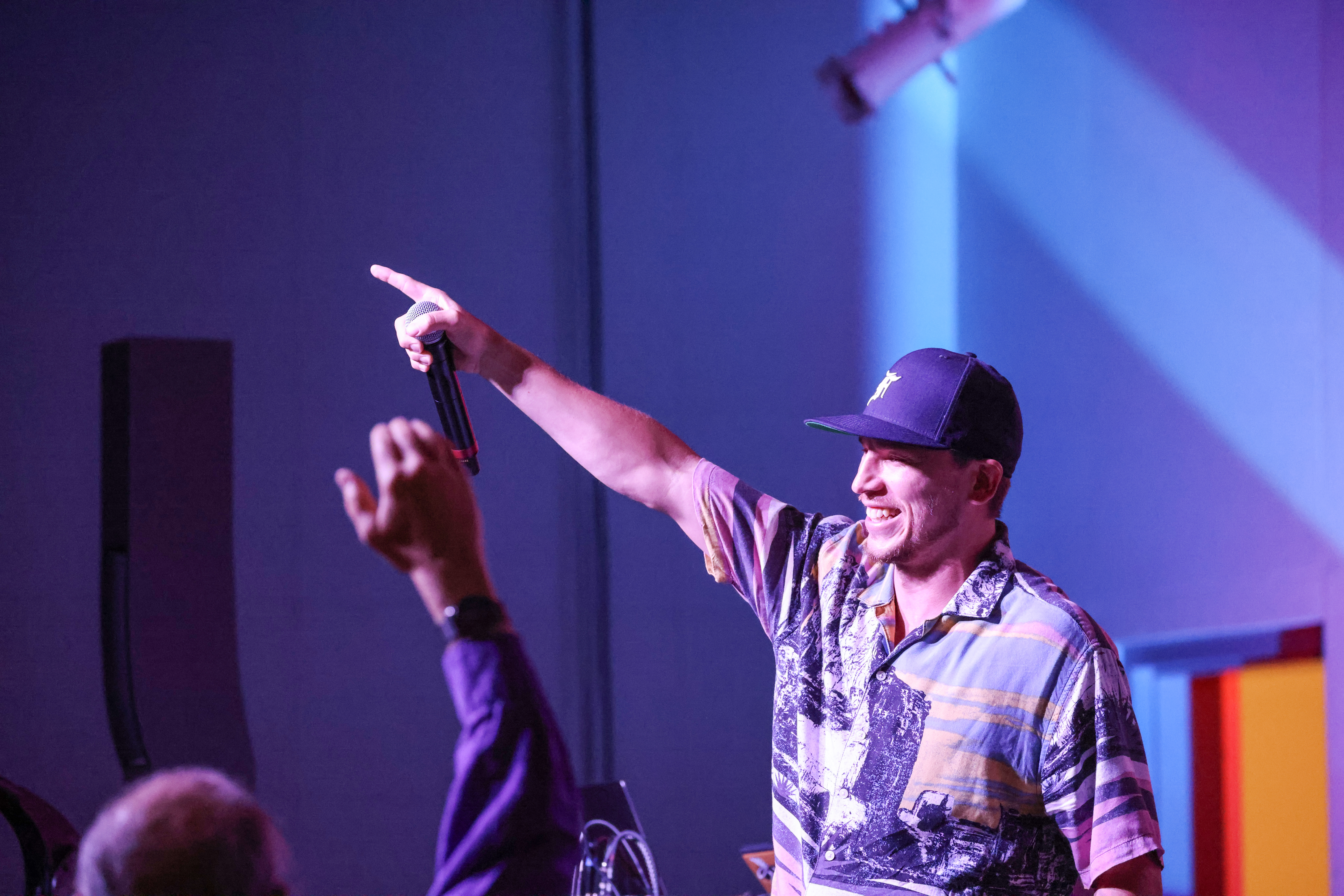
As the song ended, Mic Jordan emphasized the ways art saved his life and briefly shared his experience as a traveling musician, visiting Indigenous youth across Turtle Island – a segway into his next song titled “Kids.”
“Ever since I was young I’ve always heard those words from other men. Stop crying, stop crying. It’s foolish. It’s so foolish and so as a Father I had to change that. It’s so important because it’s like a spiritual transaction with yourself, so I wrote this song called, “The Storm,” about my own emotional intelligence.”
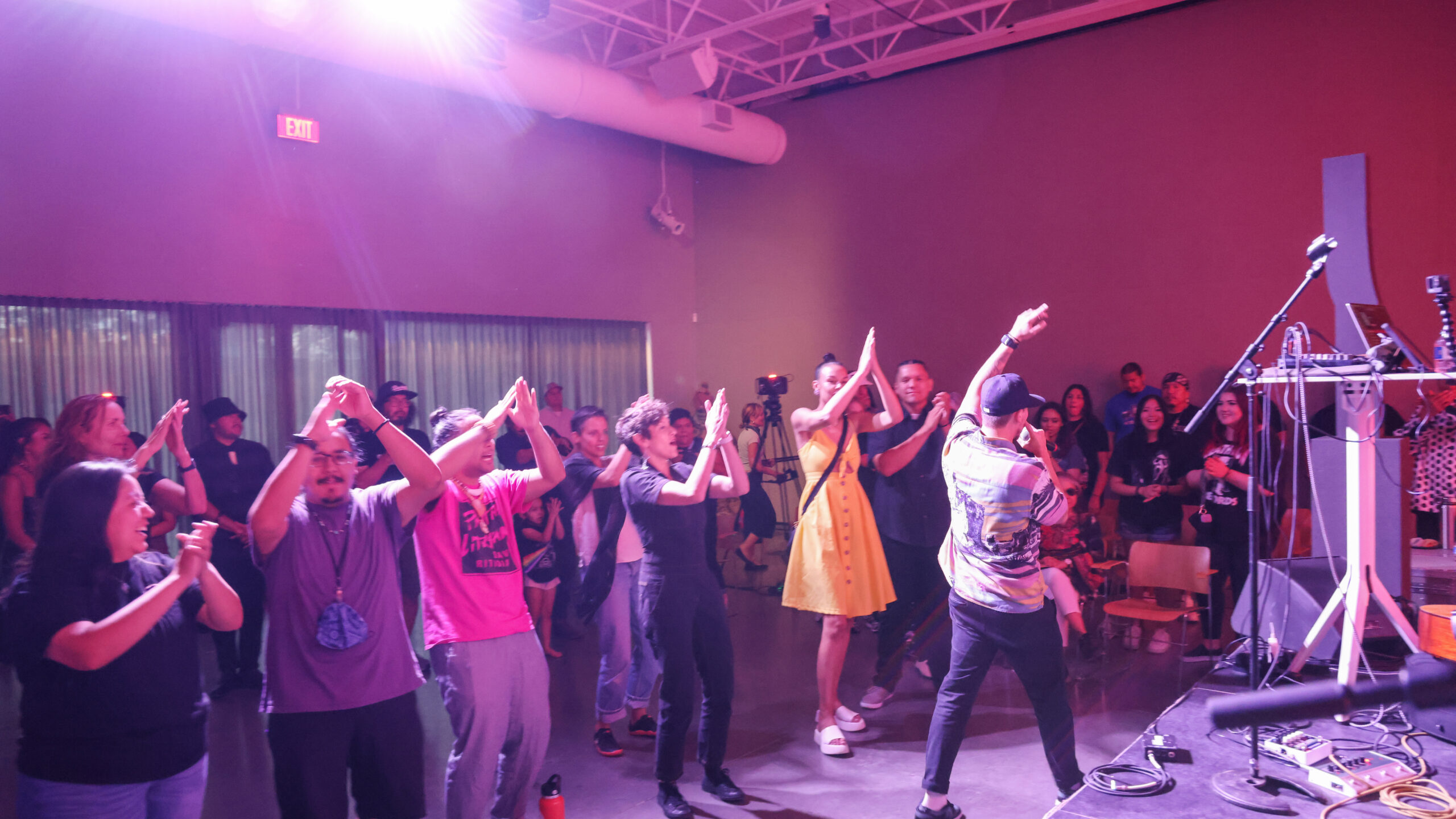
Mic Jordan’s set also included “One Day at a Time,” a song related to healing associated with addiction, “Dear Native Youth,” an open letter to Native youth, “Waive Your Flag,” and “Miigwech (thank you).”
Learn more about Mic Jordan at: https://www.facebook.com/MicJordanMusic
This is a little song about decolonizing sexuality and gender, because gender diversity is nothing new. It’s very old. So you know, they/them pronouns. You know, Two-Spirit, coined in the 90’s. You know, Indigiqueer, one of my favorite ones lately. But also, Winkte and Nadleehi and Miixóke.
Marx Cassity (Osage/Kaw)
Def-i praised all the radical, imaginative, Indigenous relatives, and welcomed Frank Waln for his performance of “Hope,” a song accompanied by his flute and rich with Lakota language. At the end of the song, he shared additional background on the piece.
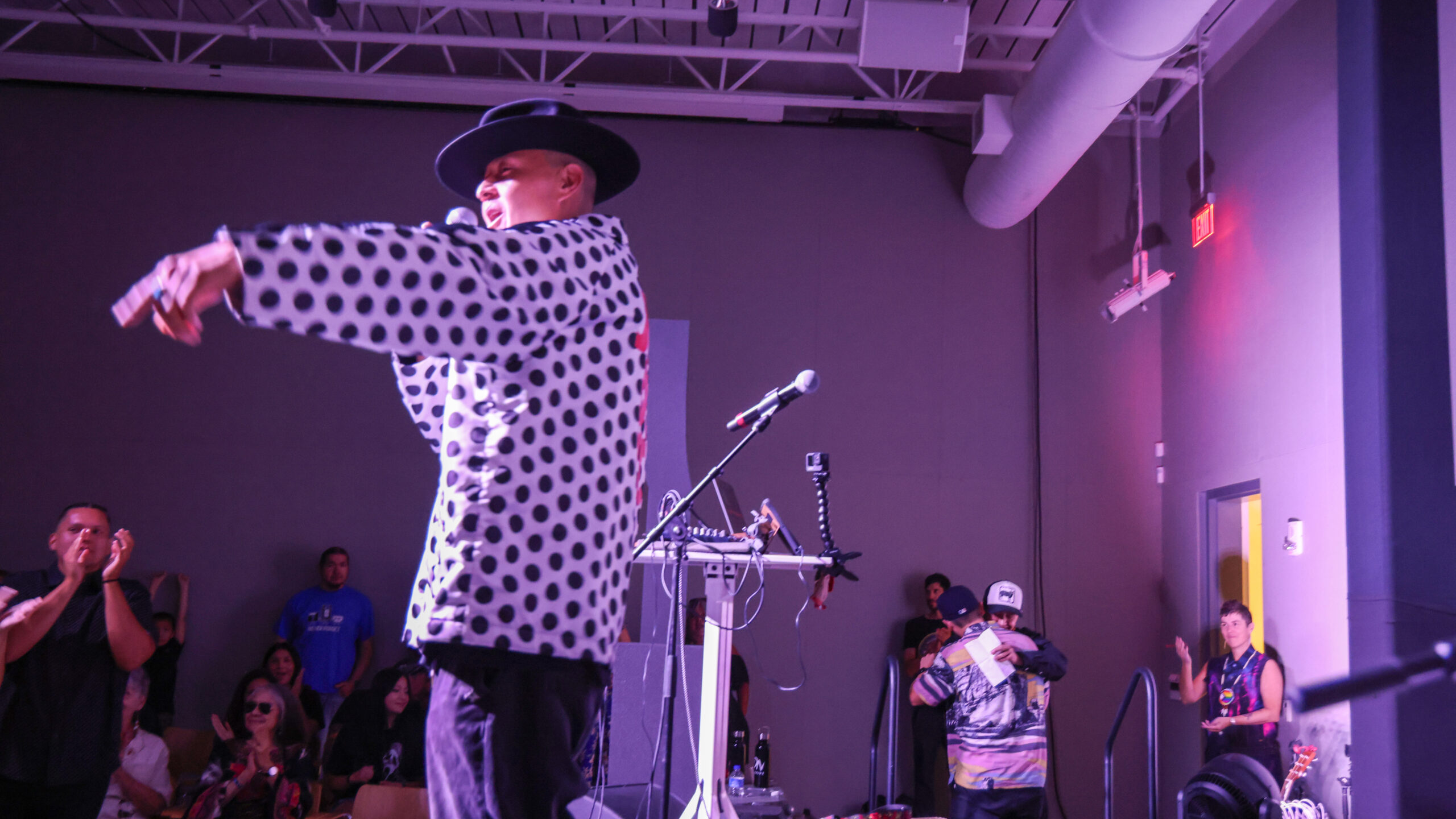
“[This is the] first time I set out to write a song entirely in my language, because my great grandparents took our language to the grave with them and it’s become a life goal of mine to learn my language and bring it to life through my art, to share it with the world.”
Frank also shared his inspiration for “Born on the Rez,” a piece speaking to his frustrations while in college in Chicago having to respond to ignorance around Native history and modern Native existence.
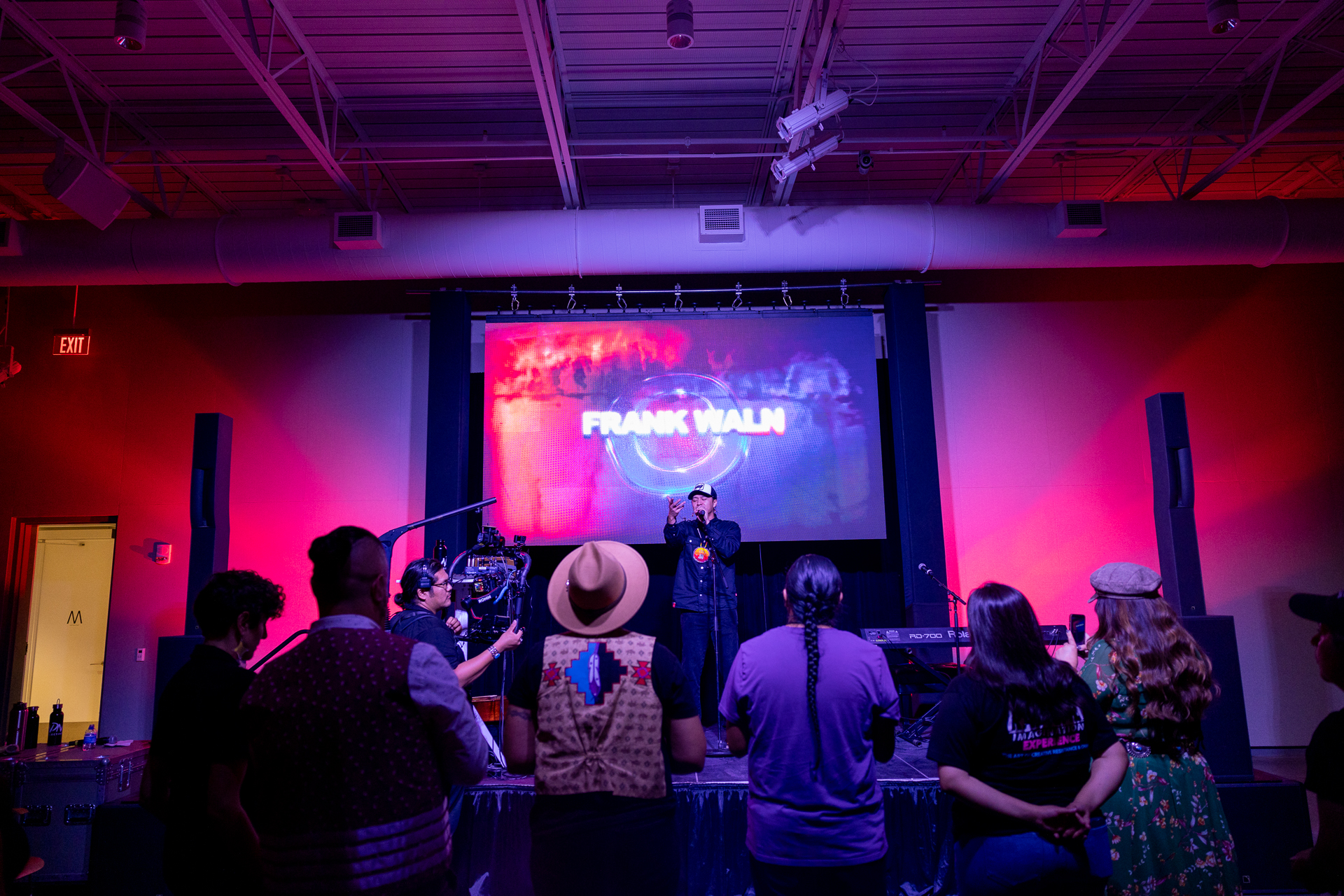

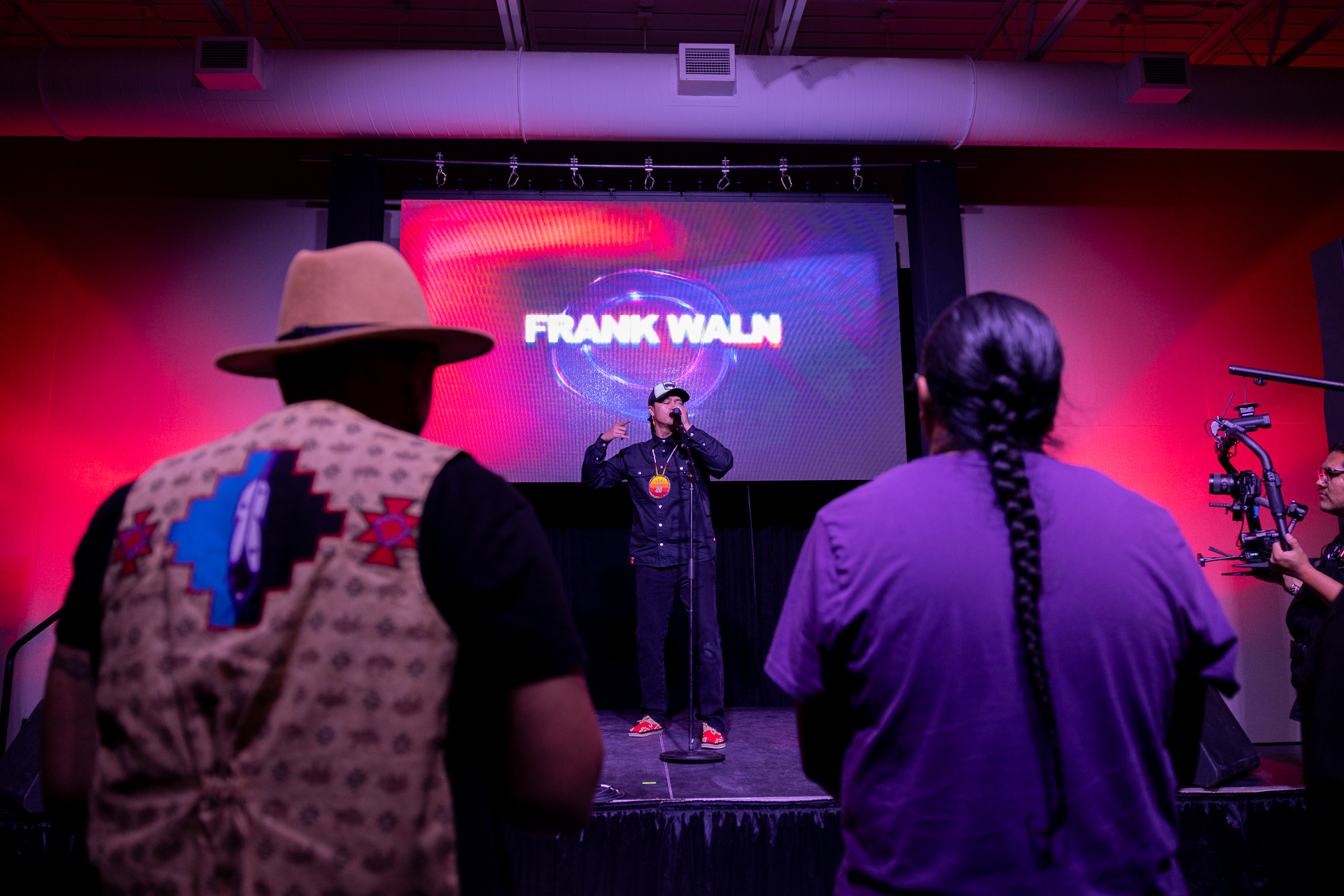
Frank’s set also included, “What Made the Red Man Red,” a song that incorporates audio clips of Disney’s “Peter Pan” movie, “Bad Medicine,” speaking to the bad medicine of colonization, militarization, capitalism, transphobia, misogyny and homophobia that has spread across so-called America like an illness. In addition, he played the cover “Dreams,” by Fleetwood Mac, on his flute, as well as White Stripes mashup piece titled, “Seven.” In closing, Frank shared a piece titled “Like a Rock,” a song that he wrote in college to celebrate his Mother’s birthday.
To introduce the final performing artist, Def-i unveiled the phenomenal and moving world premier music video, “How Long” by Osage Two-Spirit musician, Marx Cassity.
As Marx’s words of gratitude and love for the ancestors and trancestors poured into the room, Dakota uplifted a progressive Pride flag as they transcended the space for all in attendance.
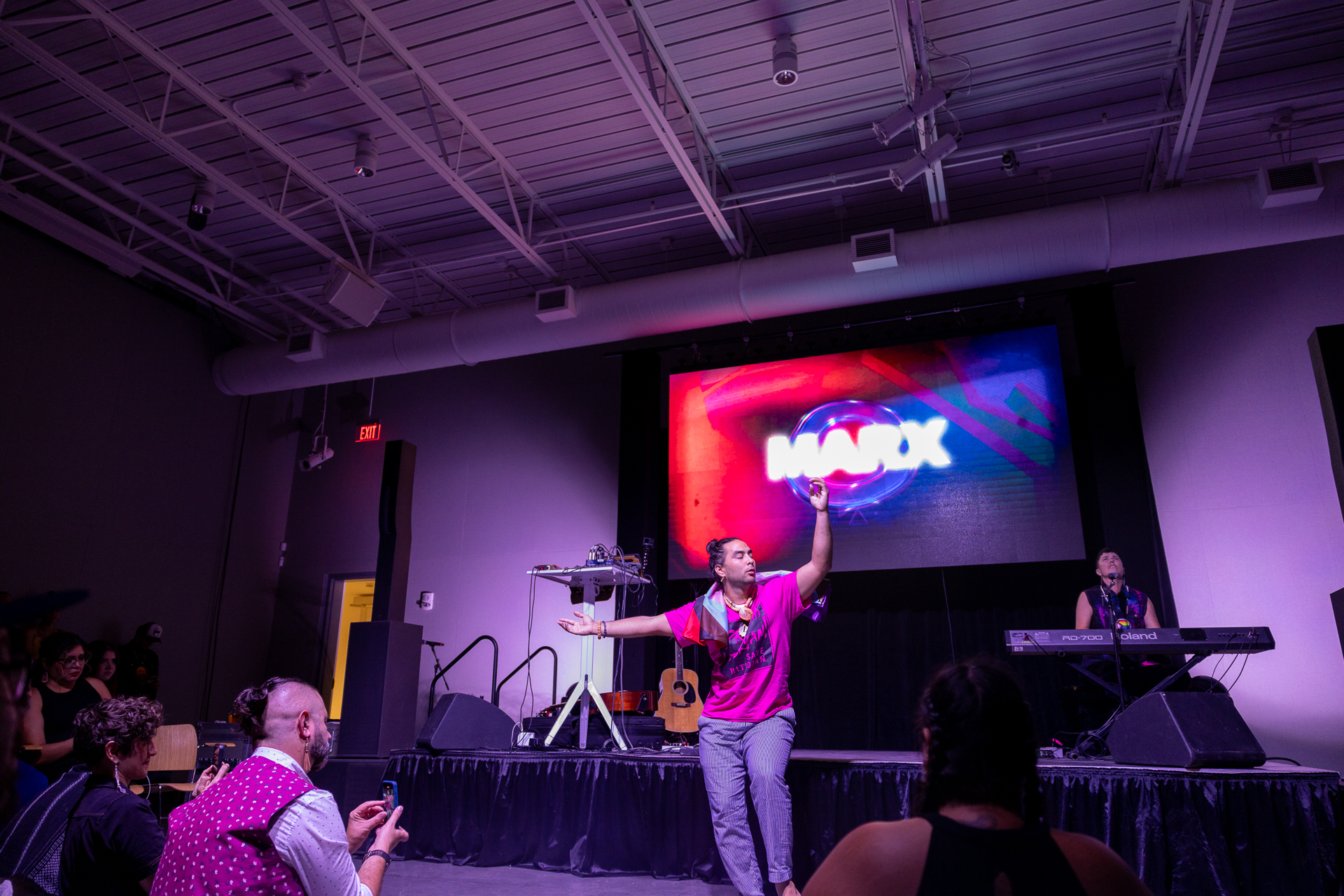
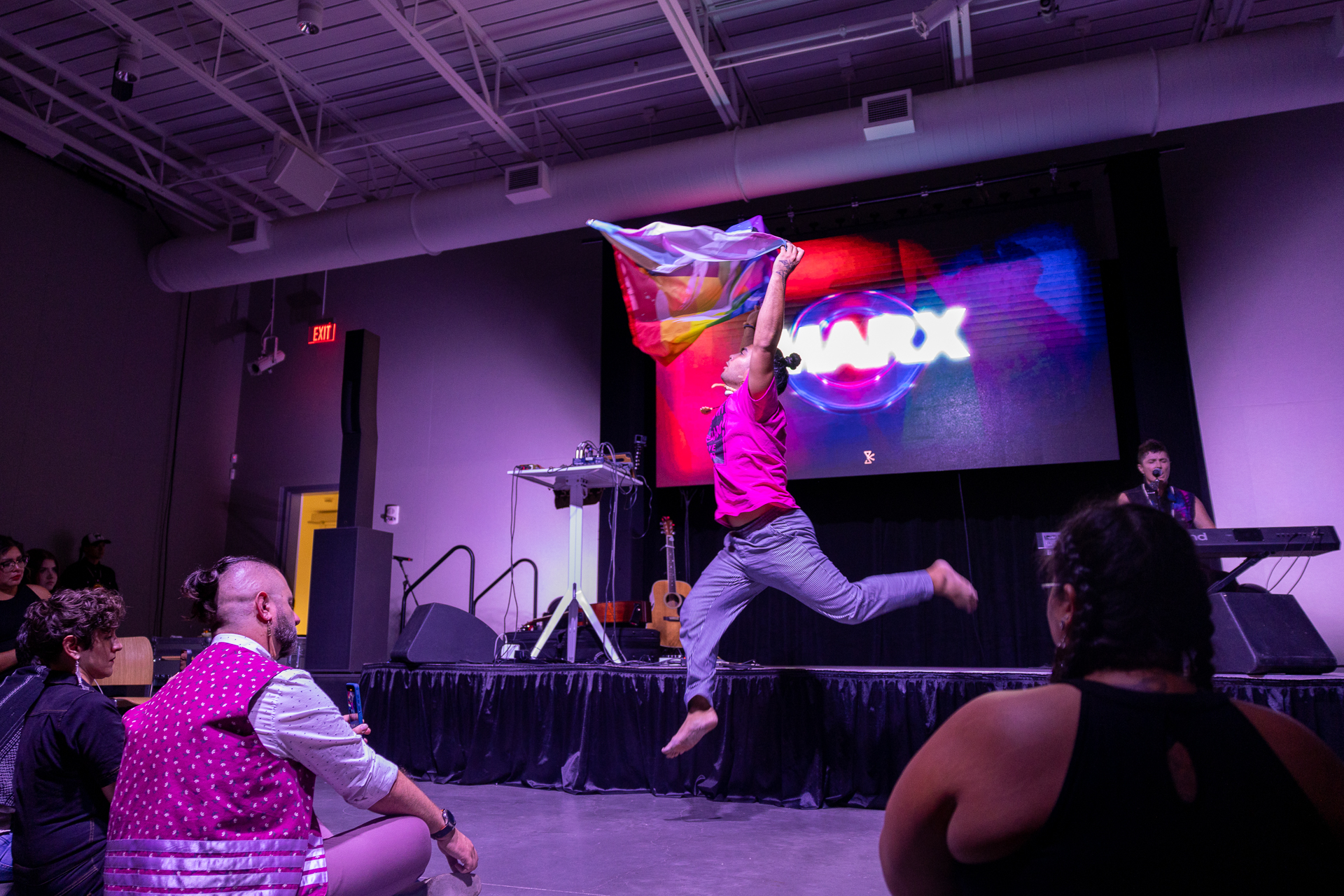
Carrying the collaborative energy forward, Marx invited Frank Waln back to the stage, both grabbing their guitars for the next song titled, “A Little Better.”
As Frank and Marx strummed their guitars, Marx shared history surrounding the piece. “This is a little song about decolonizing sexuality and gender, because gender diversity is nothing new. It’s very old. So you know, they/them pronouns. You know, Two-Spirit, coined in the 90’s. You know, Indigiqueer, one of my favorite ones lately. But also, Winkte and Nadleehi and Miixóke.”
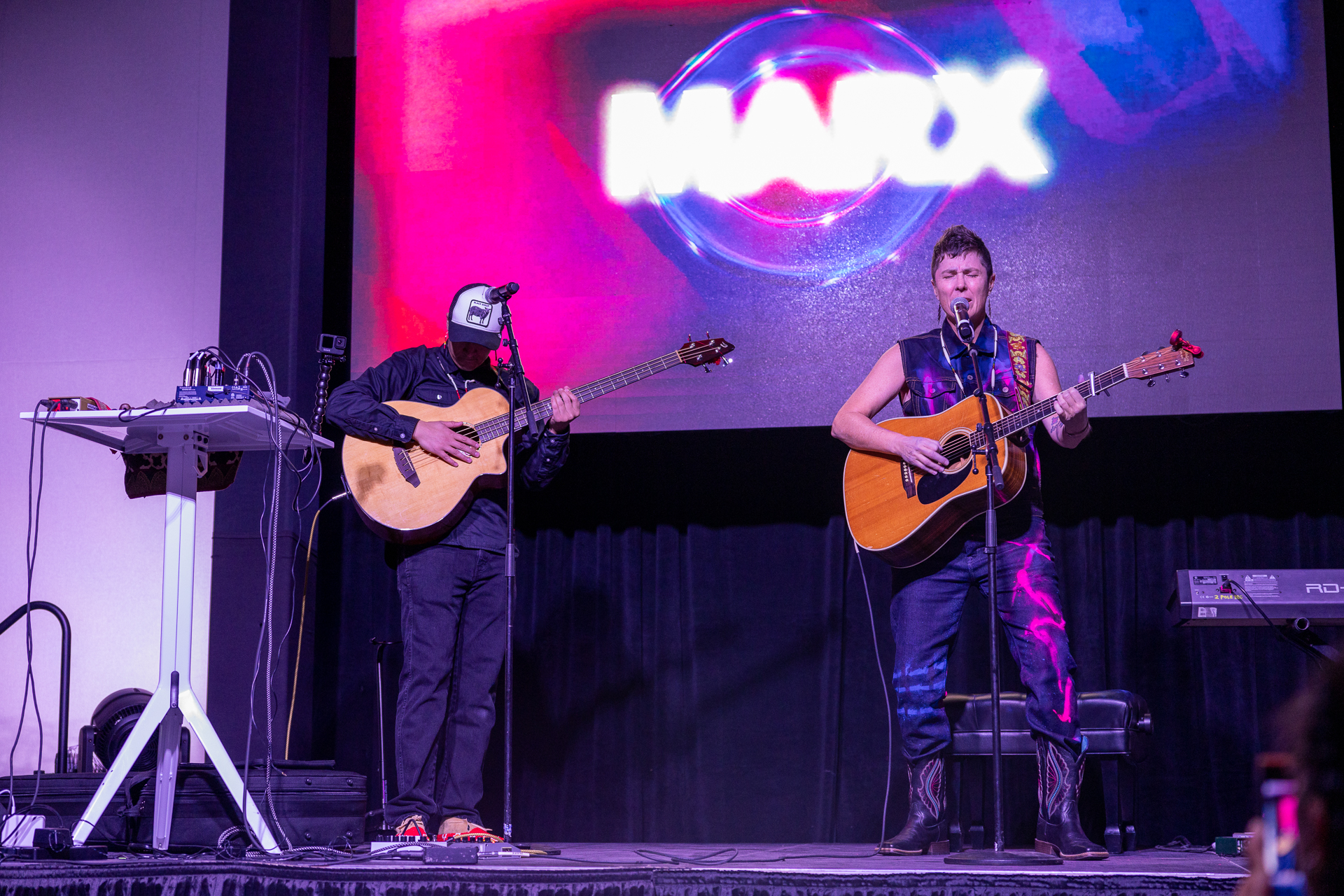

Marx spoke about their musical journey as well as their journey as an Indigiqueer person, adding how NDN Collective’s Radical Imagination grant provided an opportunity for them to empower, uplift and honor queer youth, before performing their final piece titled, “The Dawn.”
The gifts offered and seeds planted by the 2021 Cohort of Radical Imagination Artists through their ongoing work and presence on August 18th served and will continue to serve as an inspiration for the next generation of Indigenous artists seeking to imagine, design and create projects that propose solutions to our most intractable societal problems.

Check out these additional photos from the Radical Imagination Experience in Santa Fe
Click on Photos to Expand
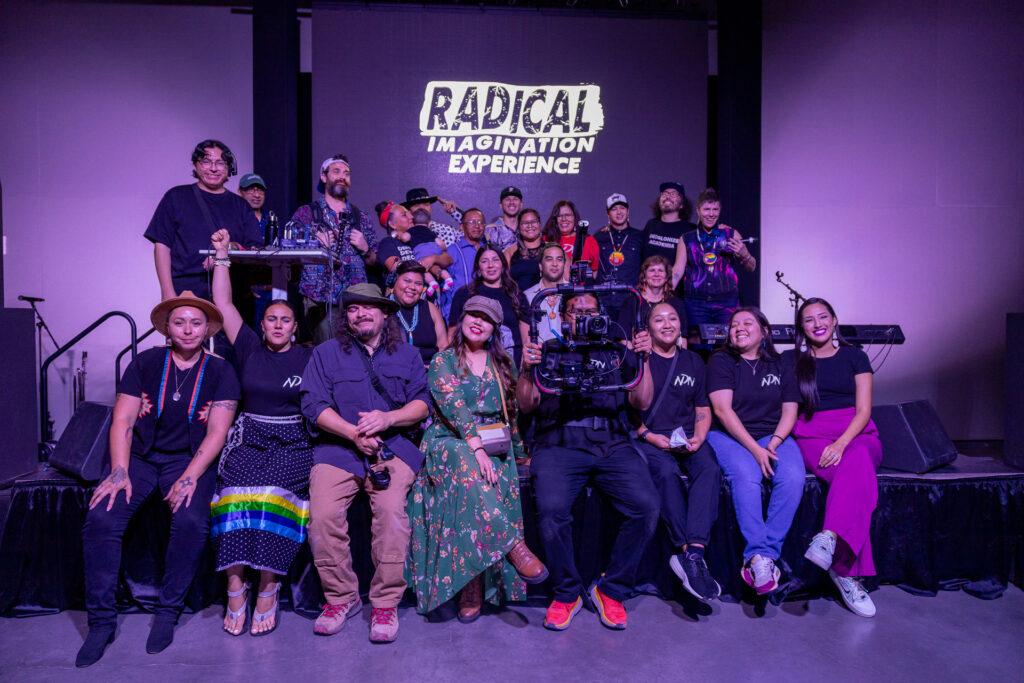
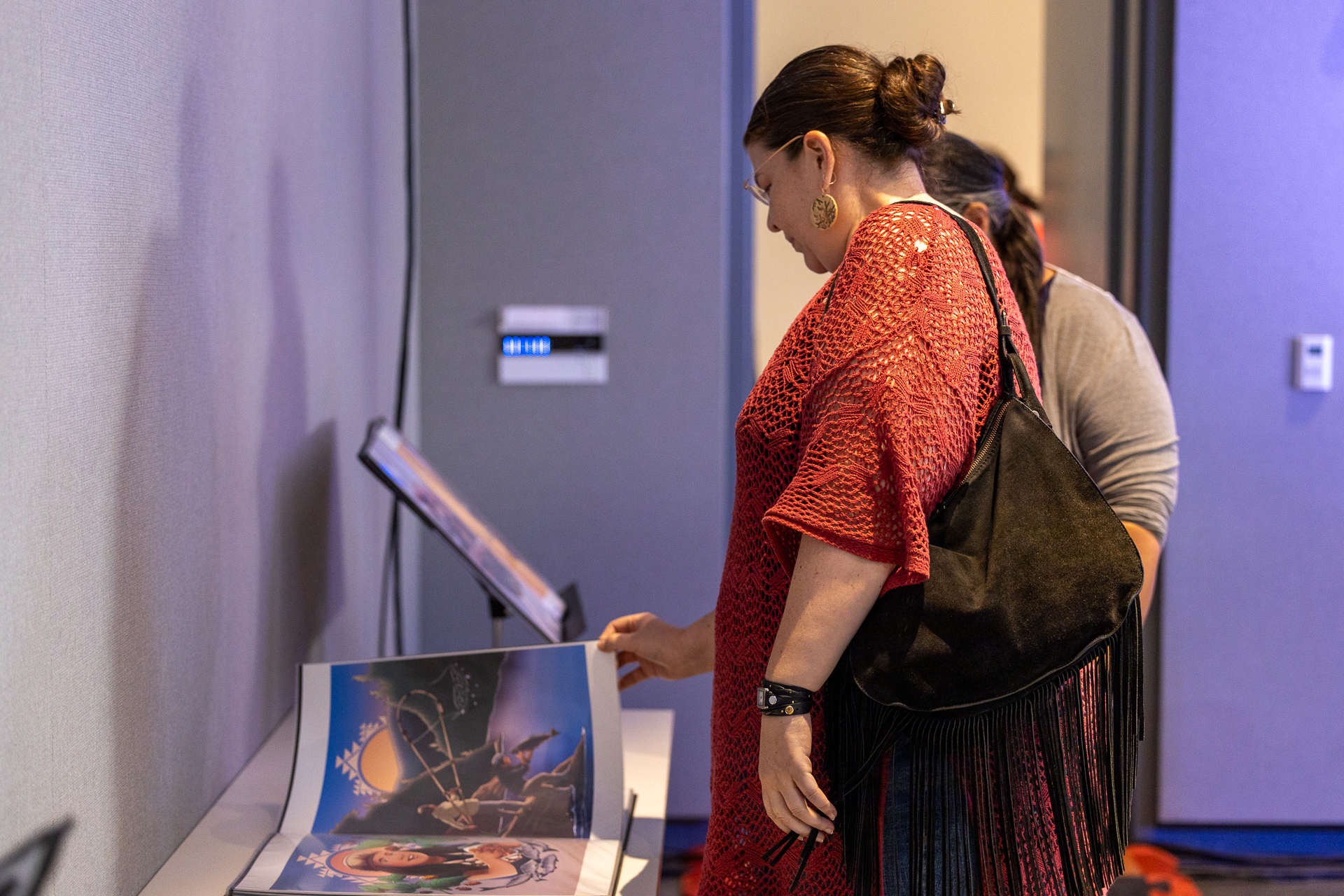
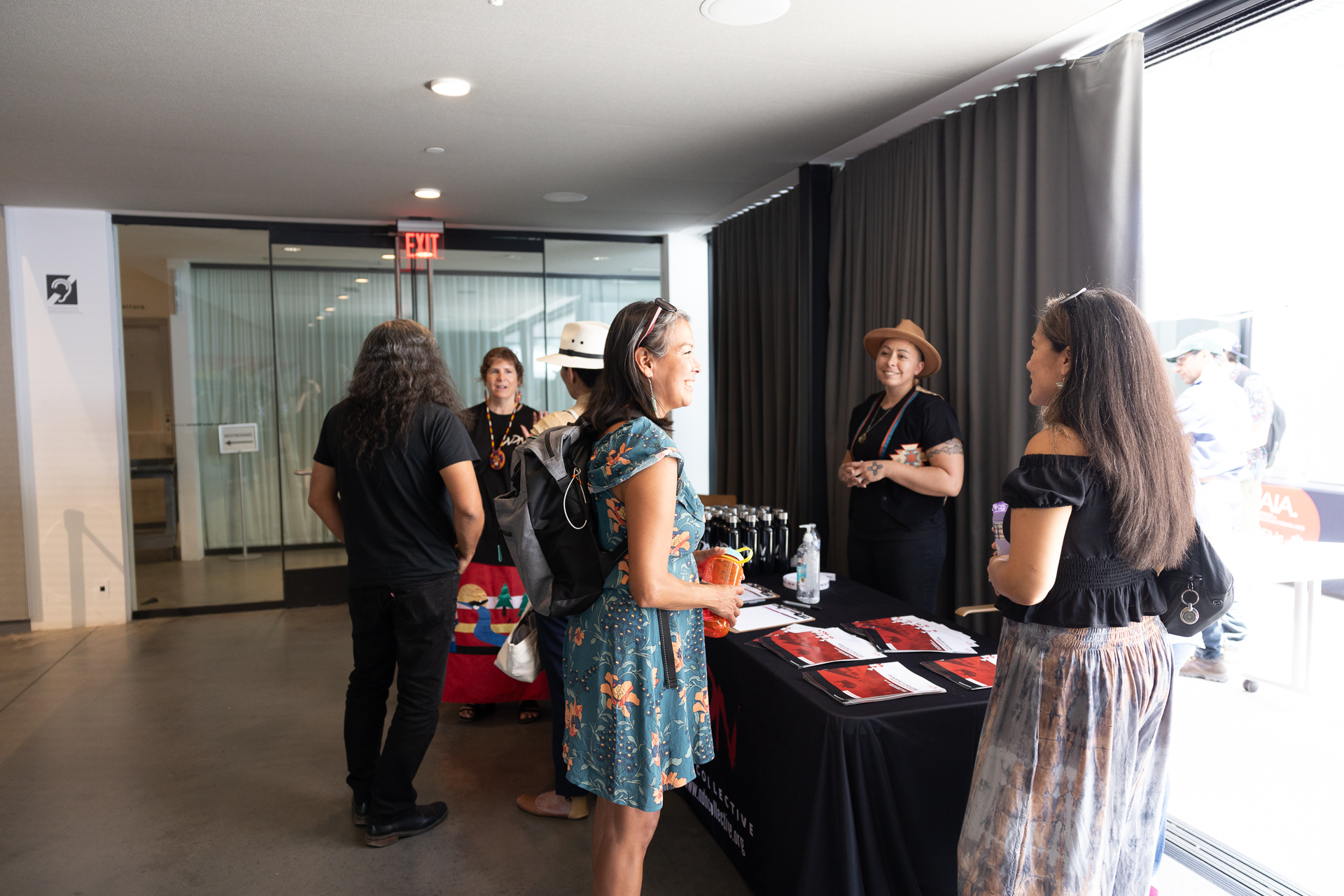
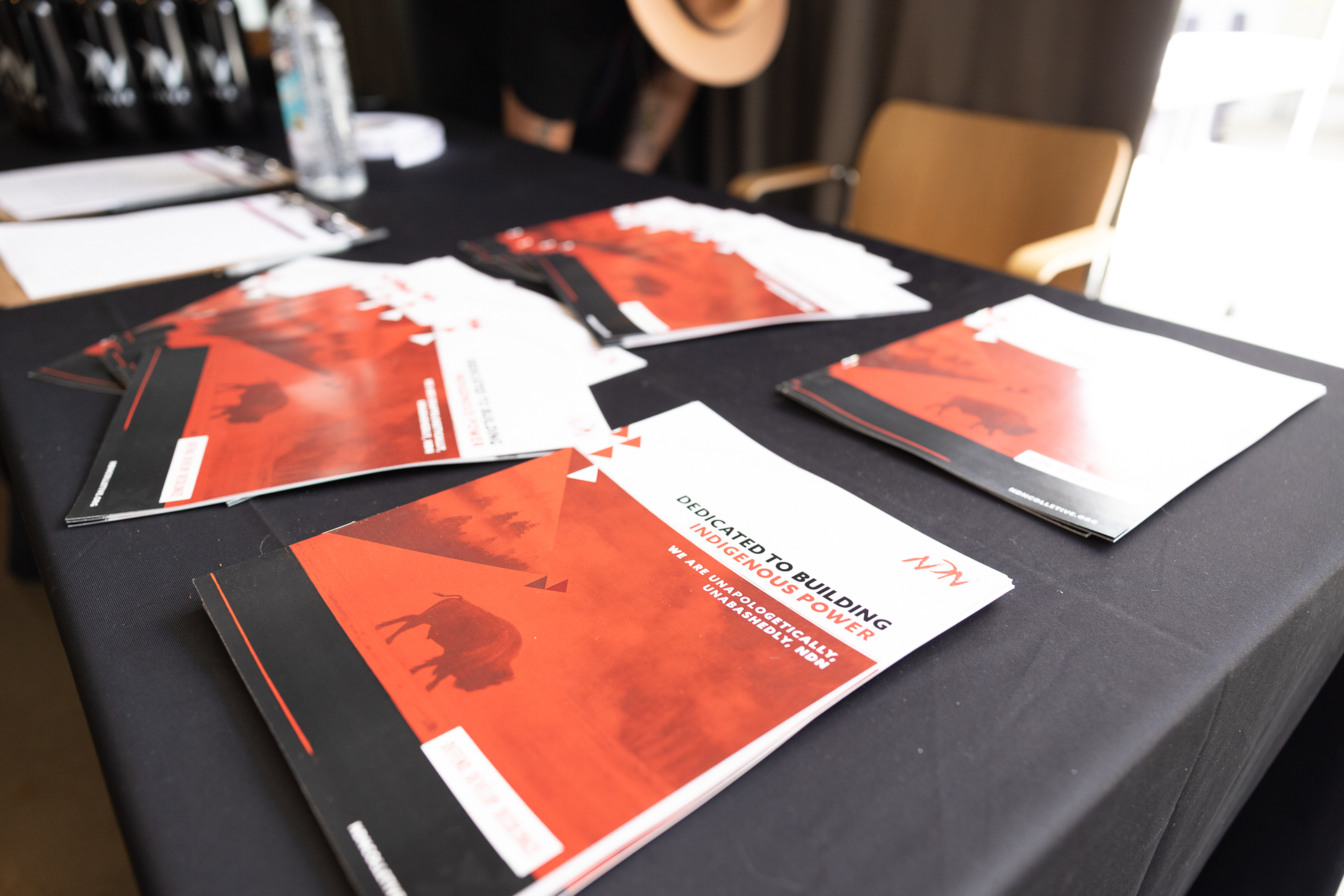
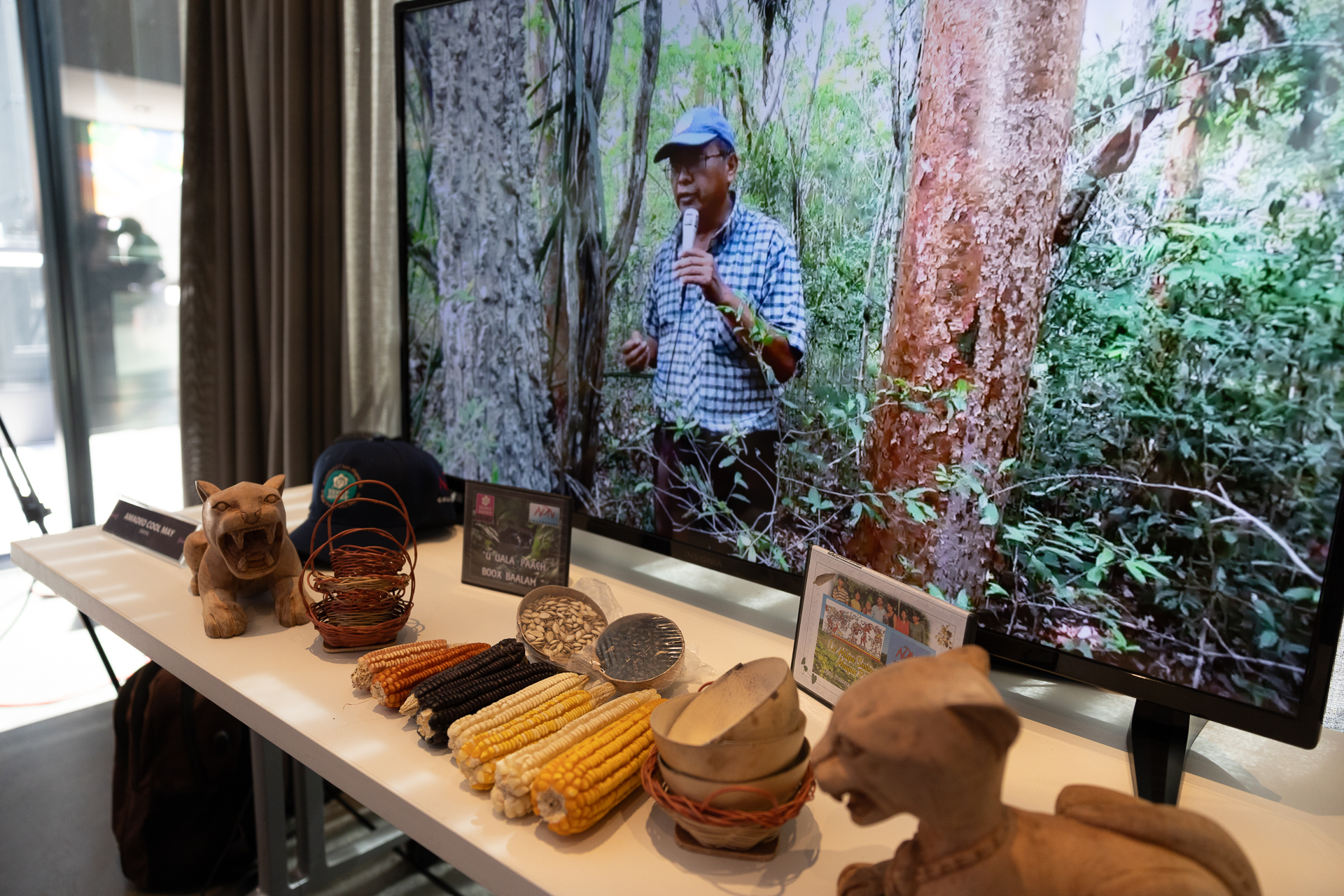
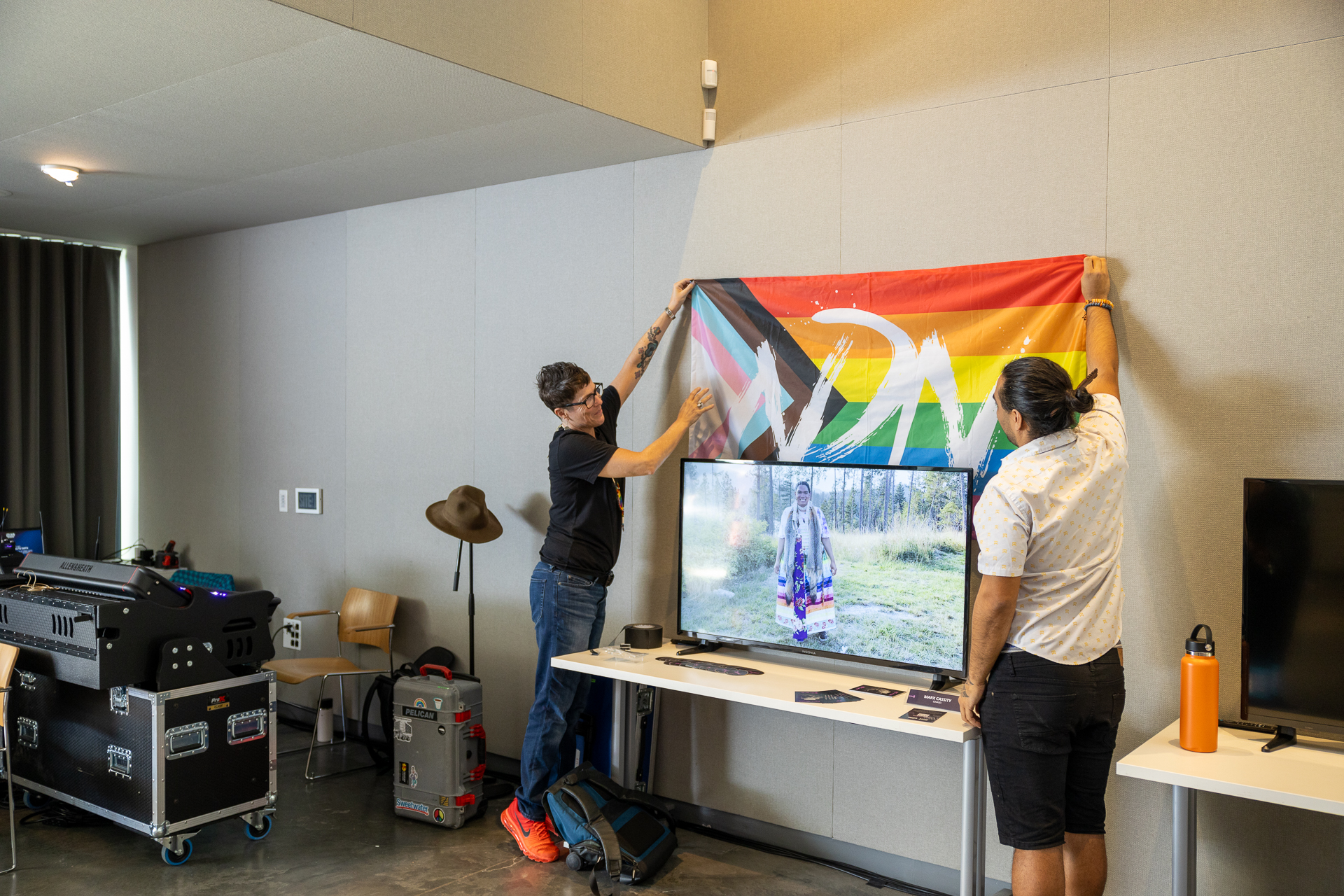
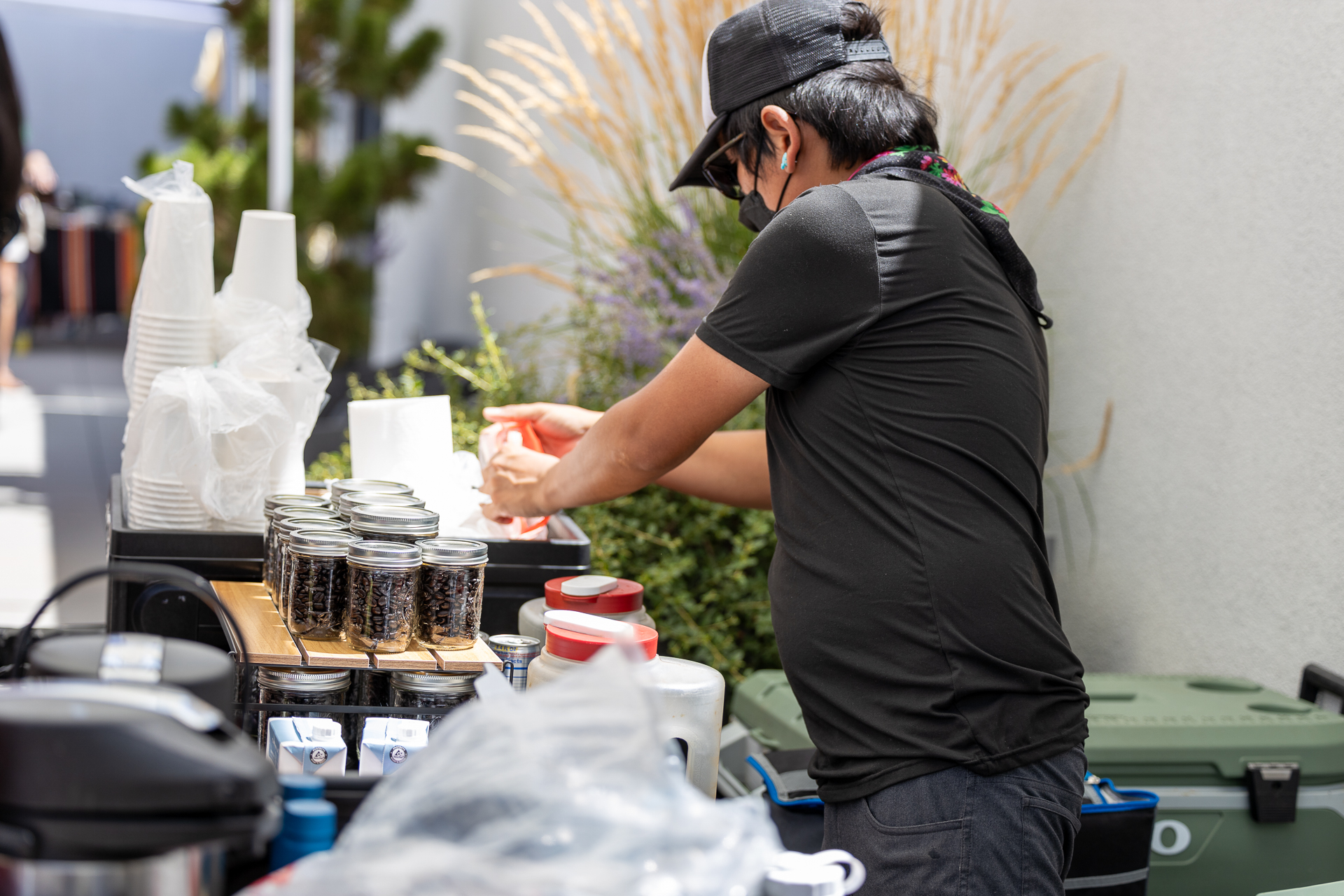
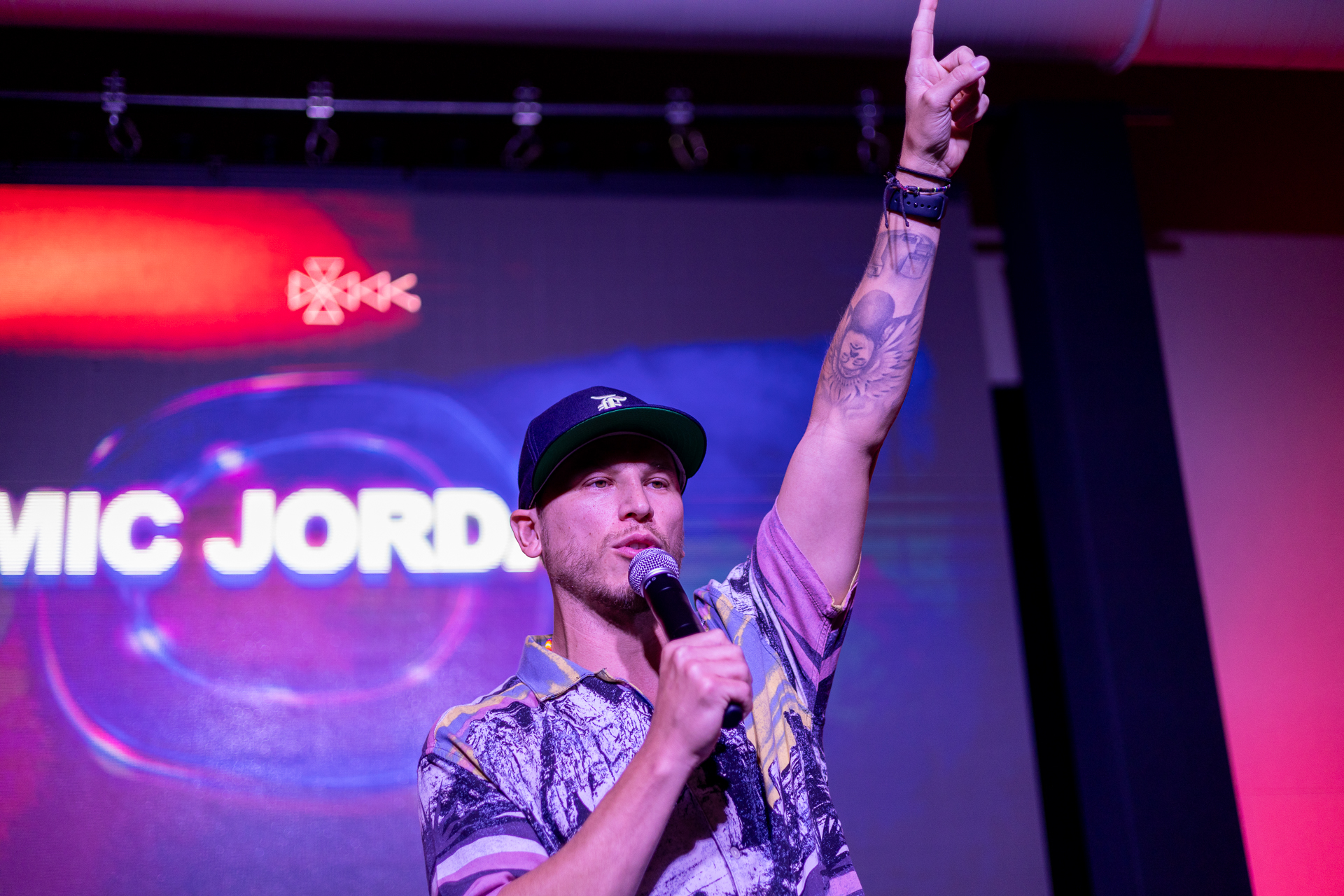
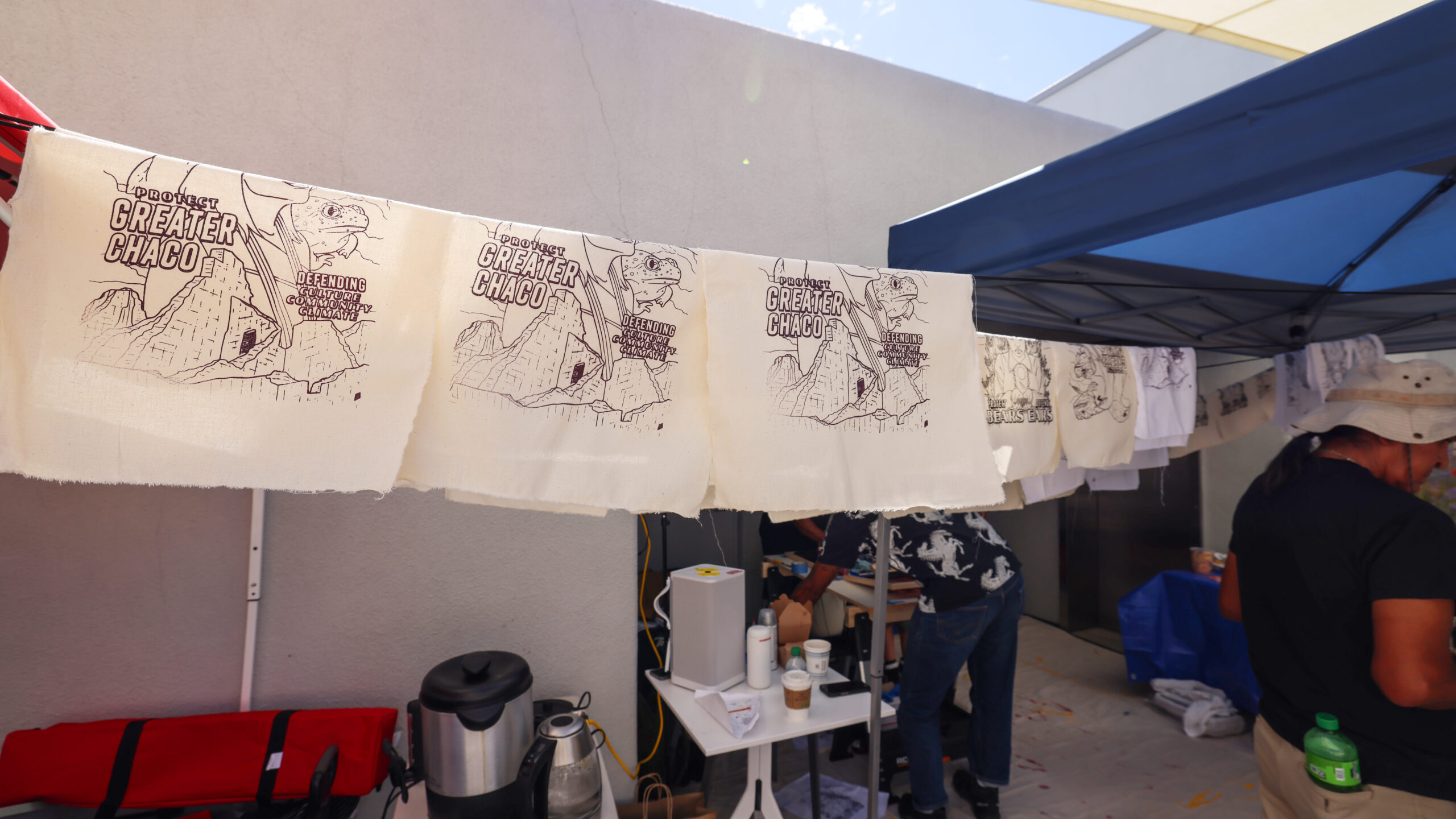
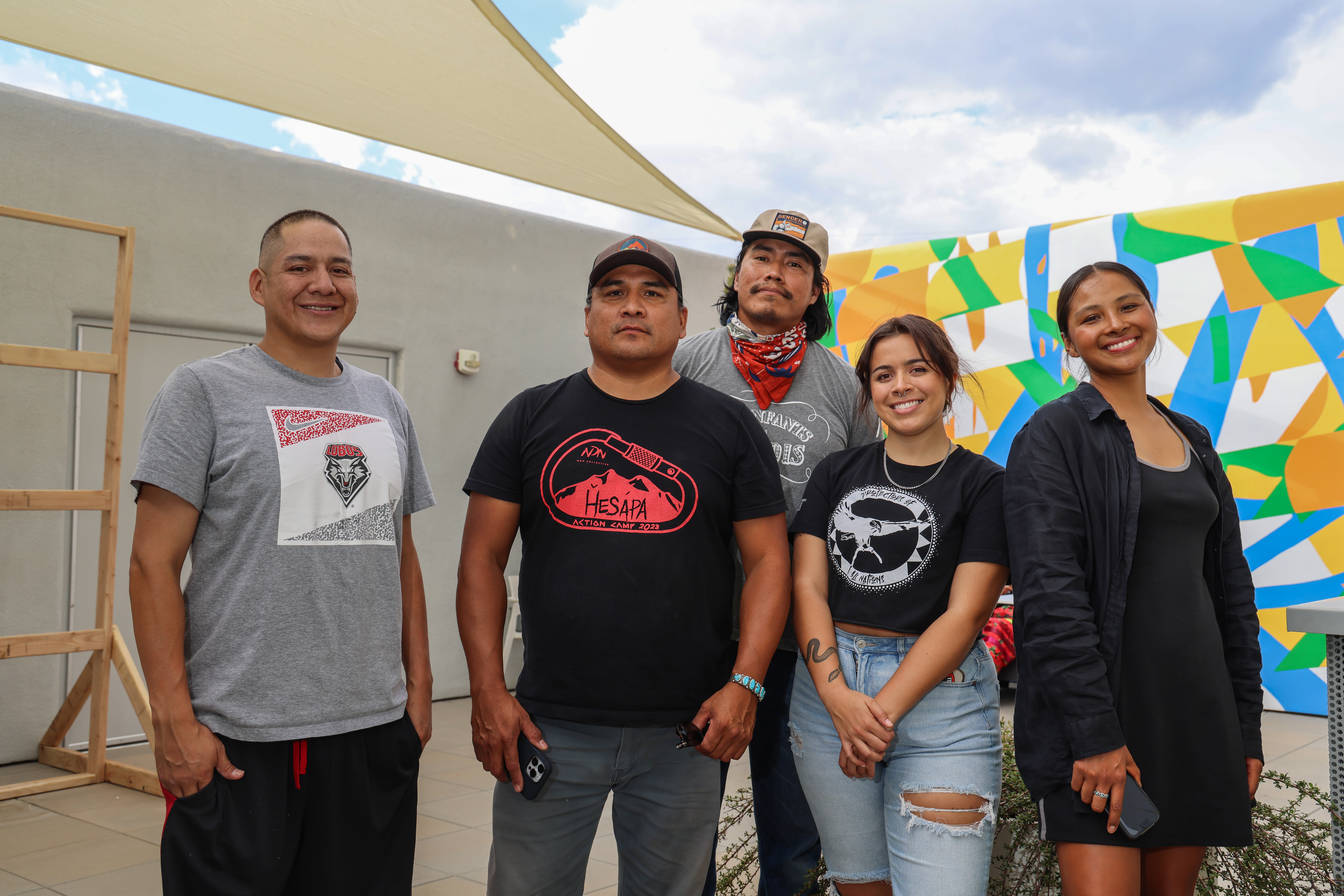
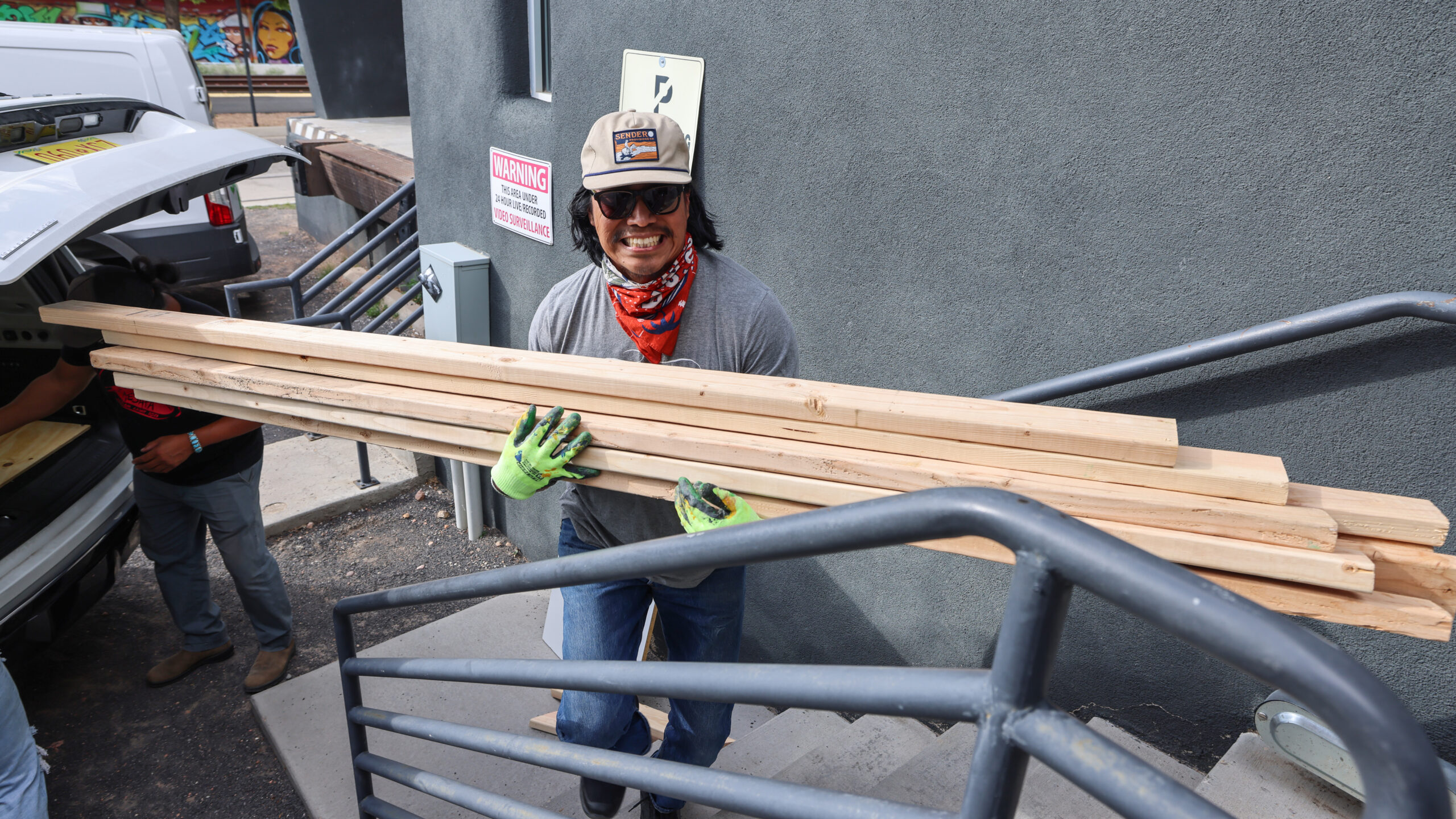

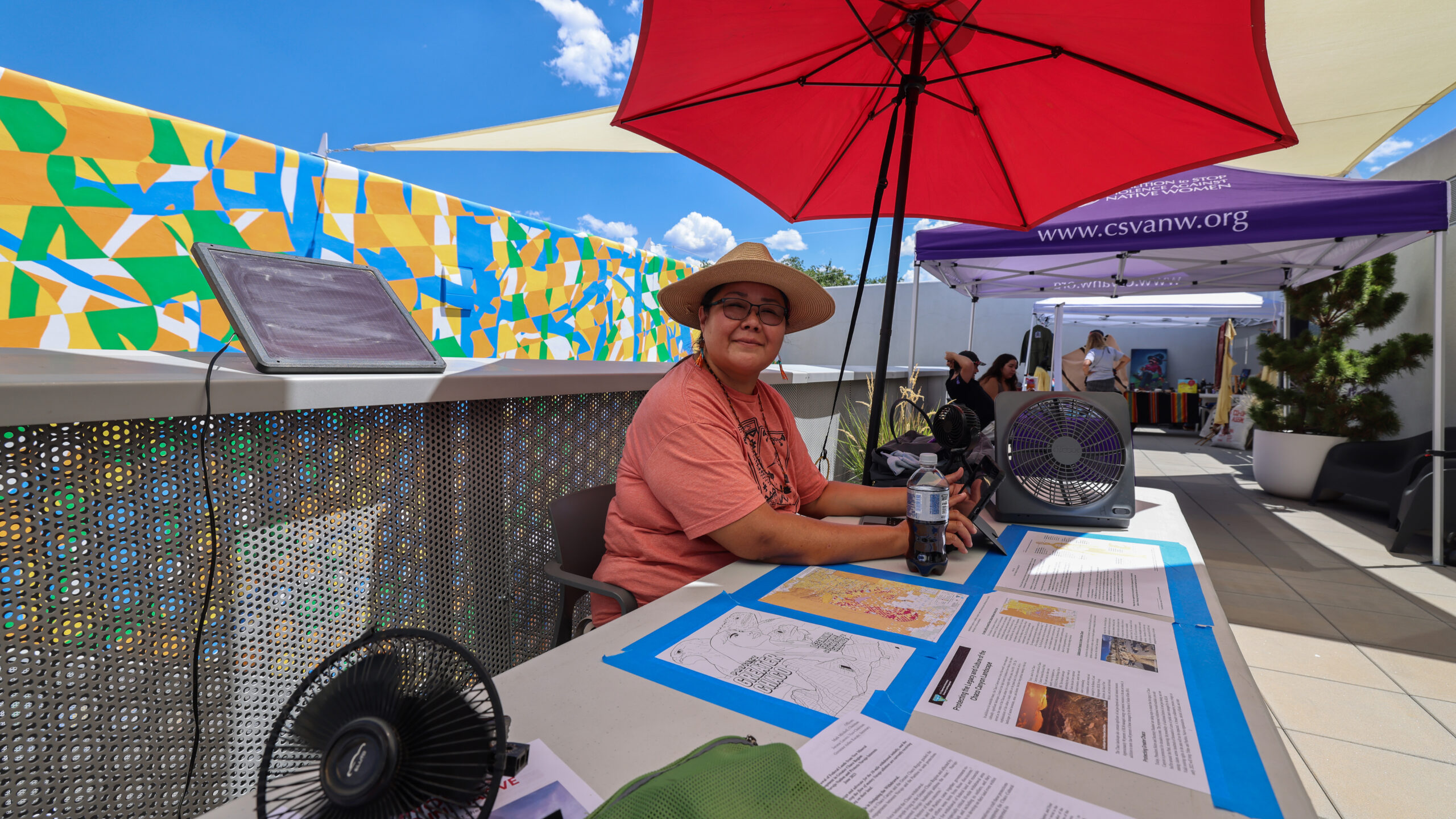
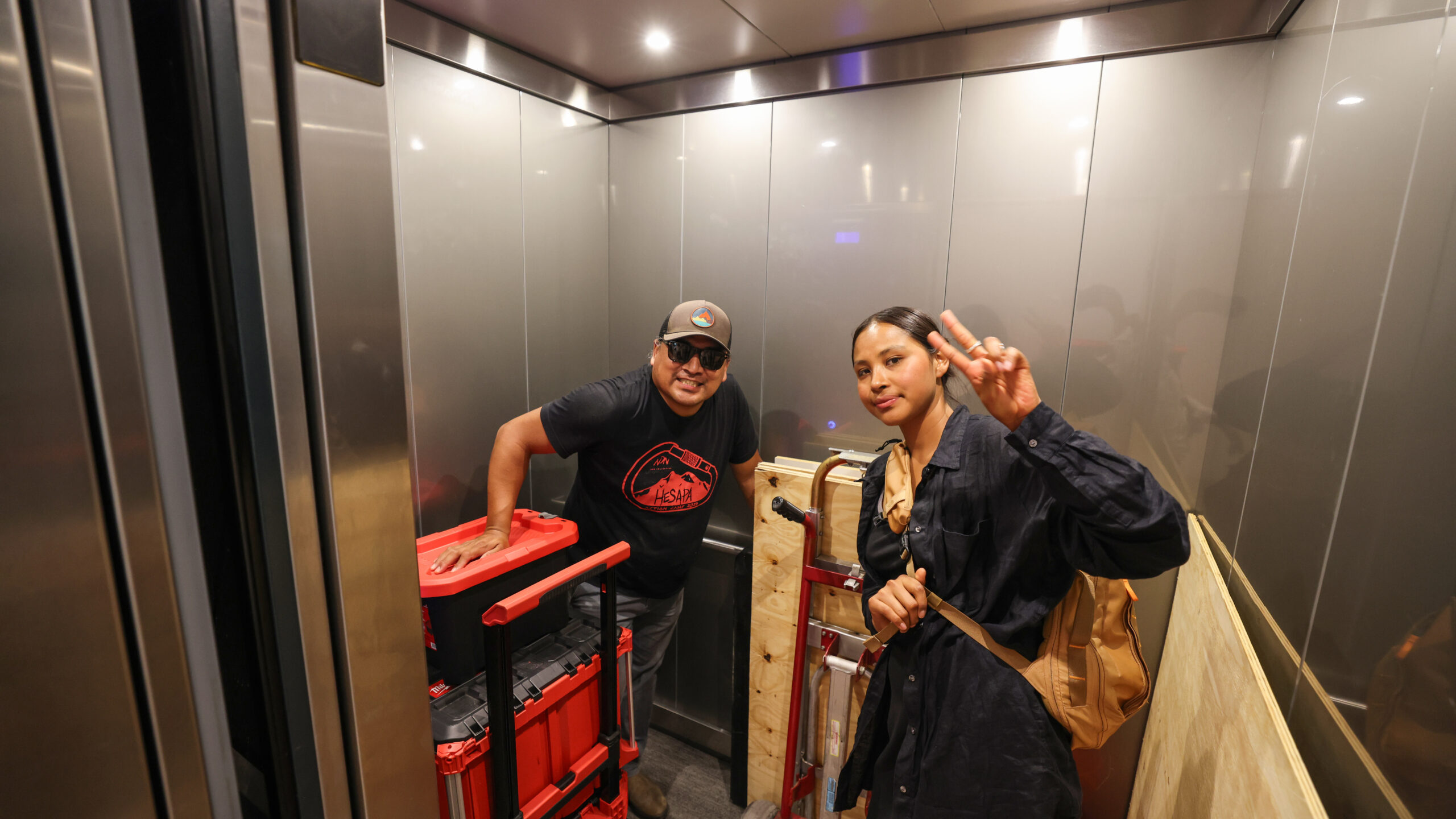

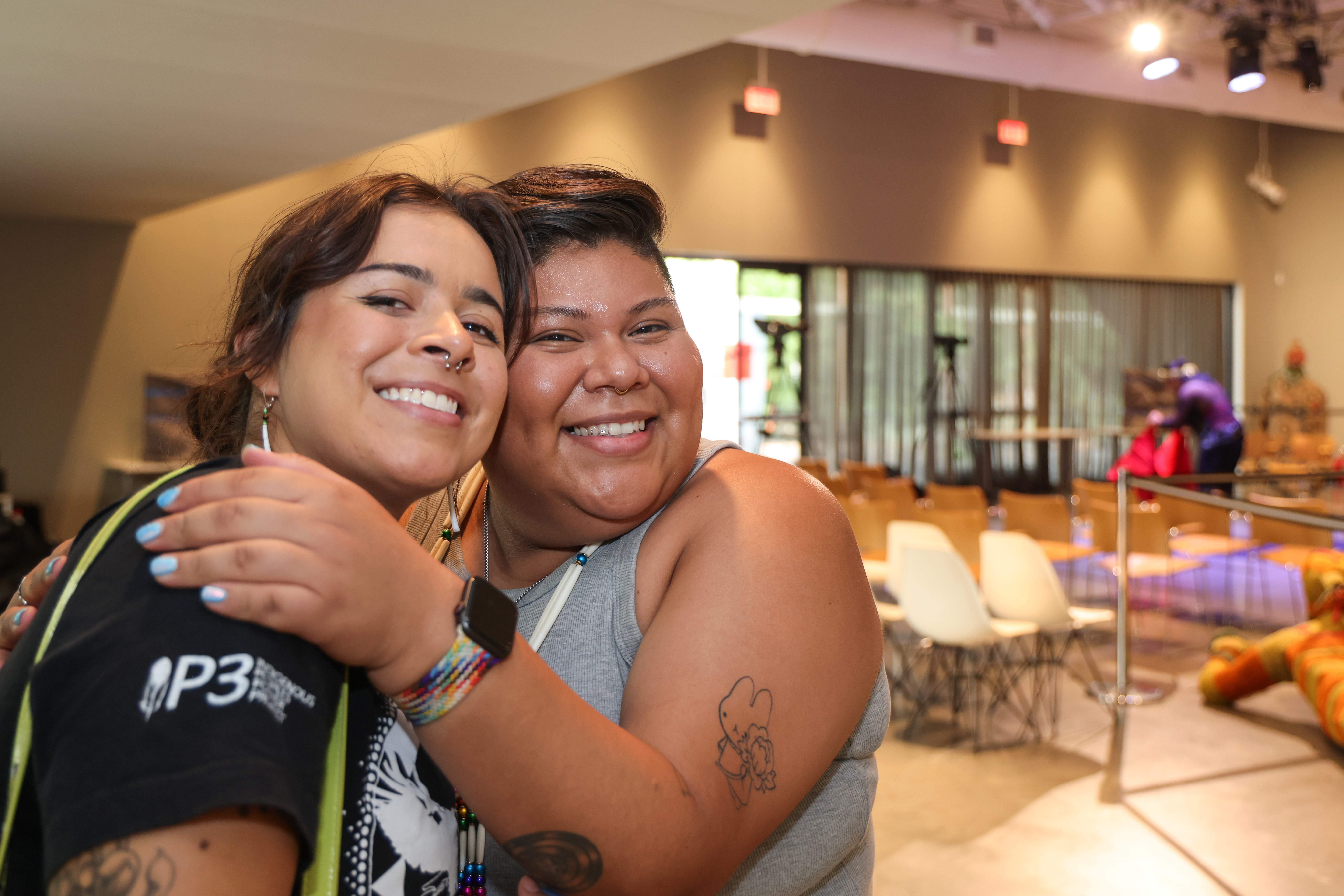
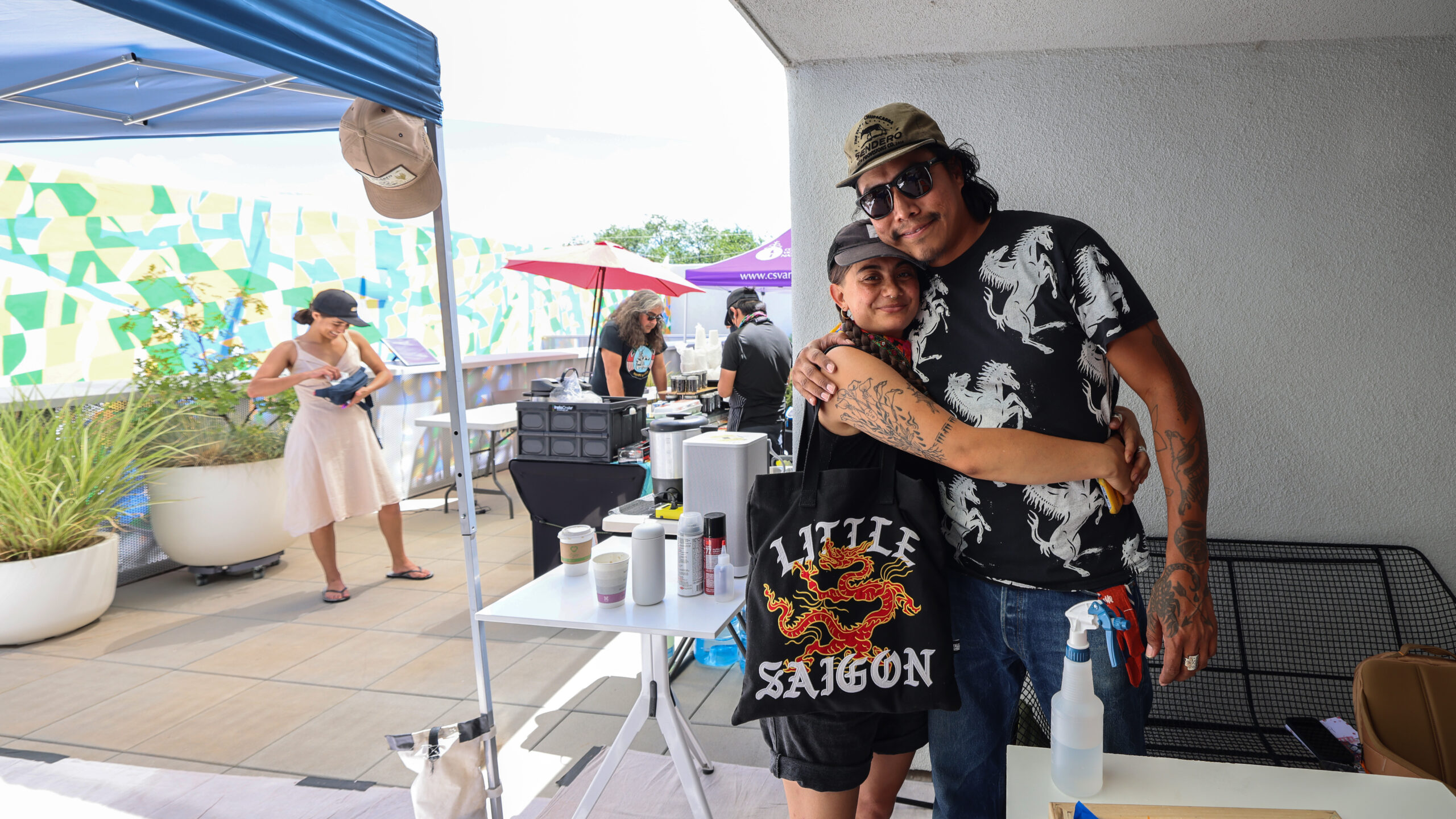

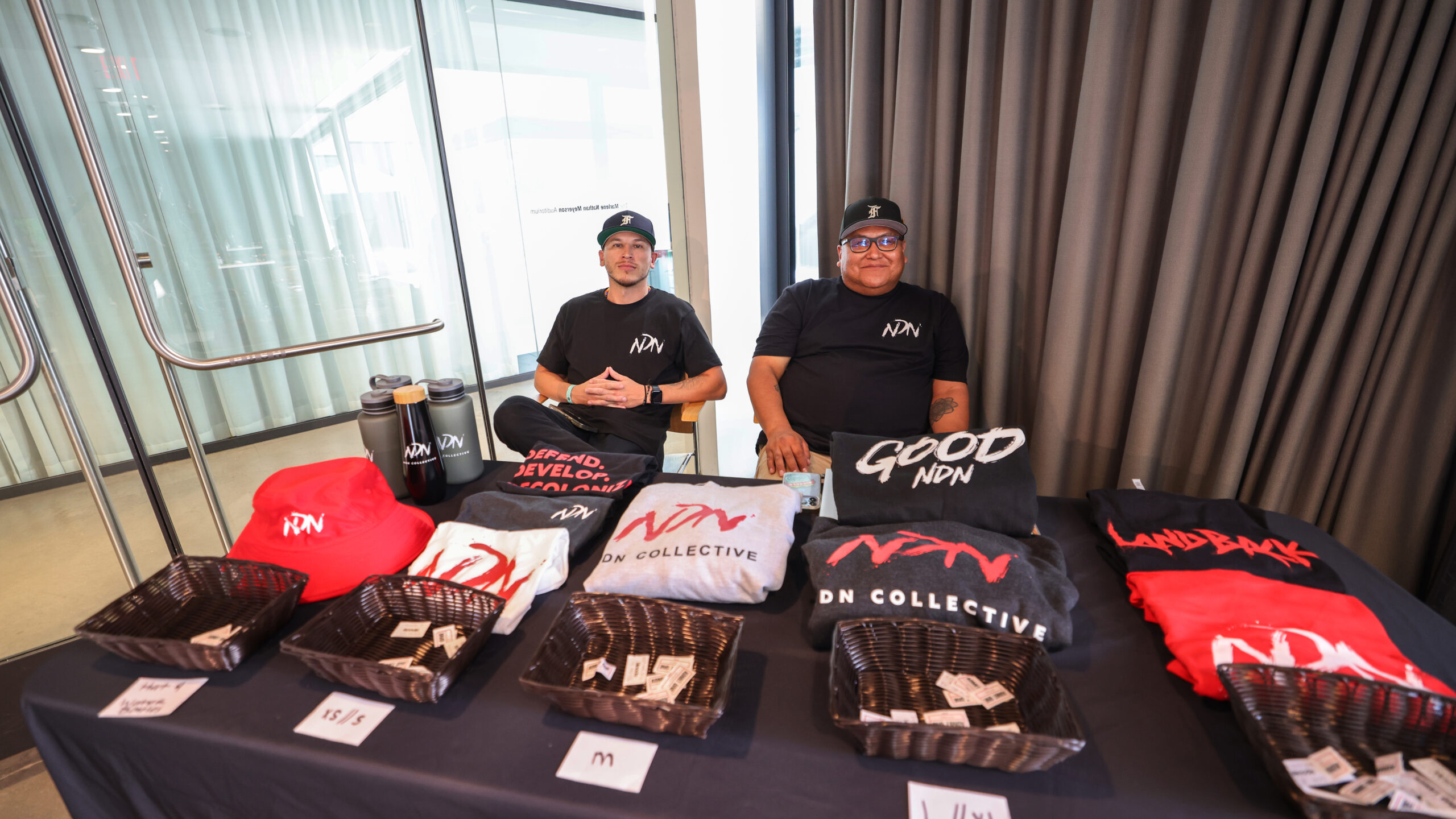

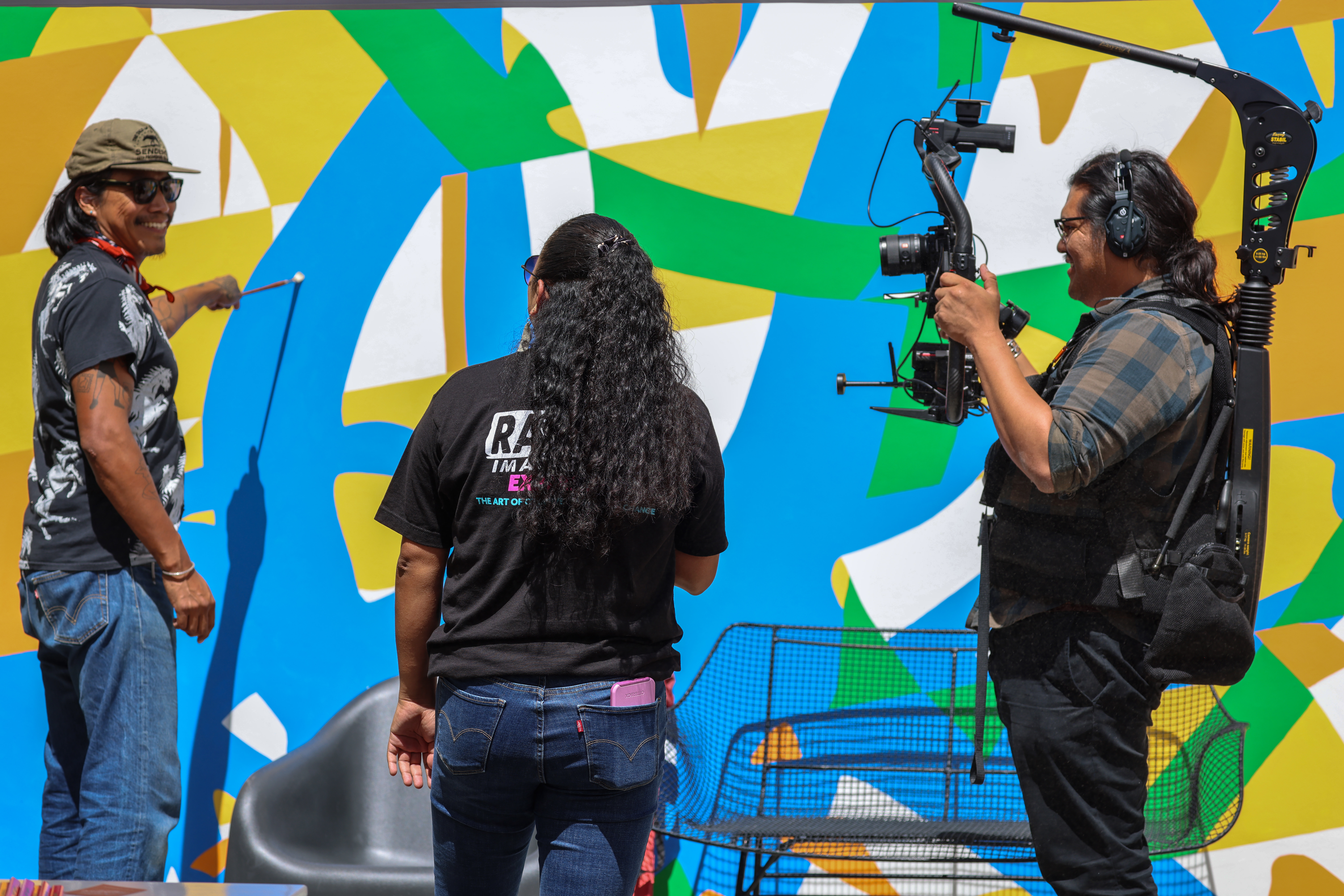
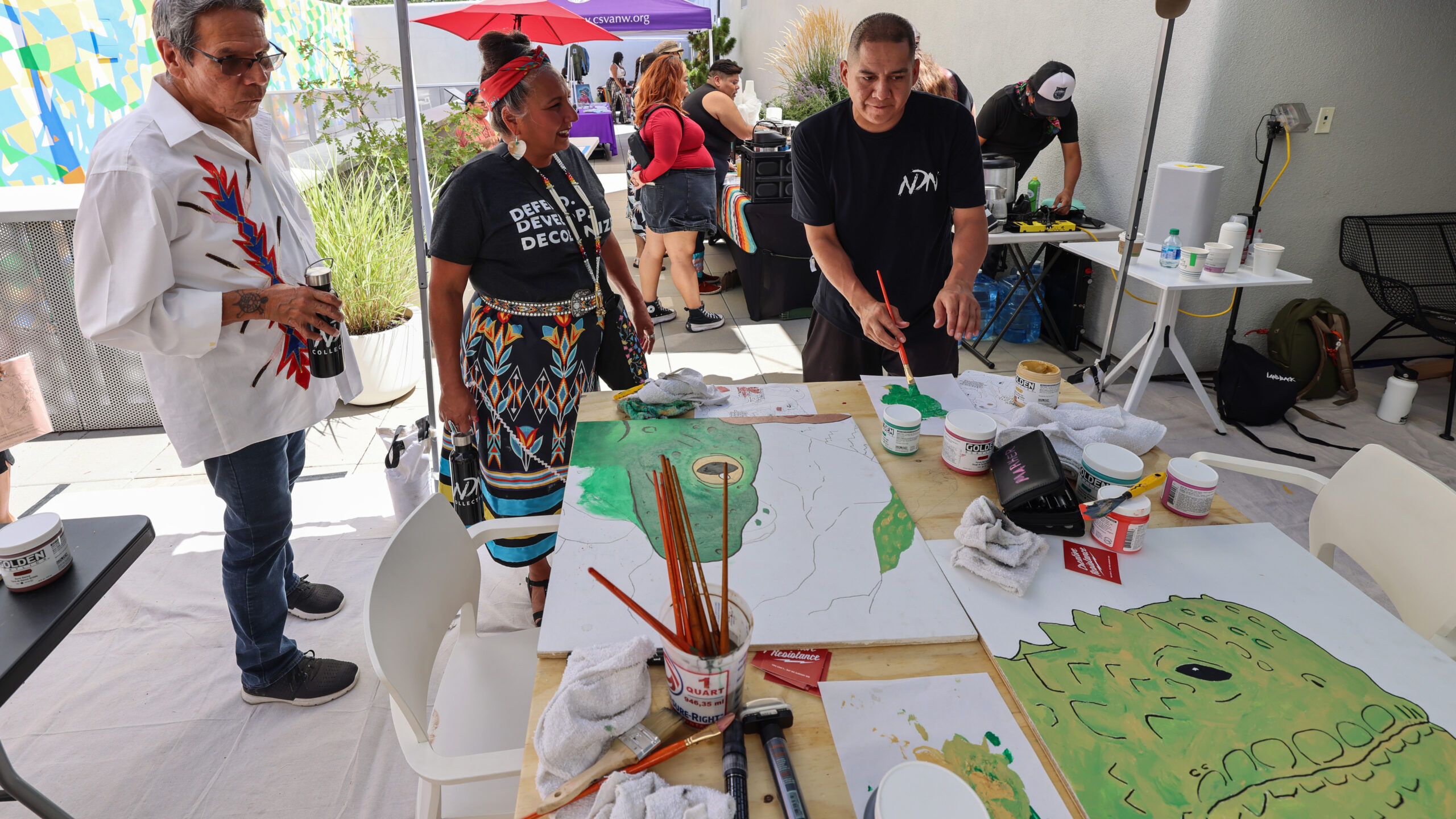
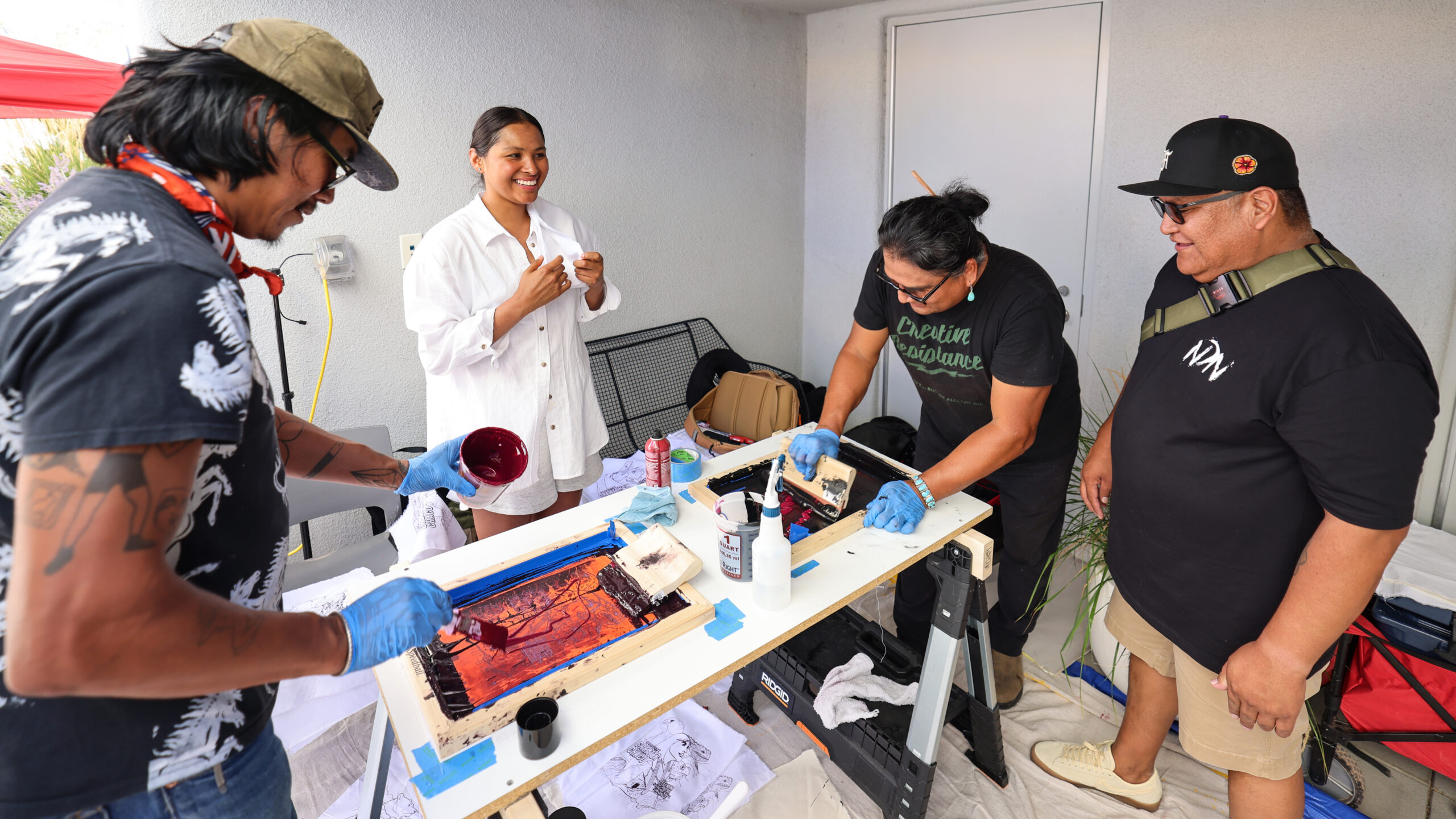
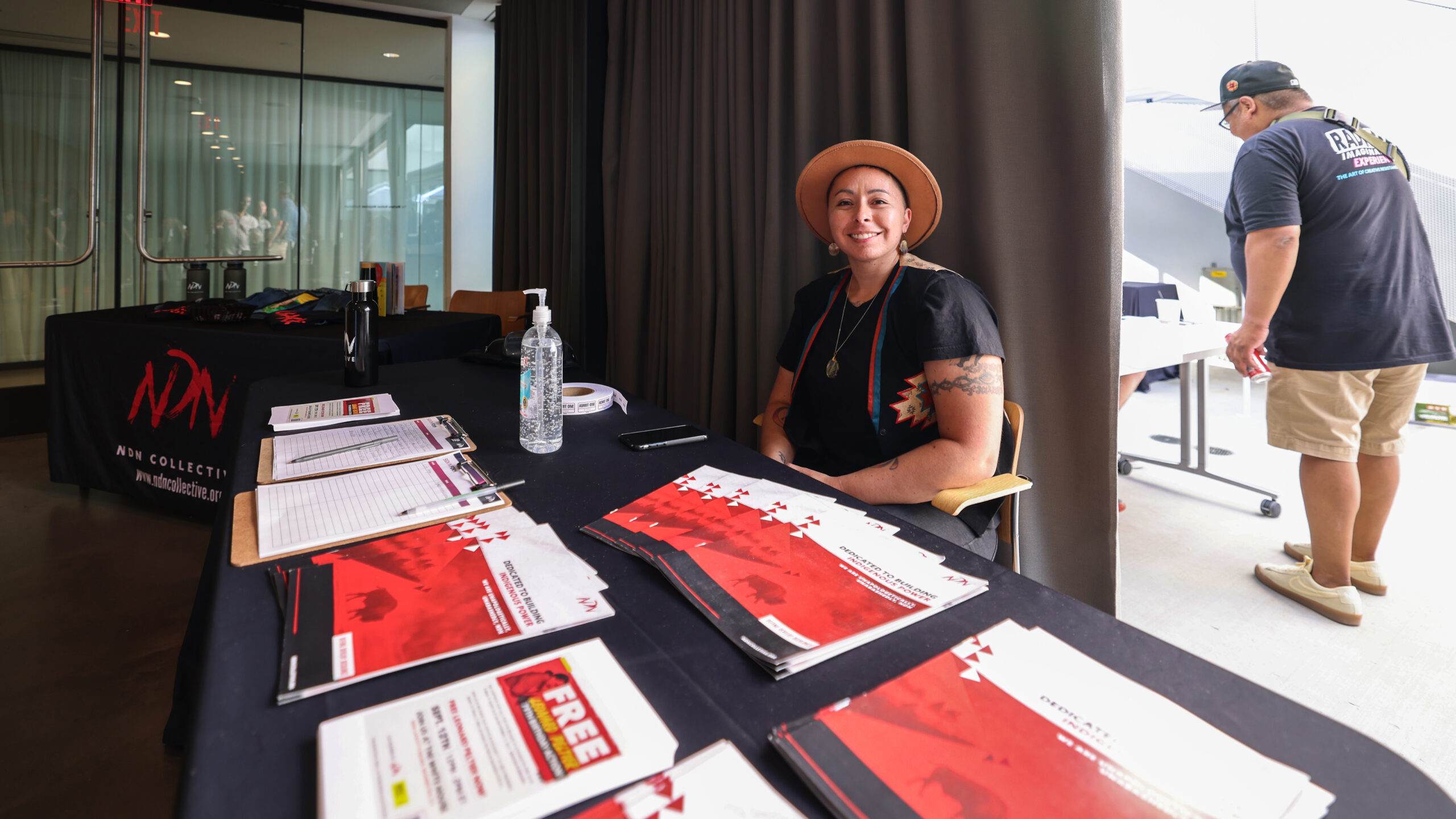
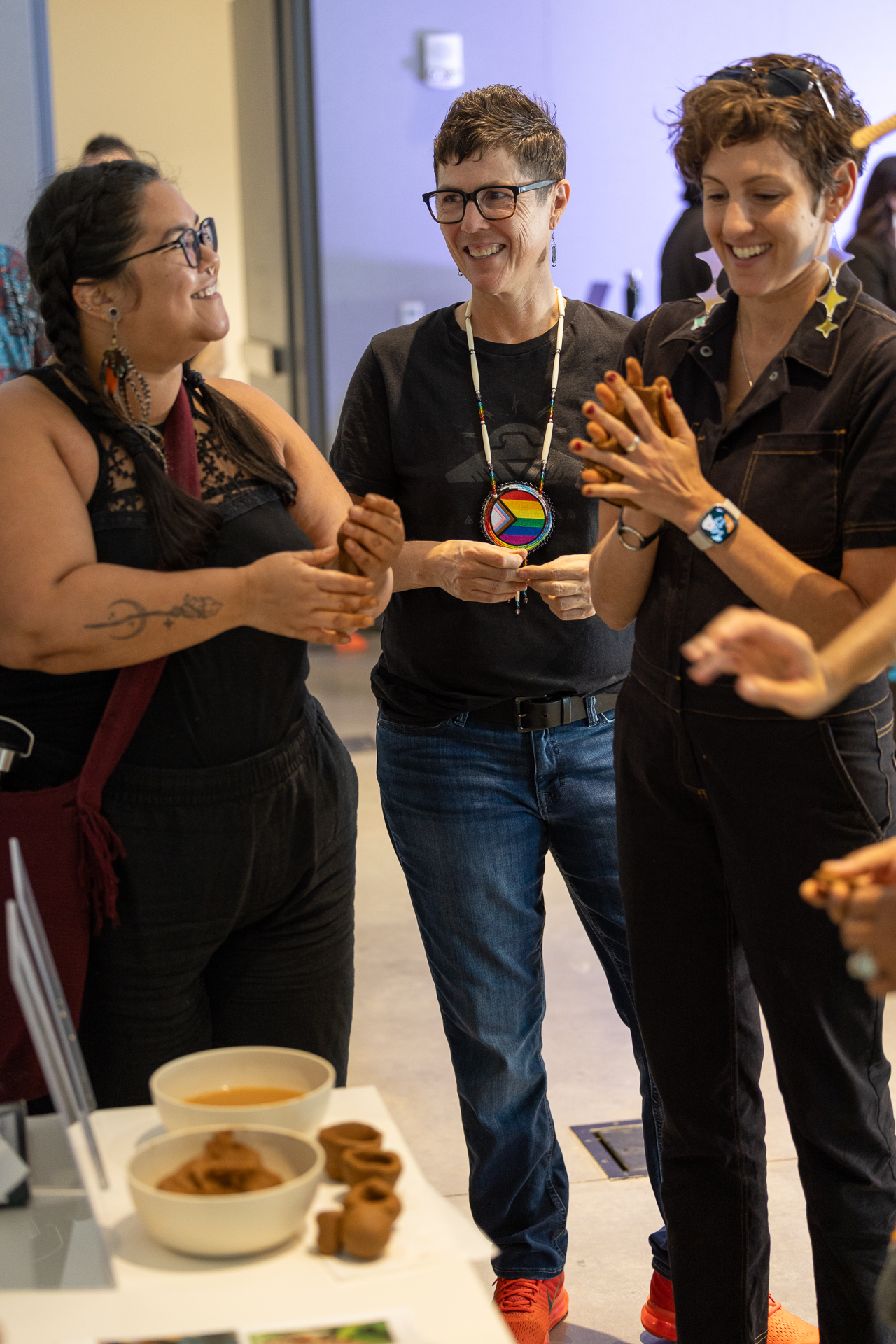
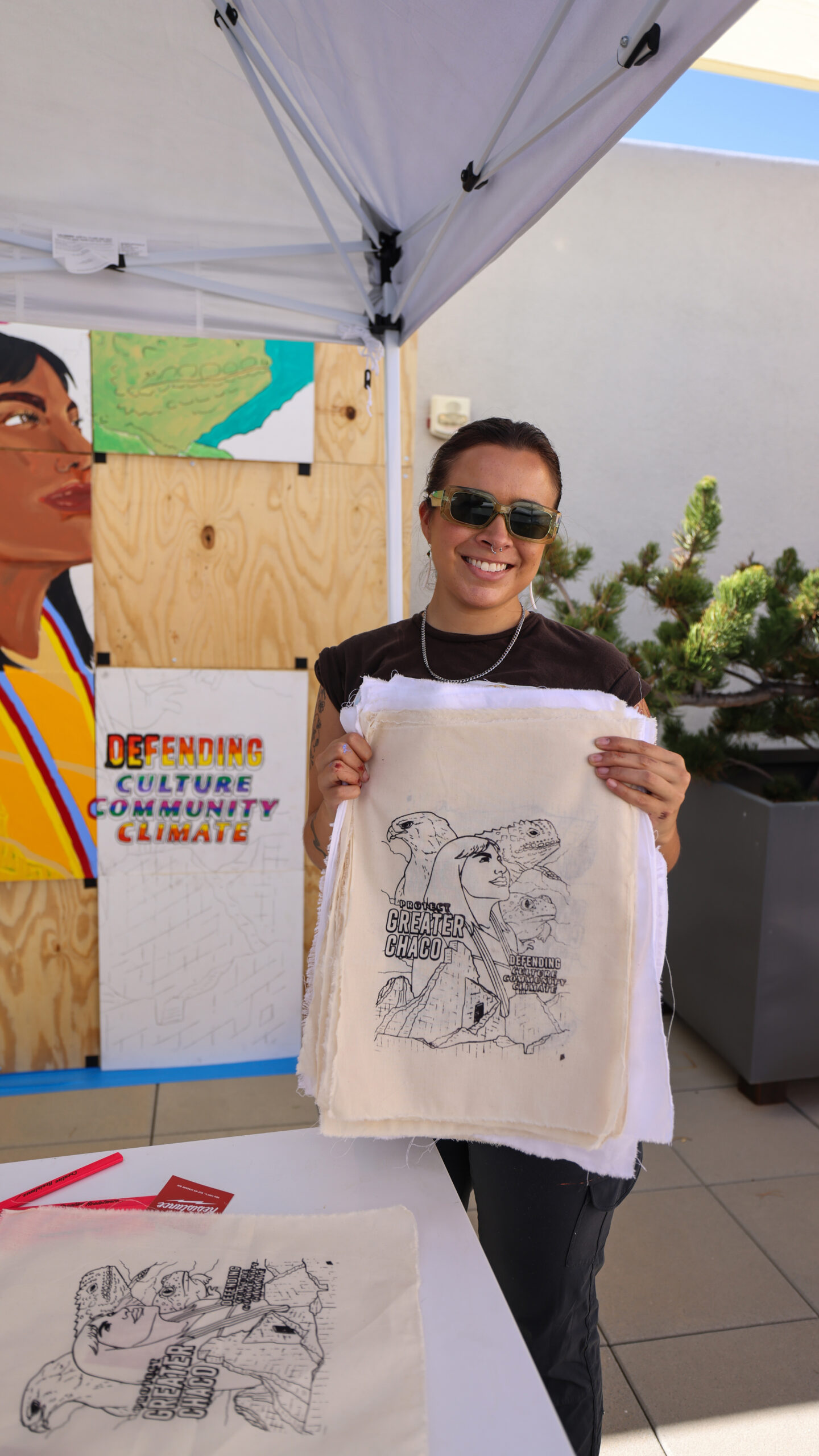
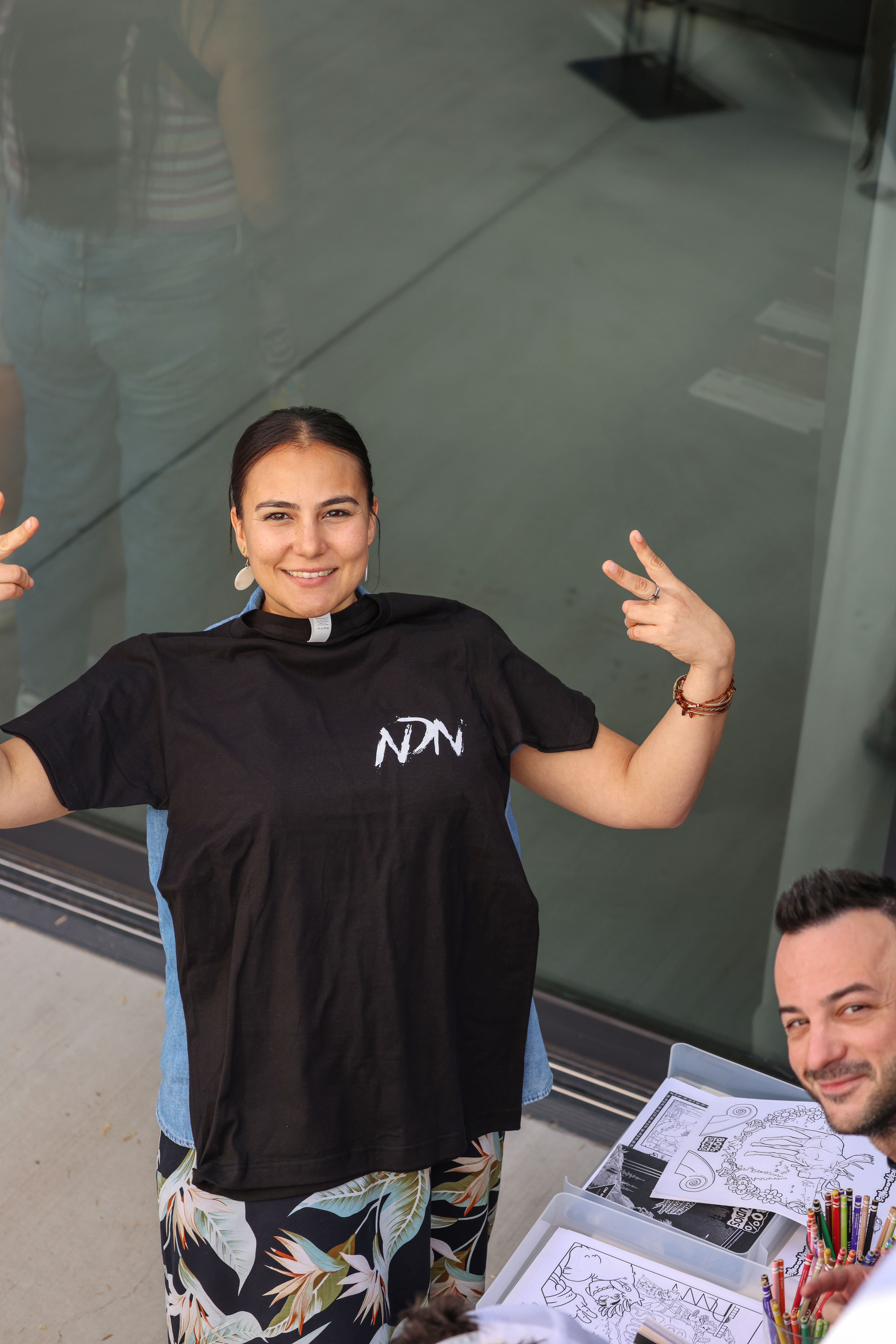
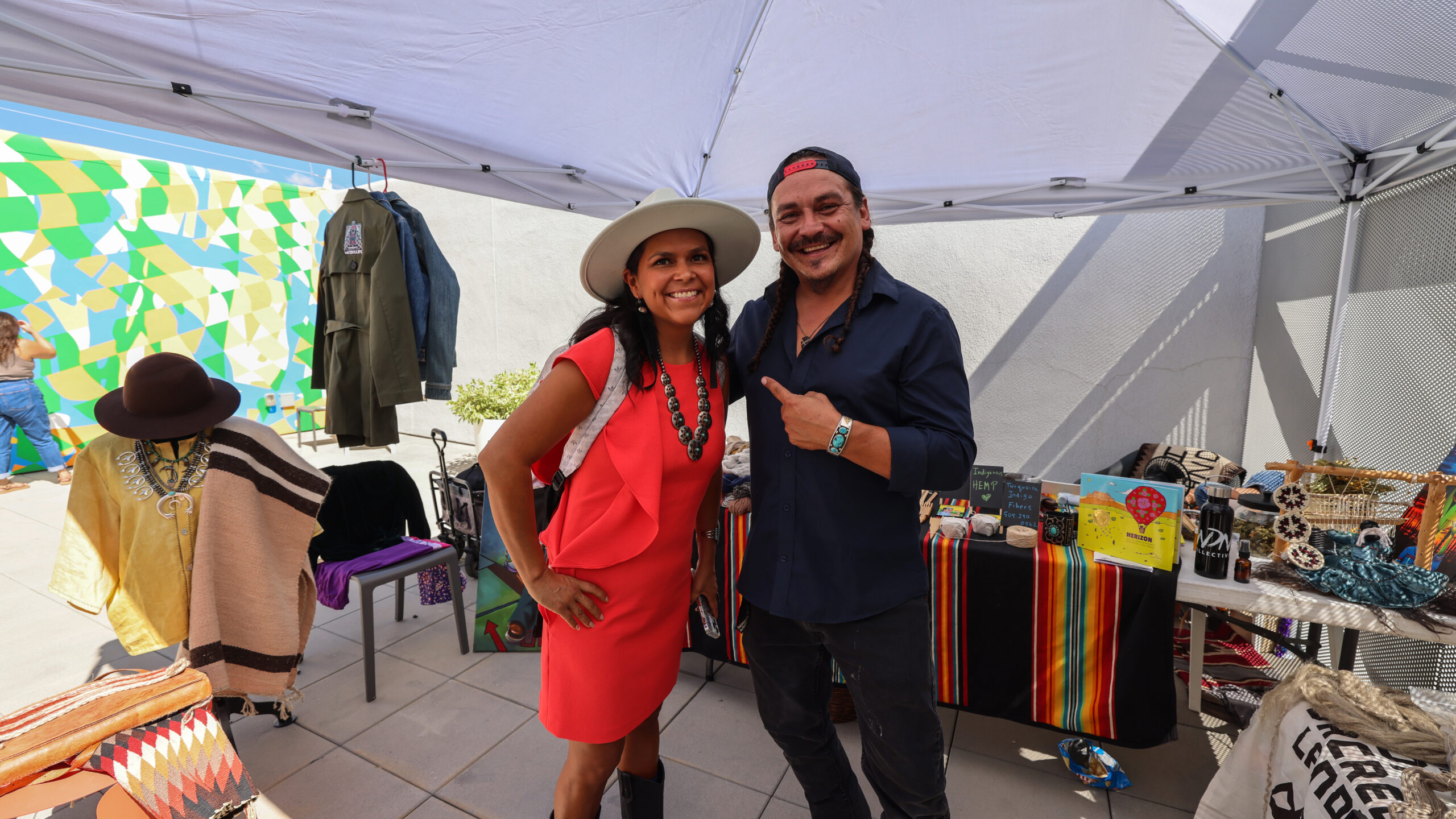
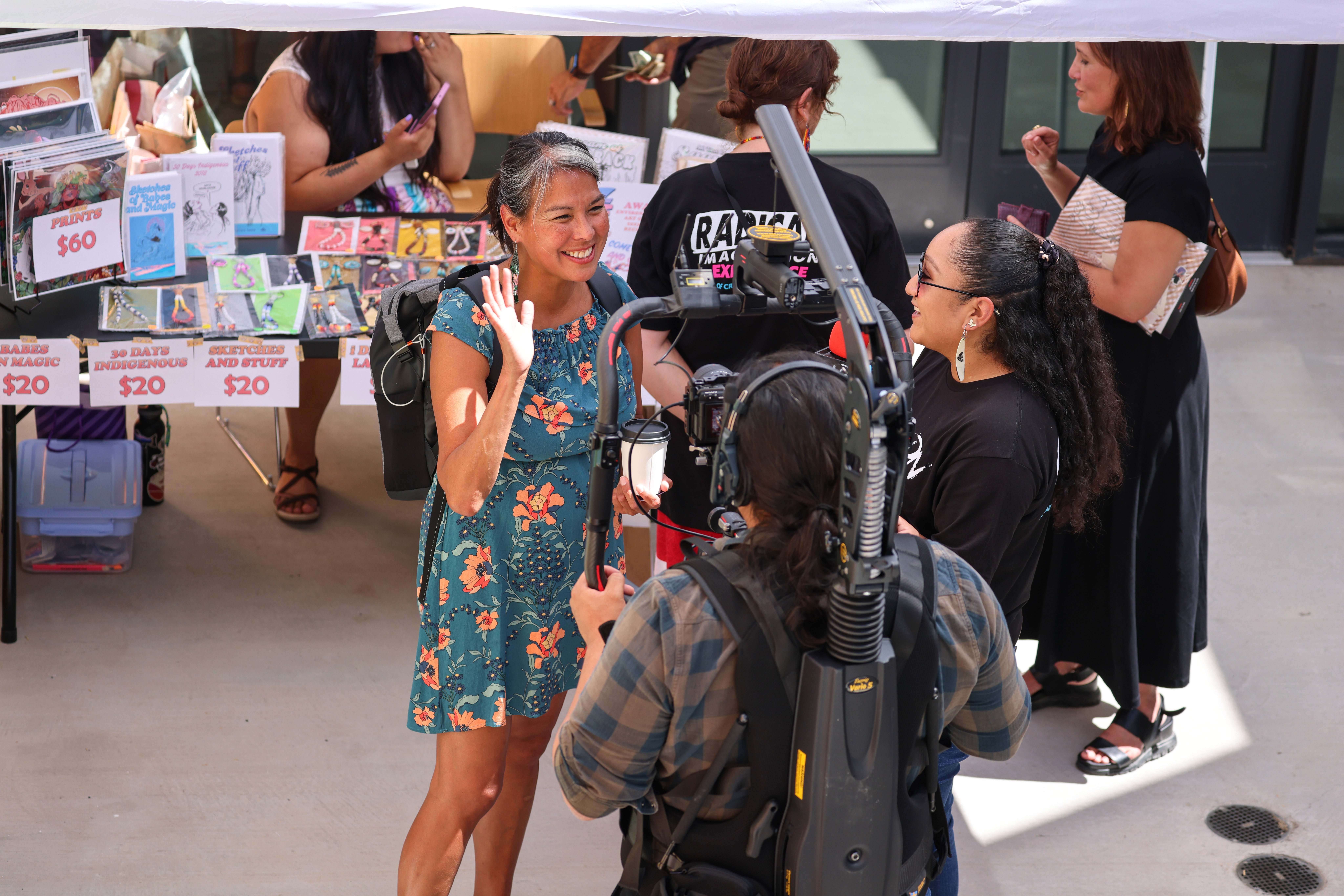
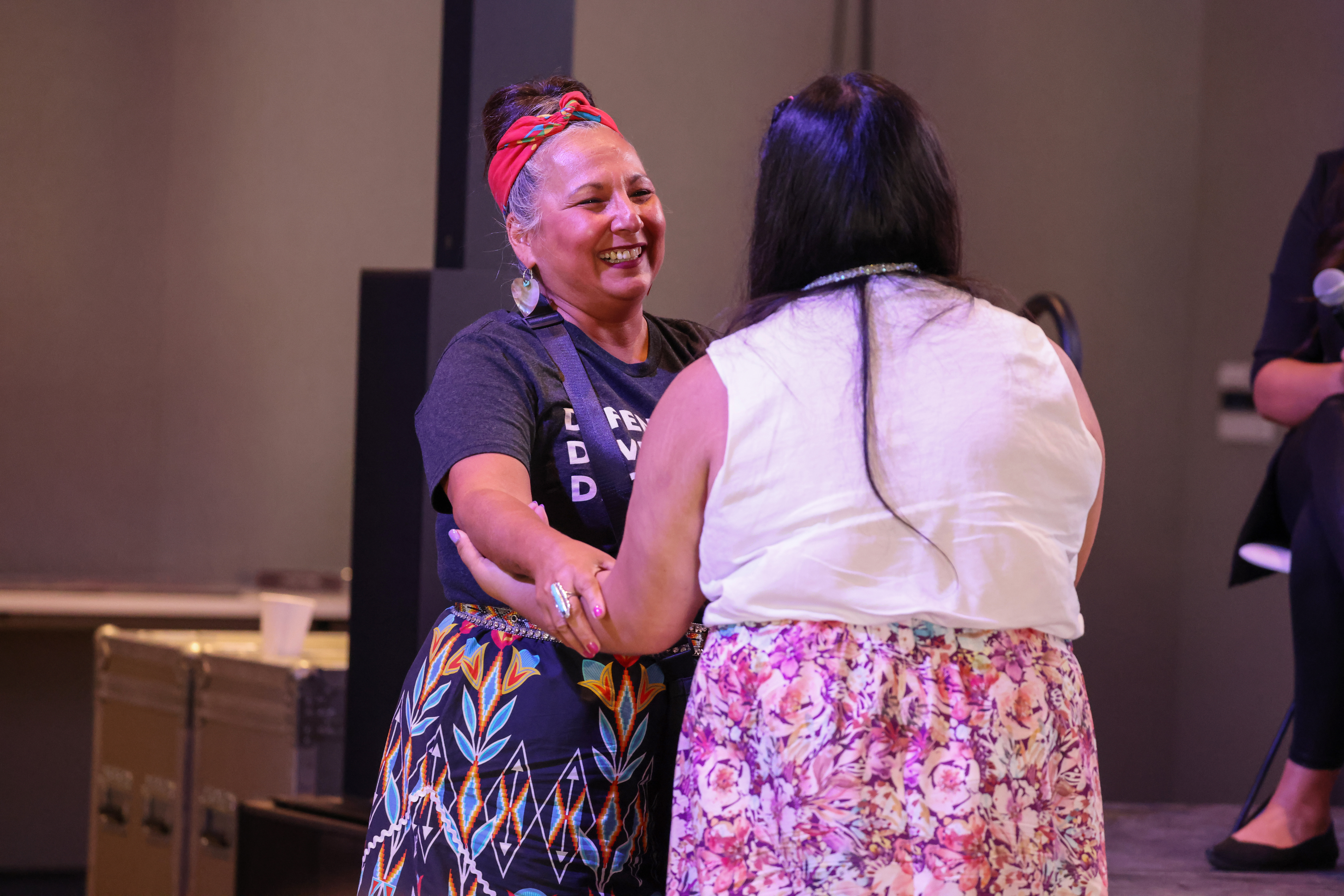
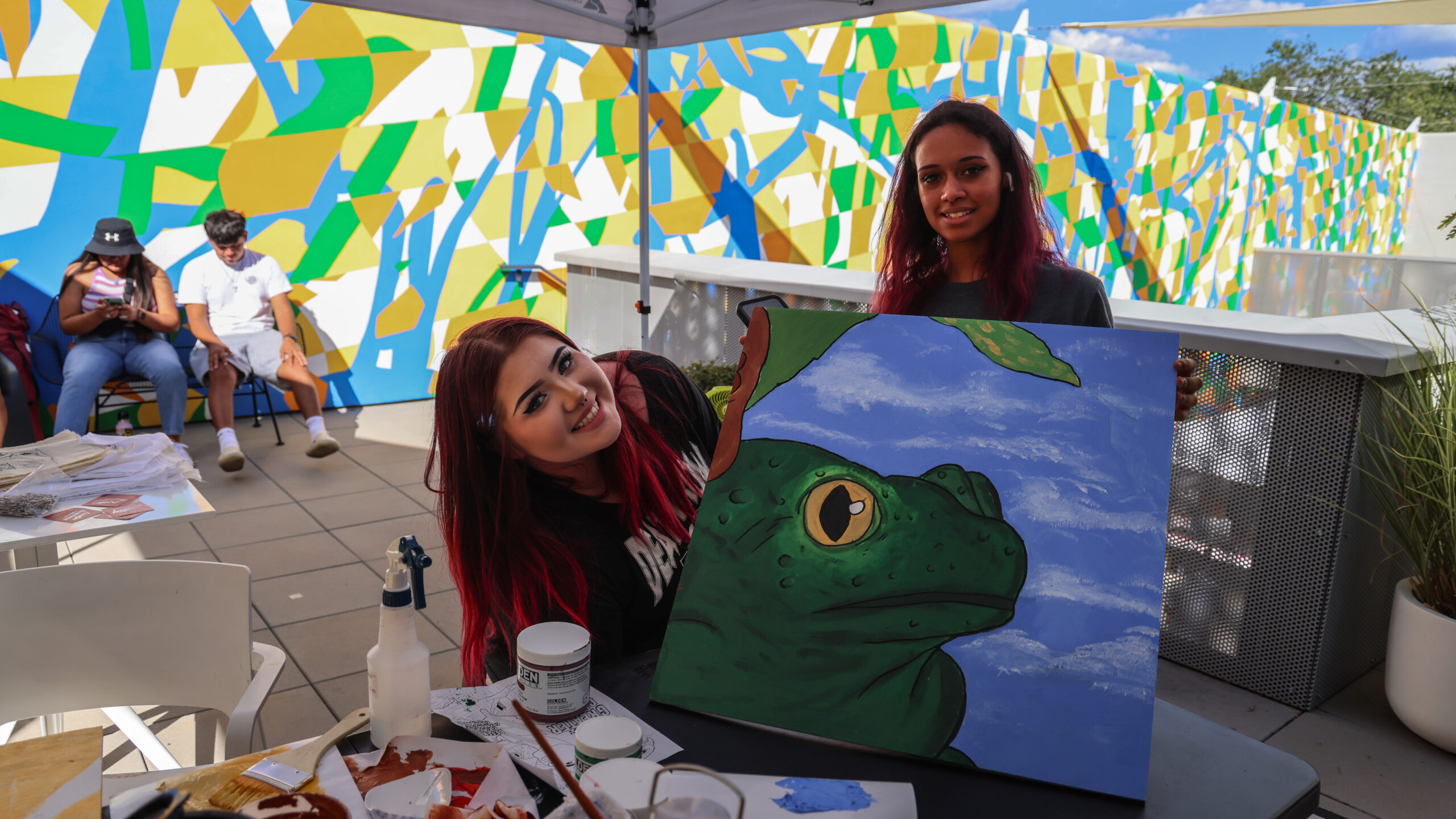
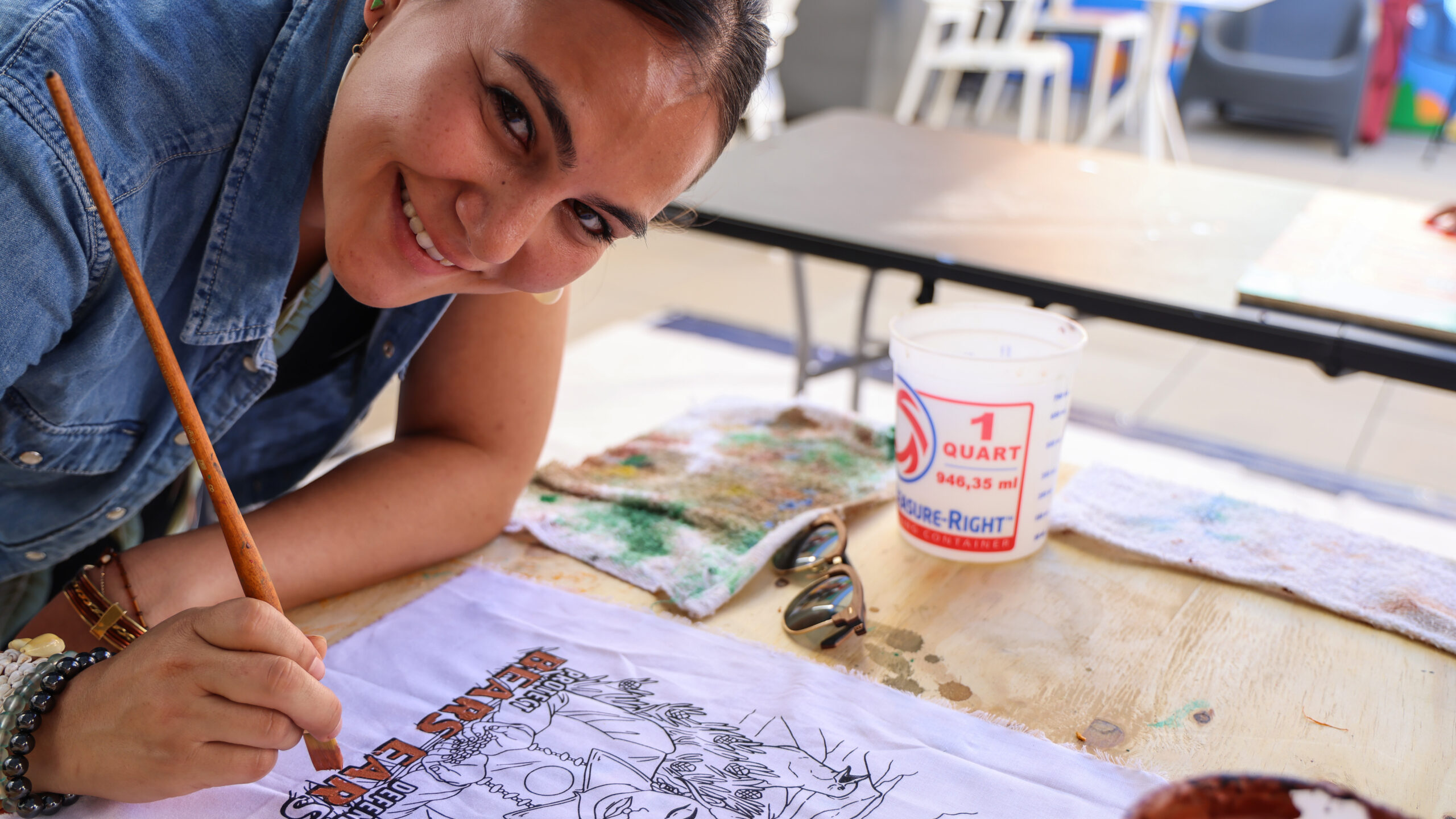
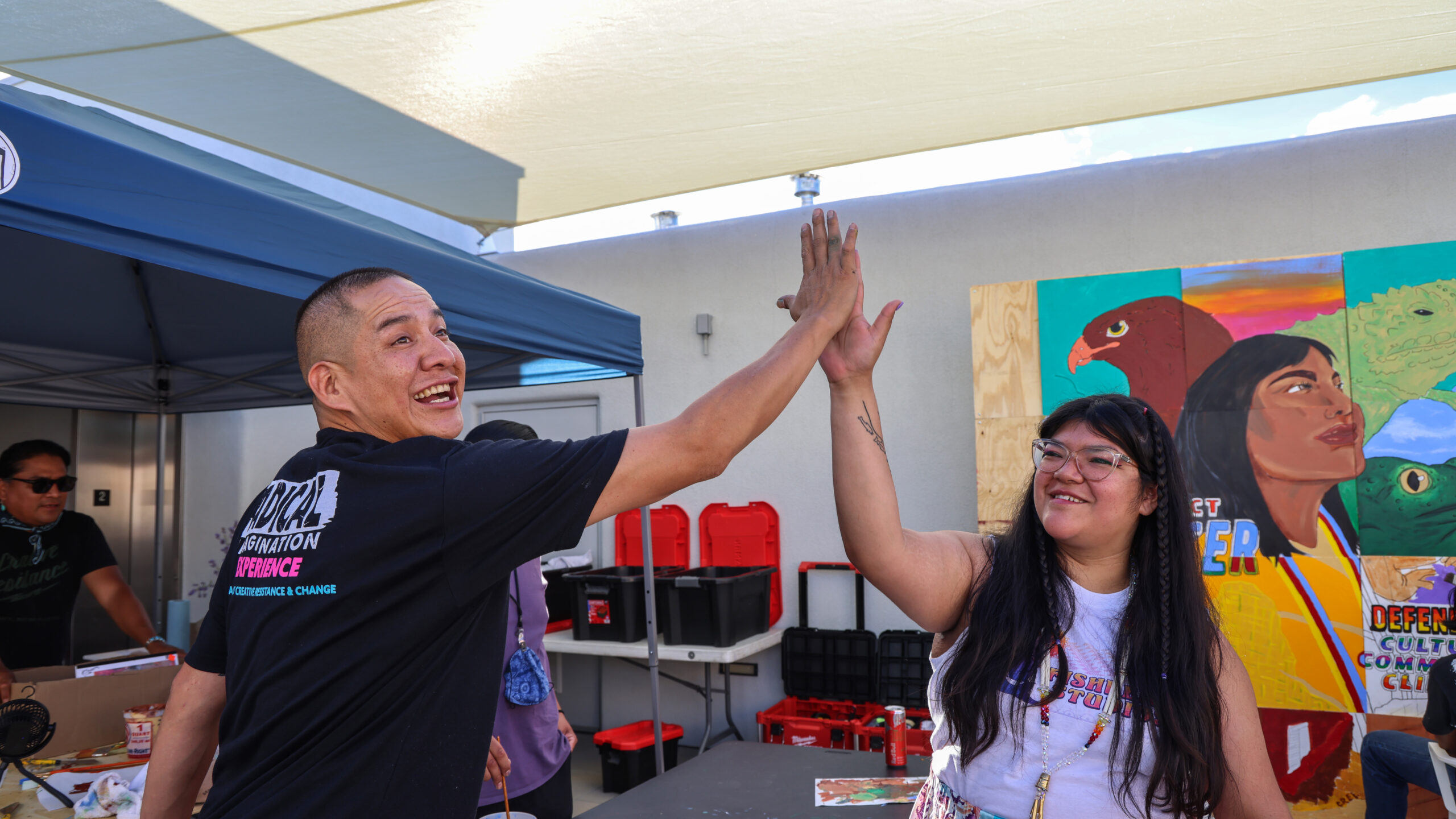
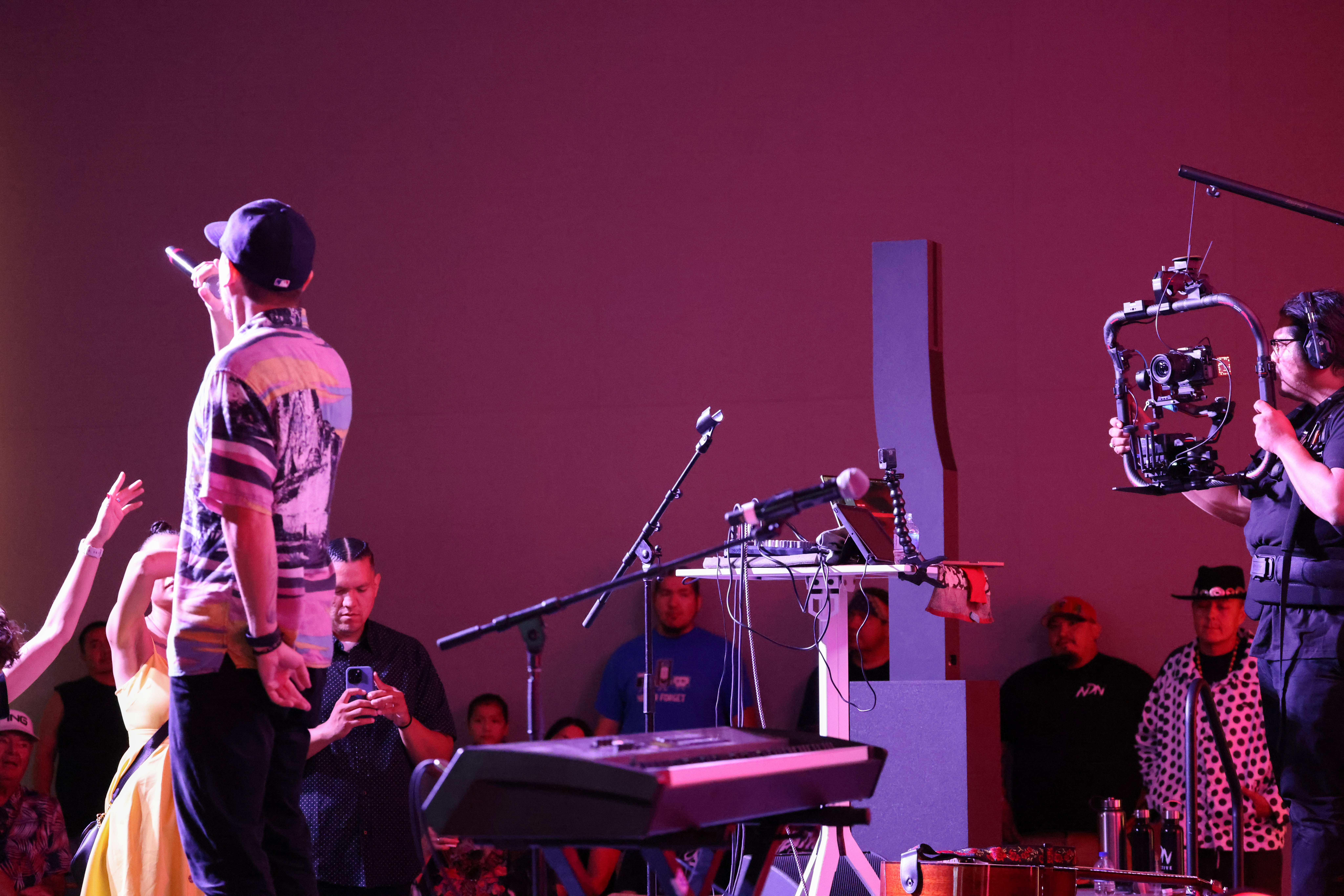
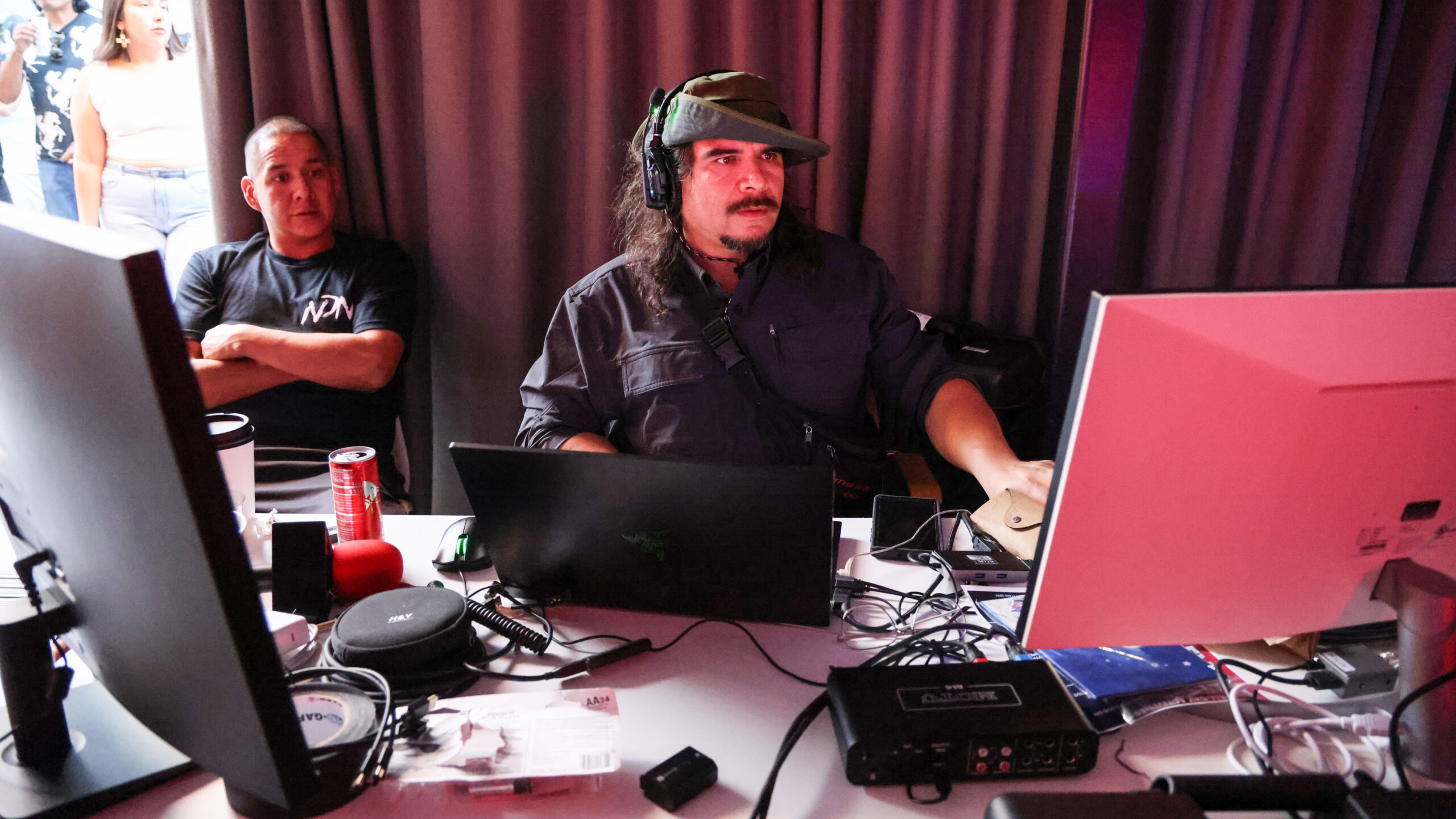
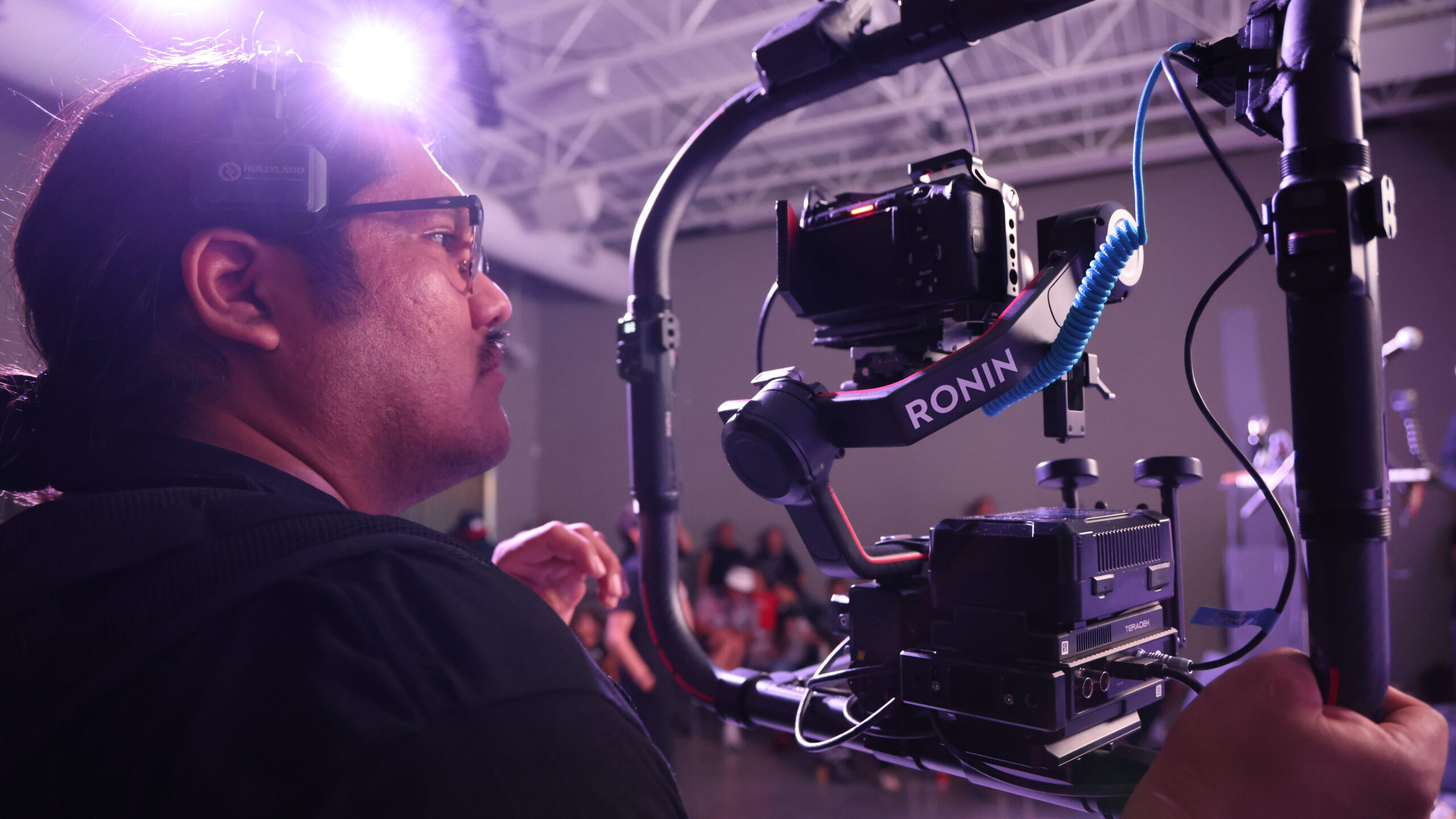

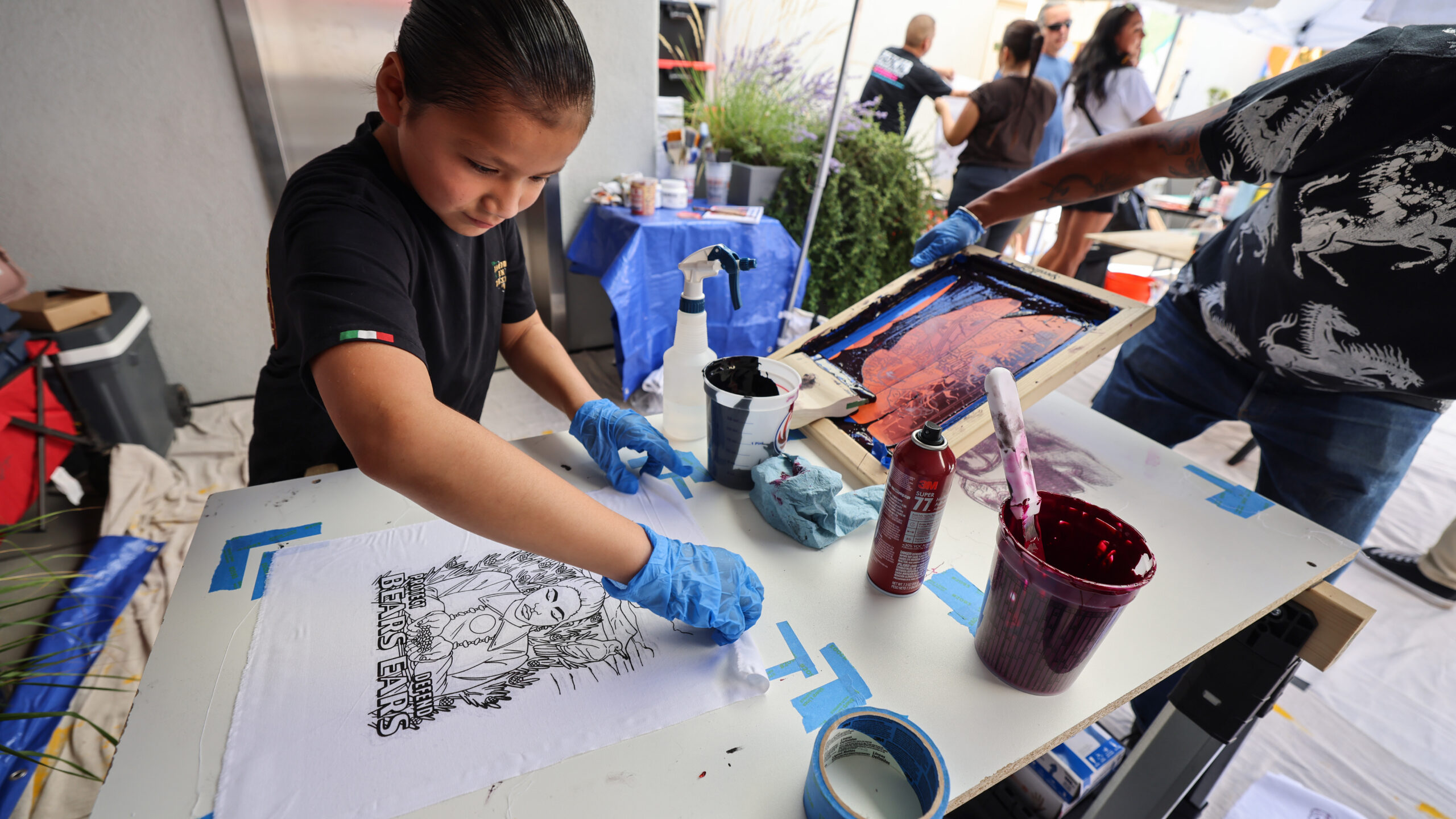
Watch the Full Livestream of the Radical Imagination Experience and Concert on our YouTube Channel
RELATED ARTICLES
Blog | Taking Our Ancestors with Us: Two Artists Cultivate Community Awareness Through Transformative Art
Blog | ‘We Are Here!’: Indigenous Art and Expression from Opposite Ends of Turtle Island
Blog | Community, Salmon, & Water: How Indigenous Illustrator Jackie Fawn Creates Art for the Movement
Press Release | NDN Collective to Hold Free Event Focused on Resistance & Art
Blog | Announcing NDN Collective’s 2022 Radical Imagination Artist & Storyteller Cohort
Blog | NDN Collective Kicks Off Radical Imagination Virtual Festival, A Multi-Day Event
NDN Live | Radical Imagination Virtual Festival
Blog | Announcing NDN Collective’s 2021 Radical Imagination Artist & Storyteller Cohort
Blog | NDN Collective Selects Ten Indigenous Radical Imagination Artists From Across Turtle Island

